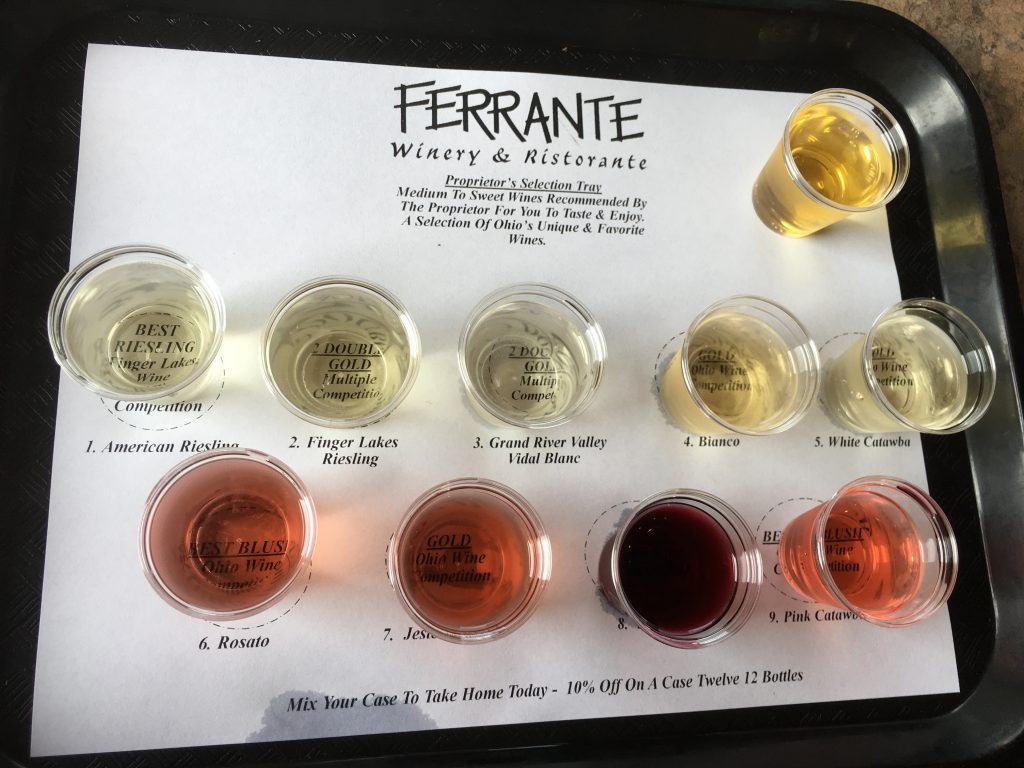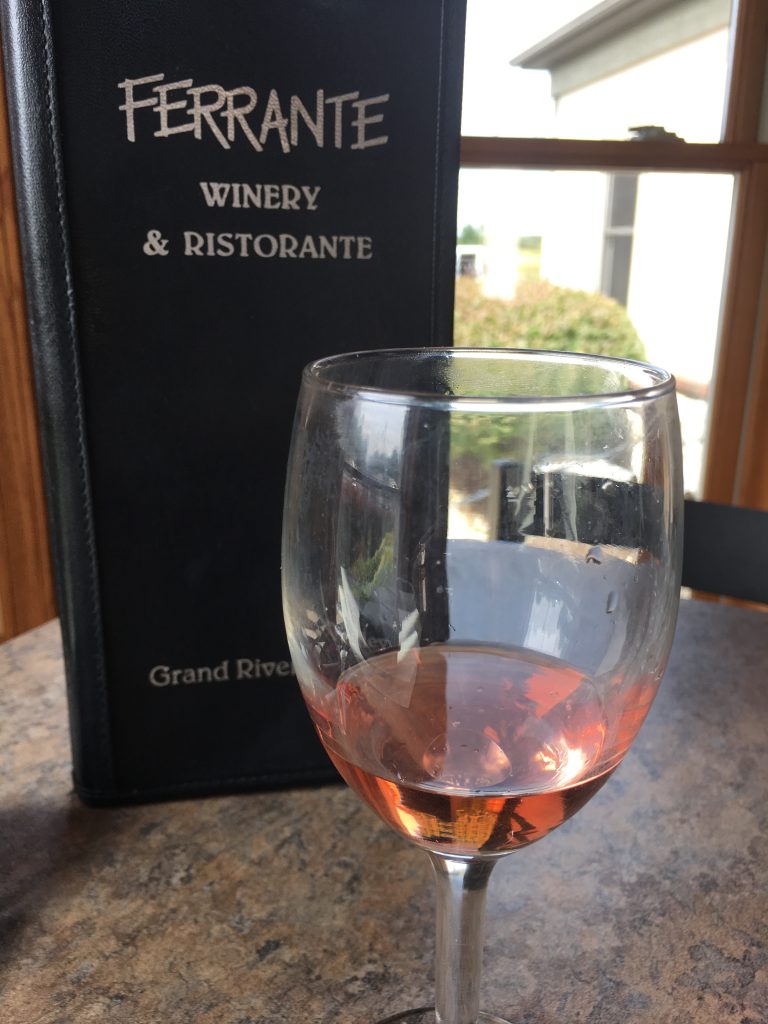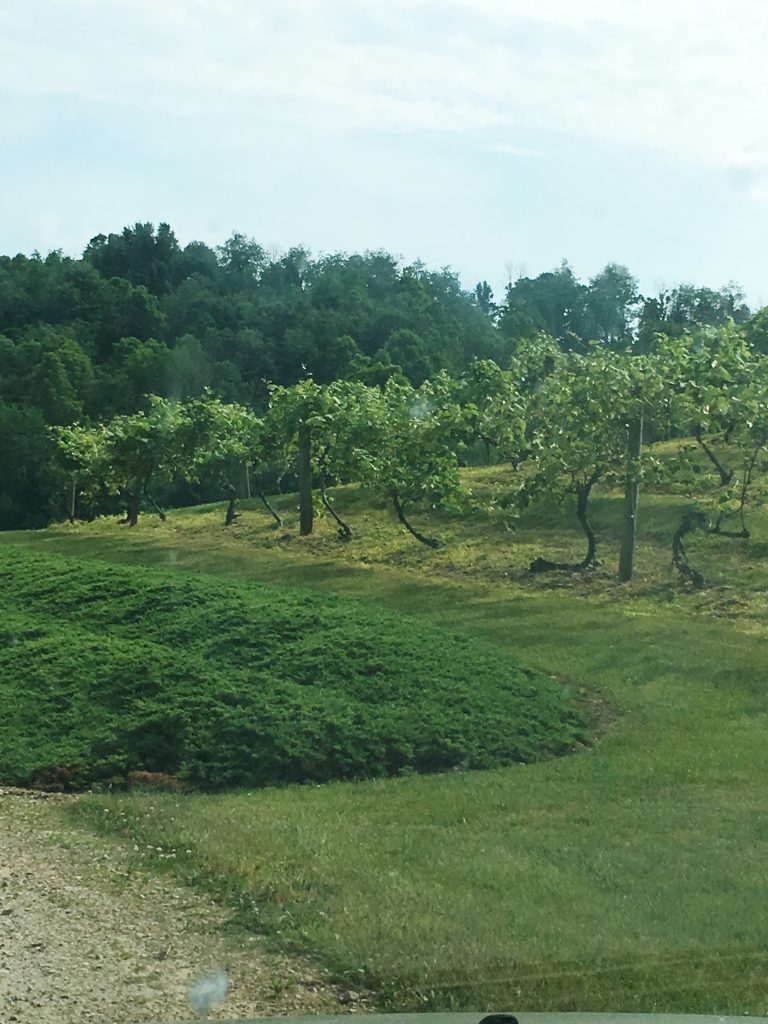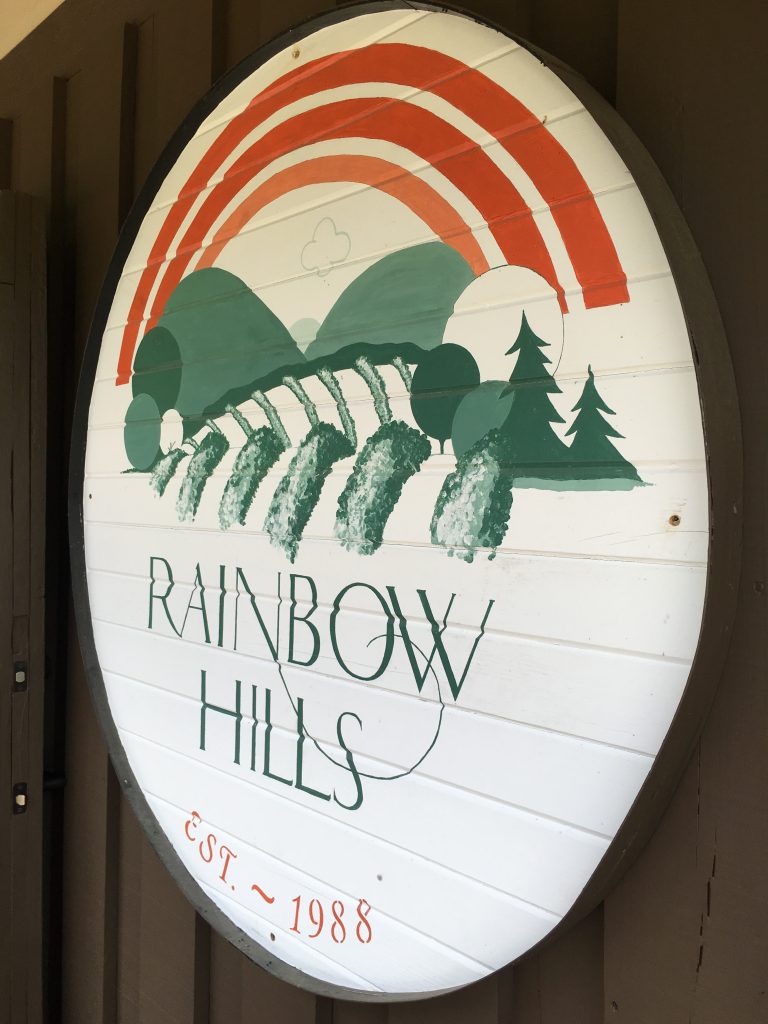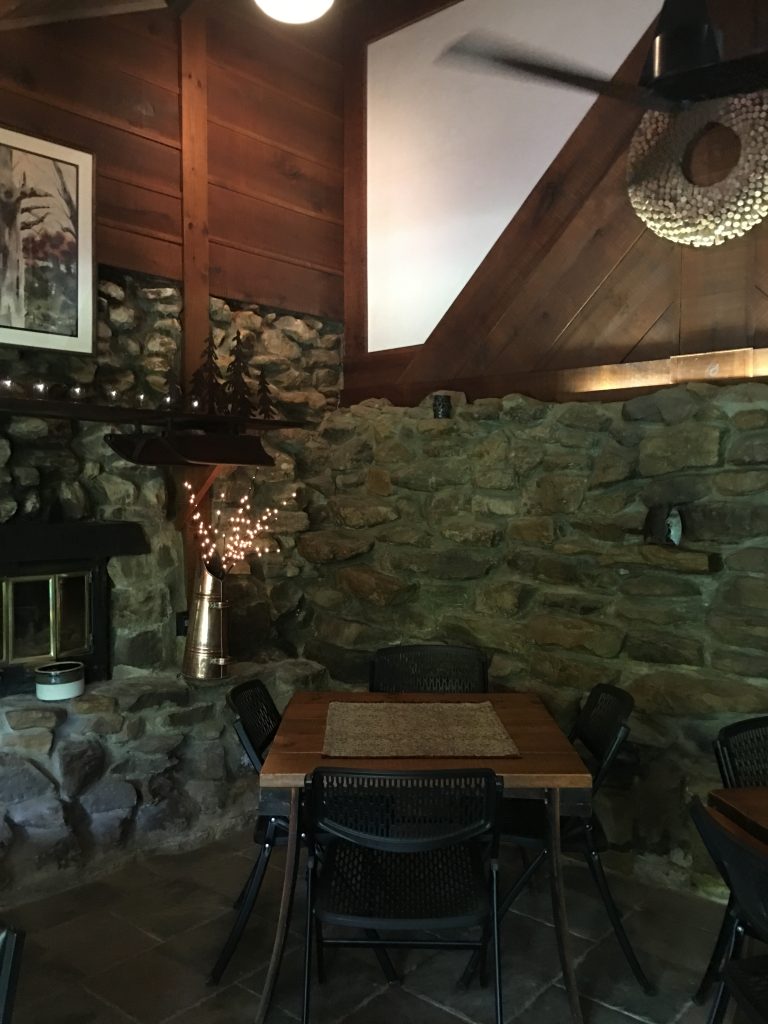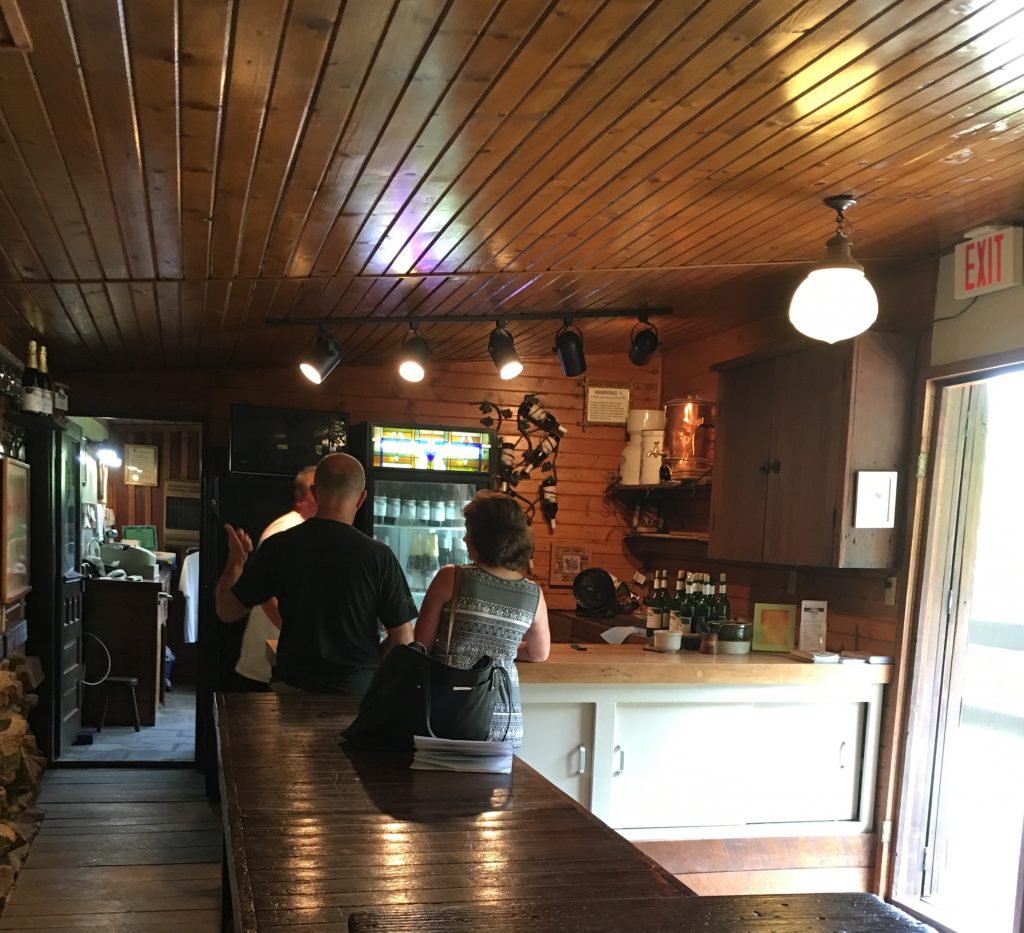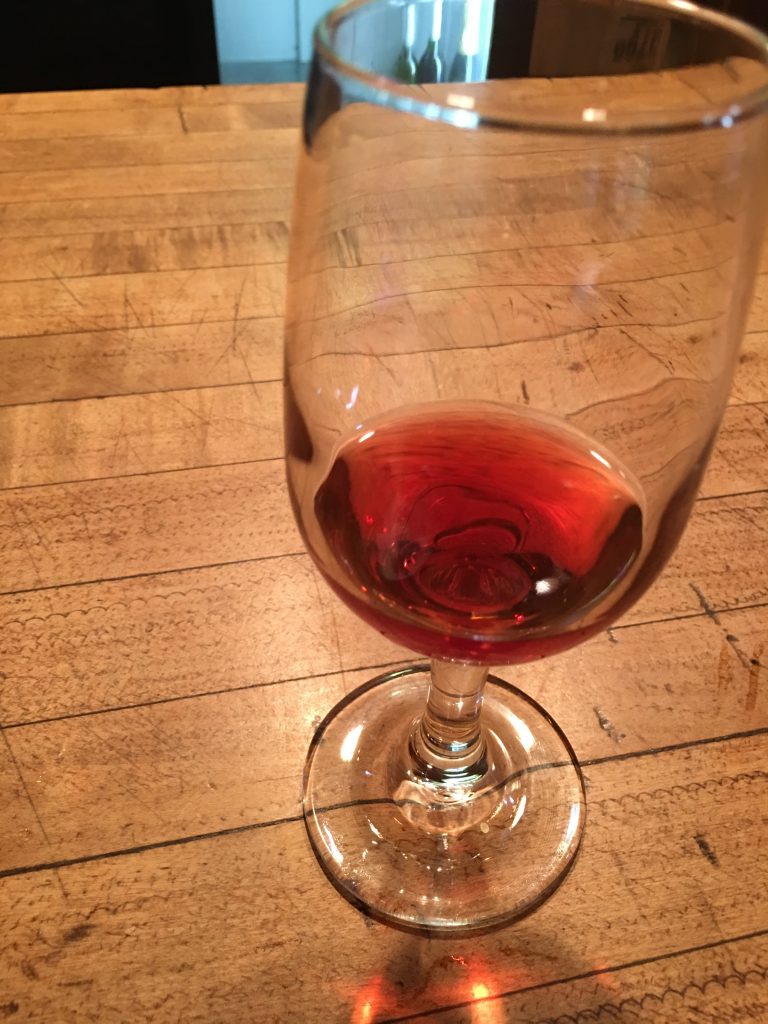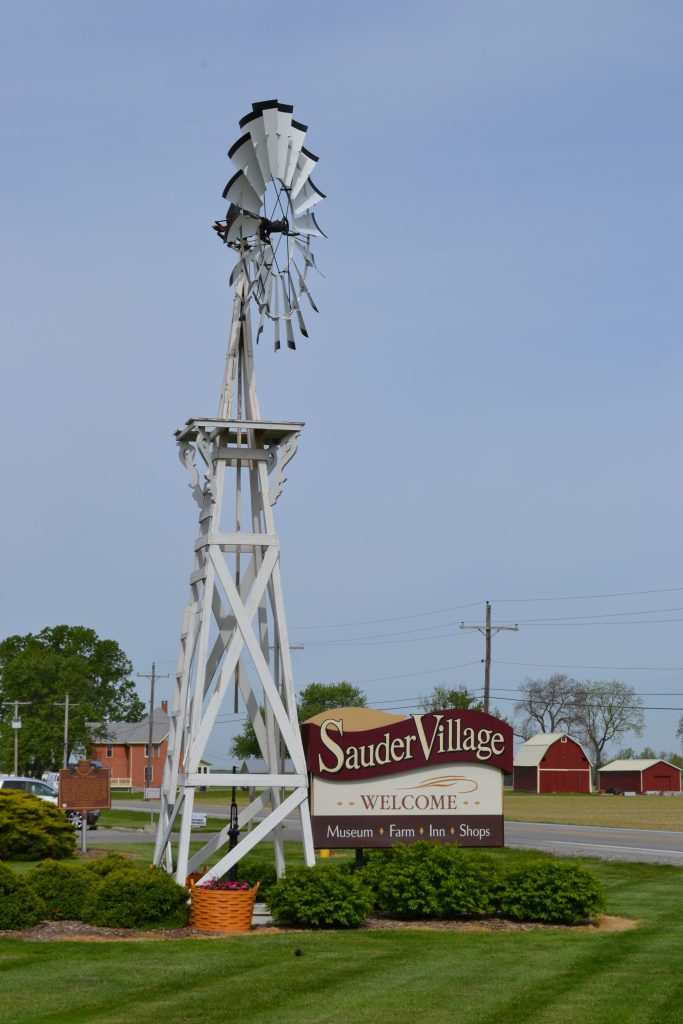
Celebrating forty years as Ohio’s Largest Living History Destination, Sauder Village is an amazing replica of a small town dating between 1803 to the 1920s. From the Natives and Newcomers Exhibit to the Pioneer Settlement, there are close to forty buildings that will transport you back to a simple life on the prairie.
Arriving in Archbold, the Welcome Center was my first stop to purchase my ticket and pick up a map to plan out my day. This expansive center includes a café, gift shop, restrooms and the Greenburg Gallery.
Crossing the threshold, I was immediately transported into another place and time. There were several shops, exhibits and eateries on the Village Green. Surrounded by a small community of historical homes, I began my self-guided tour at Erie’s Farm Shop, “where it all began.”

Erie Sauder felt it was important that people would have a place to visit where they could learn about pioneer life and experience it for themselves. It was his vision that led to the development of Sauder Village.
Since 1976, thousands of visitors have explored this living museum where costumed volunteers reenact the pioneer days and local artisans preserve their amazing craft. Keeping history alive at Sauder Village is a great way to appreciate the challenges and hard work of those who first settled this area.
Erie’s Farm Shop, where 16-year old Erie Sauder began his woodworking company, displays some of his original tools and replicas.
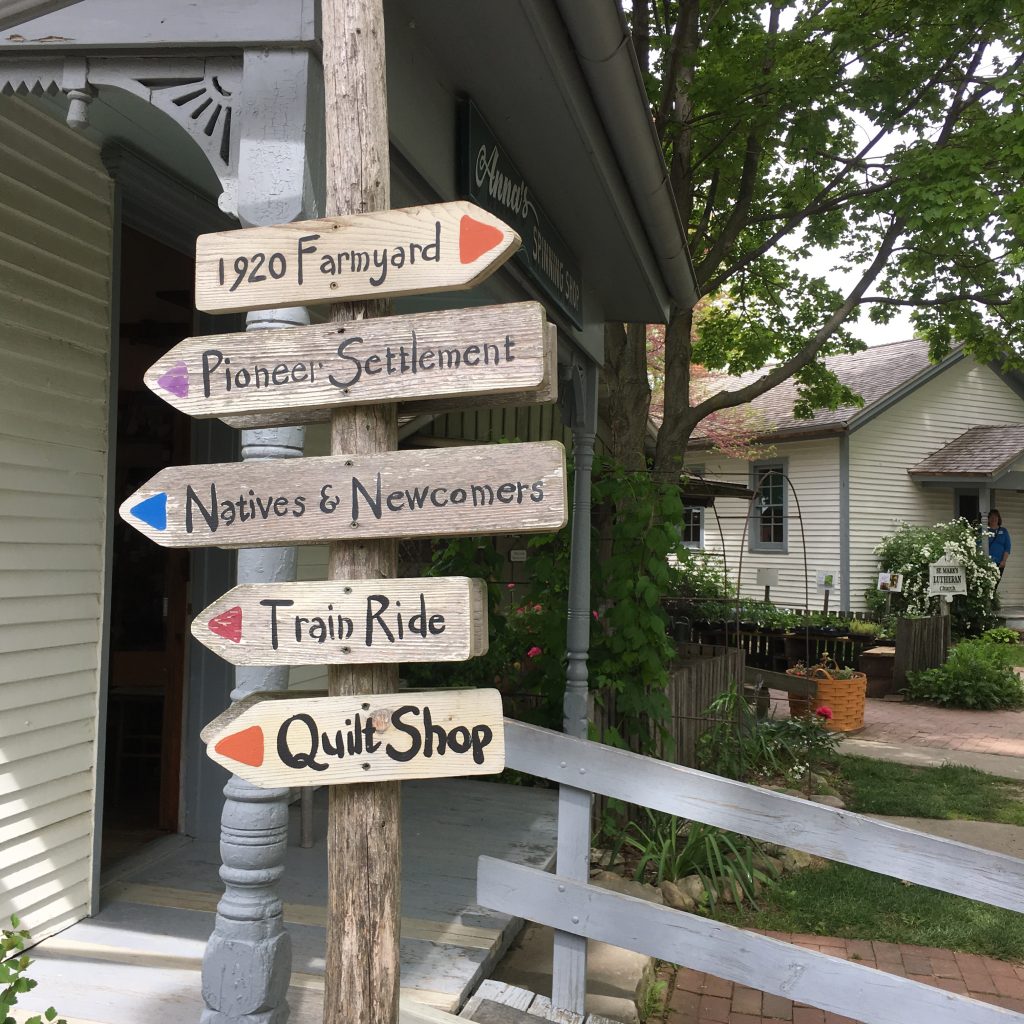
Each building is clearly numbered and guides in period costumes are available to answer any questions.
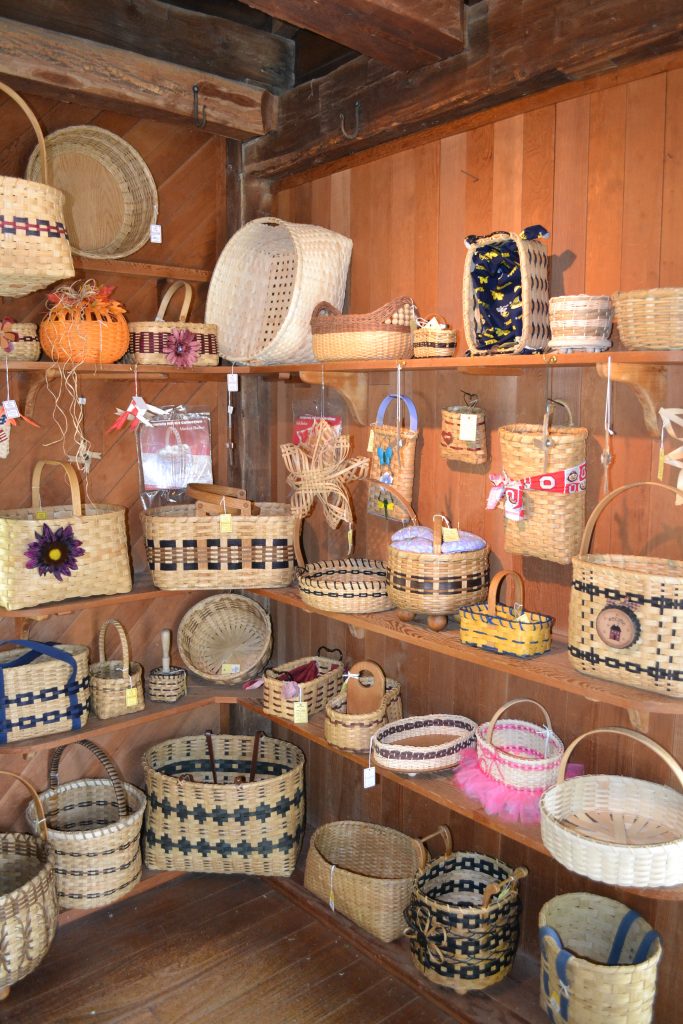
Sauder’s Cabinet Shop contained more woodworking tools. Having once owned a Sauder bookcase, I was interested in learning about his craft. I learned that Sauder had expanded their products to include church pews in the 1930s.
The Basket Shop was located next door to the cabinet shop where I watched creative craftsmen assemble baskets of all shapes and sizes. The final products were available for purchase in their store.

Exiting the Basket Shop I arrived at the Roth Barbershop which was set up as it would have been in the early 20th century. Children giggled as they sat in the barber’s chair begging for a hair cut. Playfully, the attendant declined their wish but set out to explain all of the interesting barber’s tools used for a cut and a shave. While she had their attention, she told us that the men were not permitted to sit in the barber’s chair while chewing their snuff. They had to put it on a shelf were it would stay until the barber services were completed and then they could pick it up and put it back in their lip. The children asked so many questions and it was fun to see them so engaged.
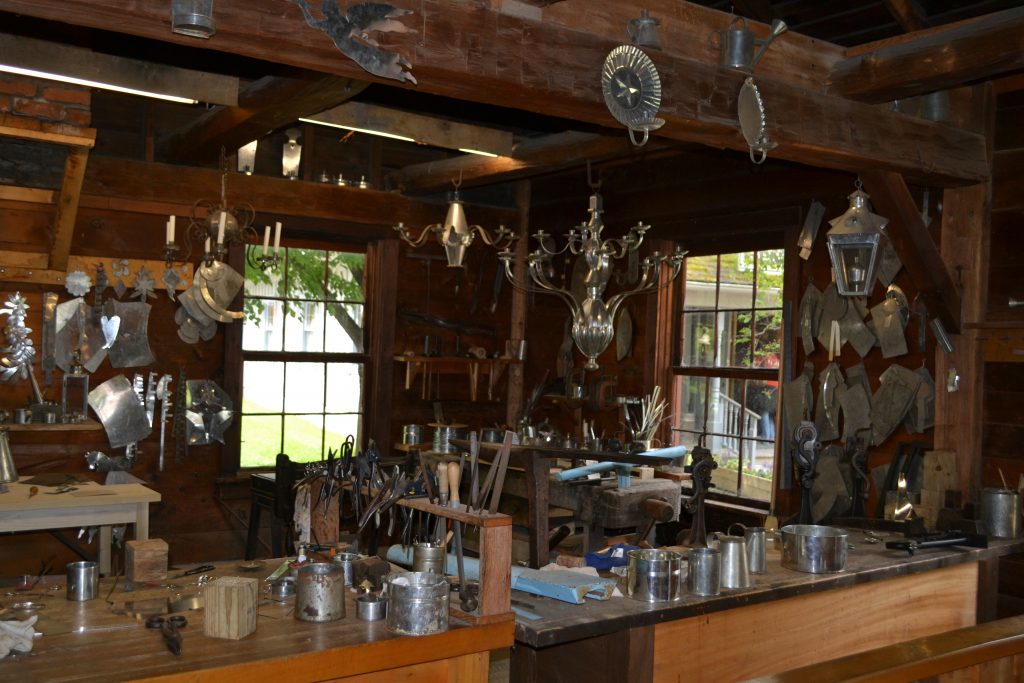
One of the most fascinating stops o my tour was the Tinsmith’s Shop. I was amazed by all of the products that were created here. From candle holders to chandeliers, the extensive collection included a fabulous selection of household items as well as tools and decorative pieces.
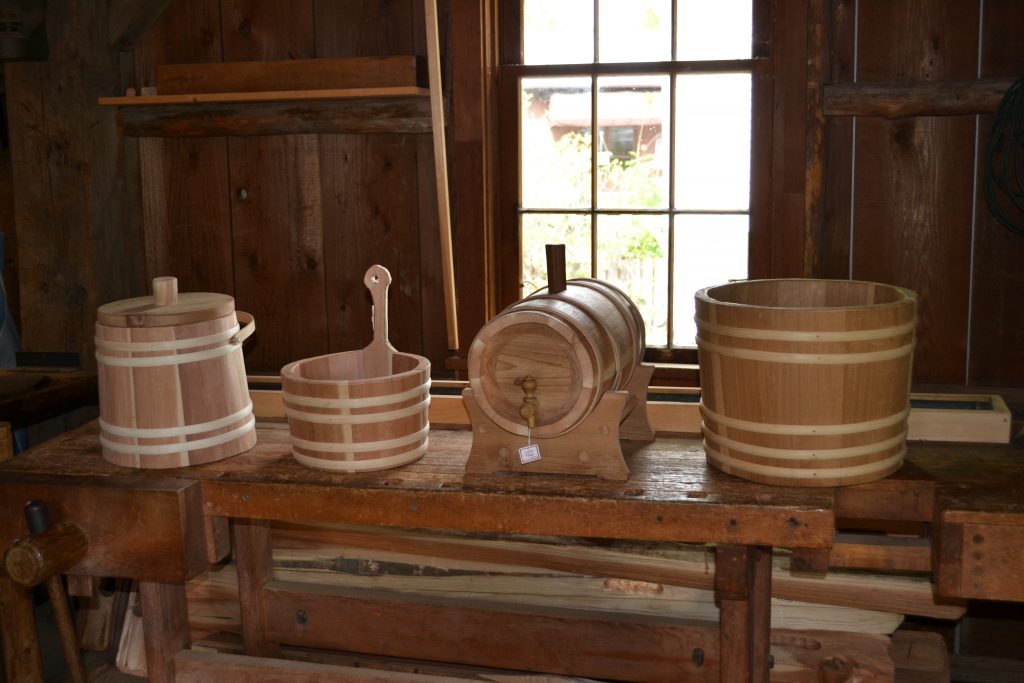
At the Black Swamp Cooperage, I learned that the local craftsman who made the barrels and buckets was called the Cooper. There is a beautiful display of these items that have been handcrafted by experienced woodworkers that one can purchase from the workshop. I love the contrast and design of the wood on these buckets and barrels and was hoping to find a cutting board.

At Anna’s Spinning Shop, a spinner showed our group how to make yarn. Using various types of wools, she explained how first, the wool must be combed and washed before the spinning process could begin. She also told us that the craftsman could control the size of each strand by how tight he pulled the wool as the wheel spun the fibers into string. Children as young as 3 years old would help in the process of making yarn and it was usually their job to comb the wool. From the start of creating the yarn to the knitting of a sweater, the process could take anywhere from six to twelve months.
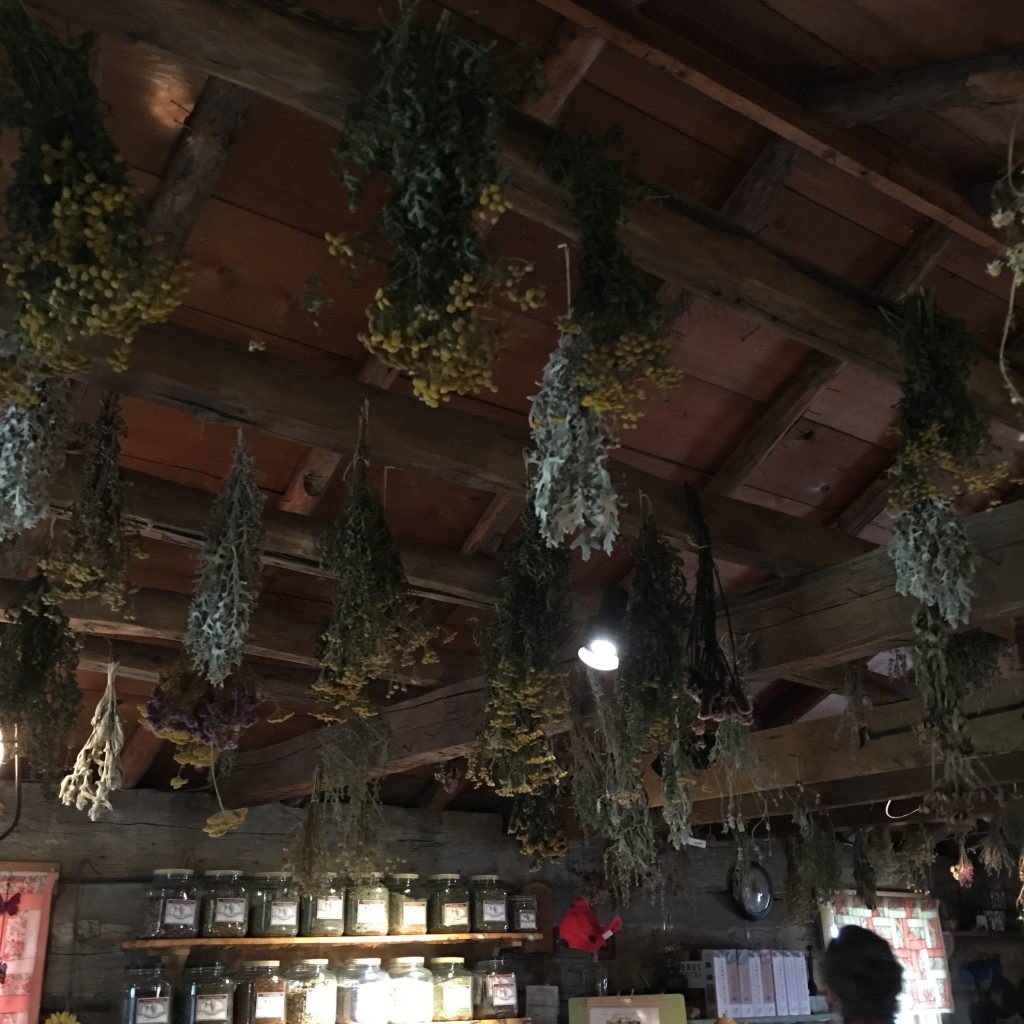
Stepping into the herb shop, my eyes were immediately drawn to the ceiling where bundles of herbs hung from the rafters. Herbs were not only used for cooking, but for other medicinal purposes, decorating needs and to freshen their homes. It smelled fantastic as I steeped inside to look over the herbs and spices they offered for sale.
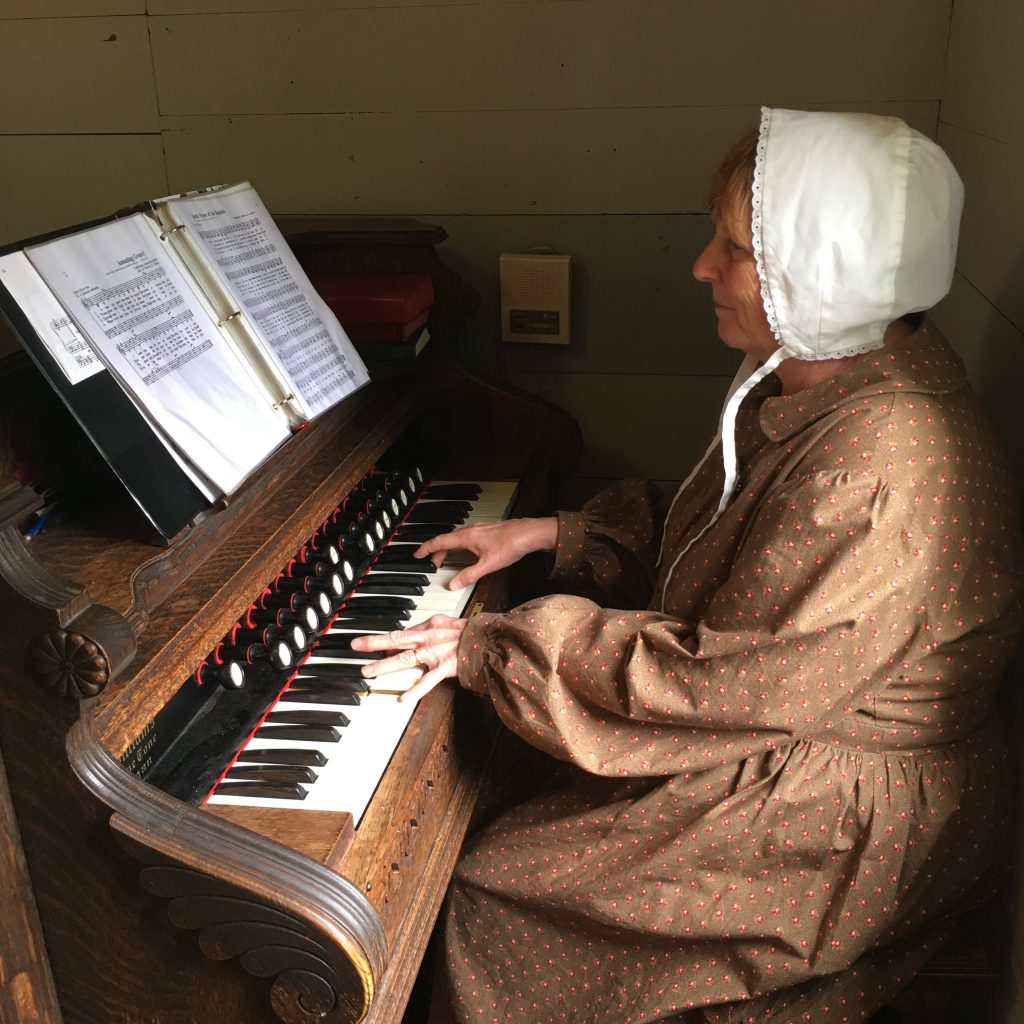
Feeling a bit underdressed entering St. Mark’s Lutheran Church, I was greeted with a smile by the organist. She was eager to play a song on the organ. Once a local German Lutheran church, it was once a place of worship for Black Swamp families in the 1900s. Equipped with church pews, a pulpit and an authentic pipe organ, the acoustics were perfect for a rendition of Amazing Grace on the 100 year pump organ.
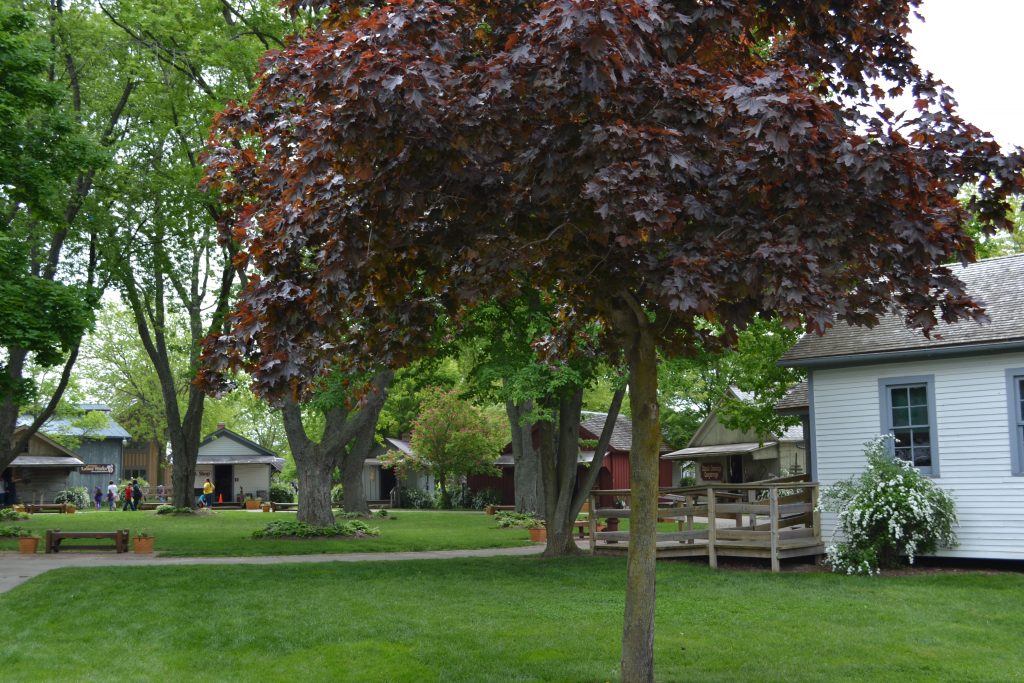
I explored the sites surrounding the Village Green and looking back into the circle, I realized how much I had learned about the first settlers that arrived in Fulton County. Next stop, the Elmira Depot.
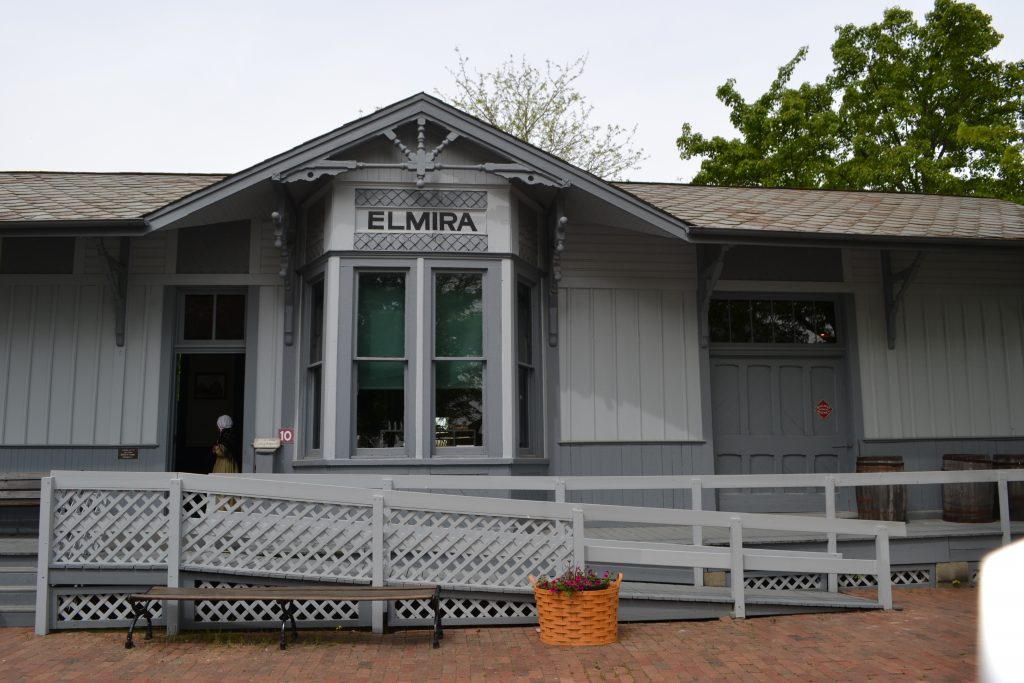
The Elmira Depot was an original train stop along the Wabash Railway just a couple of miles from Archbold. Passengers could ride the Wabash Cannonball on the Detroit – St. Louis route starting in 1949. The depot was in use until It was brought to Sauder Village in 1968 and this is definitely one of the highlights of the park.

Inside, kids had a blast weighing themselves on the scale used to weigh goods transported by train.
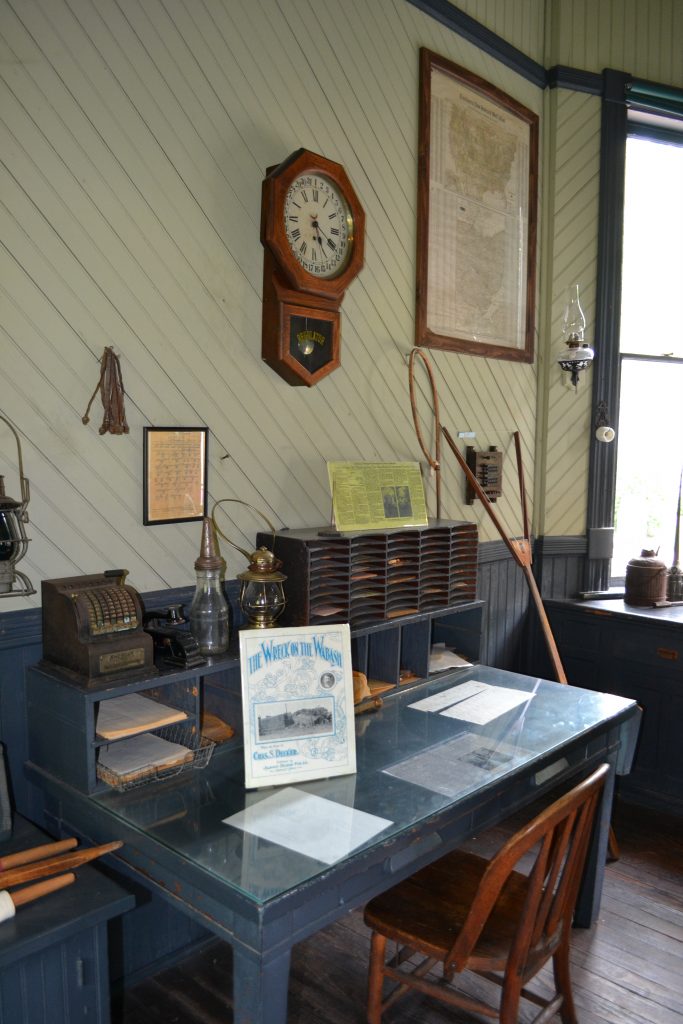
I entered through the door opposite of the scales into the administrative office. Passengers could purchase their tickets while assistants sent telegraphs and carried out secretarial tasks.

My favorite part of the depot was the Baggage Room where objects that were transported on the railways were on display. Shipping routes were published on a large map while a placard displayed the American Morse Code. I watched a group of children try their hand at sending a telegraph using the morse code chart above the machine. Most of them opted to tap out their names and were having a great time pretending to send messages from one station to the next.
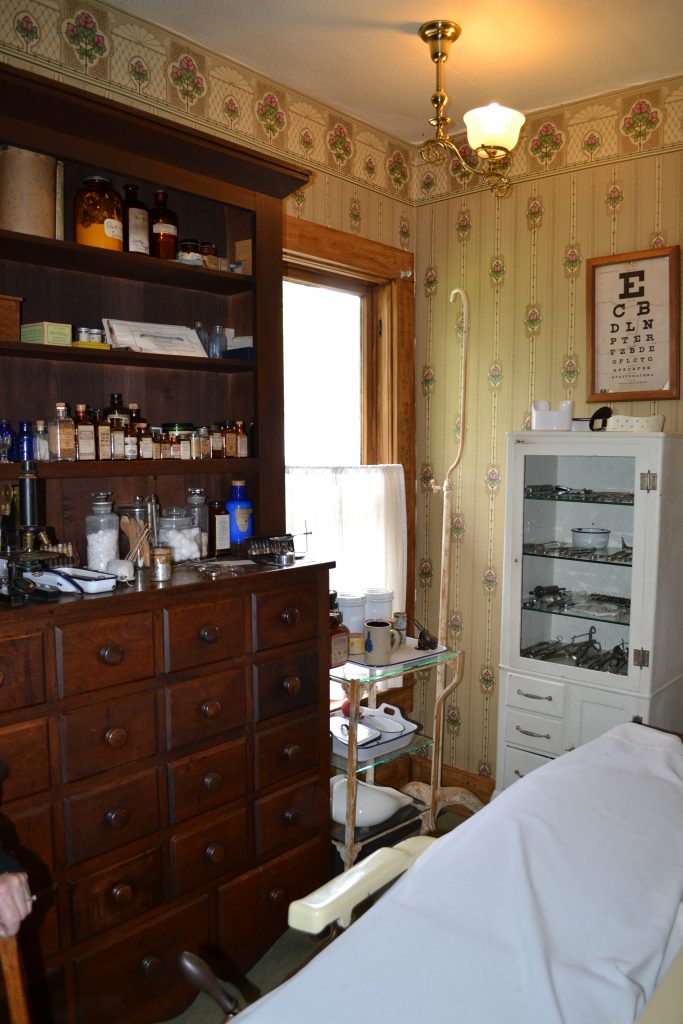
Just a few feet away I explored Dr. McGuffin’s Office. I was reminded of how far we’ve come from the medical care that was available back in the late 1800s. Sometimes the doctor would not only have to help the local people who were sick, he may have also had to act as the local dentist by pulling a tooth or make house calls to tend to an injured horse. He had a very important job within the community and was a well-respected figure.
I was impressed with the medical instruments encased in cabinets and the medicines and herbal remedies that were sitting on the shelf. The doctor was also in charge of prescribing medication which would have been kept on the premises. From his office, he could administer the treatment or make house calls.
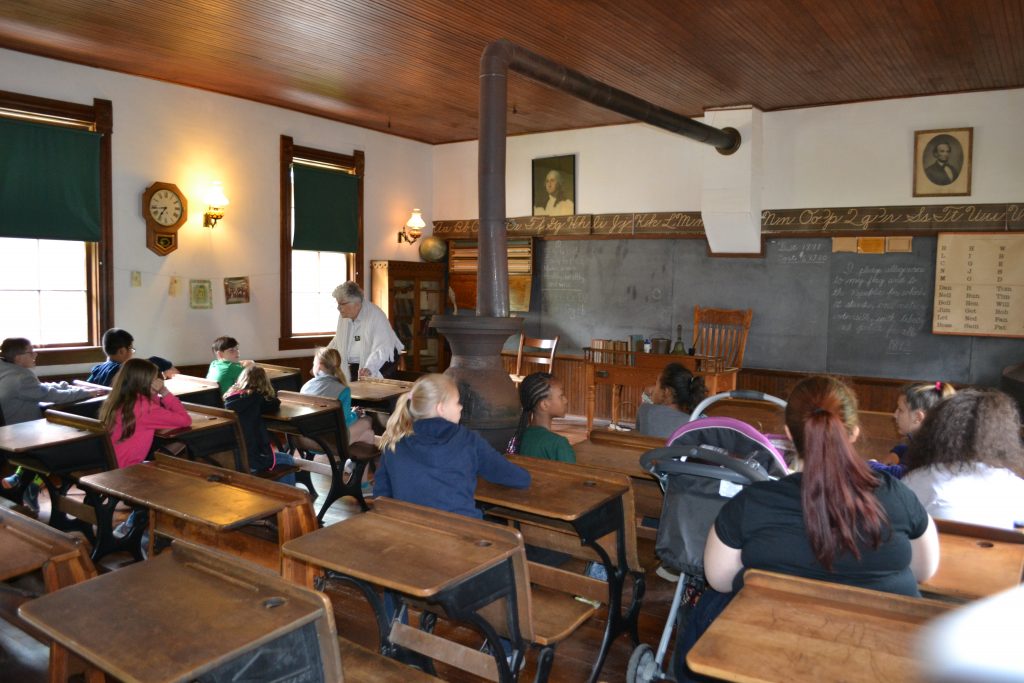
The next building on my Sauder Village map is the District 16 Schoolhouse which was an original one-room school house where children attended school. The teacher played an important role, not only in the teaching of the children, but attending to additional duties. Some of these responsibilities included chopping firewood for the stove or ensuring that there was plenty of water in the bucket from which the children would drink throughout the day. Children that attended rural schools were only required to complete an 8th grade education and the ages of the school children could range from ages 6 years to 21.
With so many levels of education coming together in one room, it must have been a challenge for the teacher not to mention giving each student the attention they deserved.
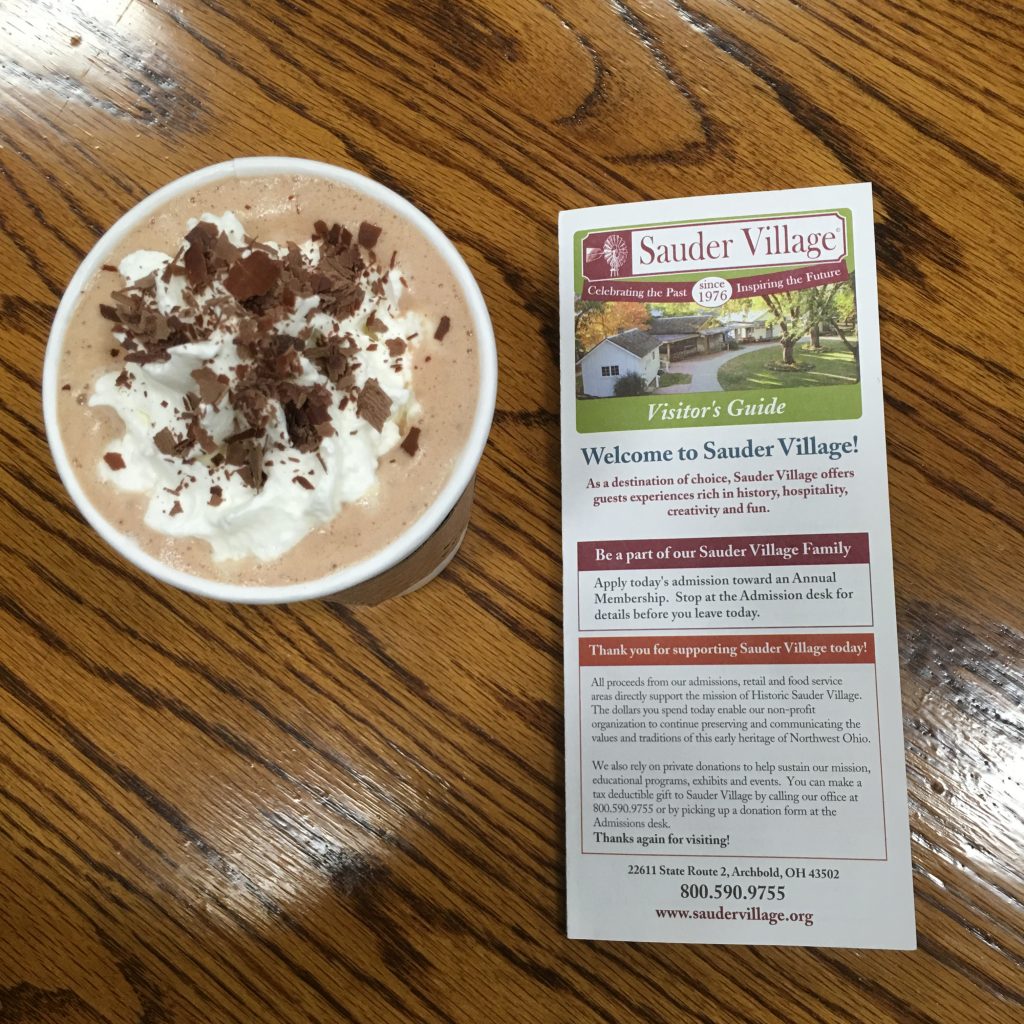
I was nearly halfway through the list of historical buildings when I happened upon the Stella Leona Chocolates & Coffee shop. It was a welcome sight to enjoy a café mocha and the milk chocolate shavings. I was tempted to try one of their delicious chocolates, but decided to wait until after lunch. With a little energy boost, I was ready to tackle the remaining sites.

For those that love to quilt, the Threads of Tradition Quilt Shop should be on the top of your list. I was able to find out anything and everything I have ever wanted to know about quilting. There are over 3500 bolts of fabric, patterns, instructional books, gifts and hand quilting demonstrations….every quilter’s dream.
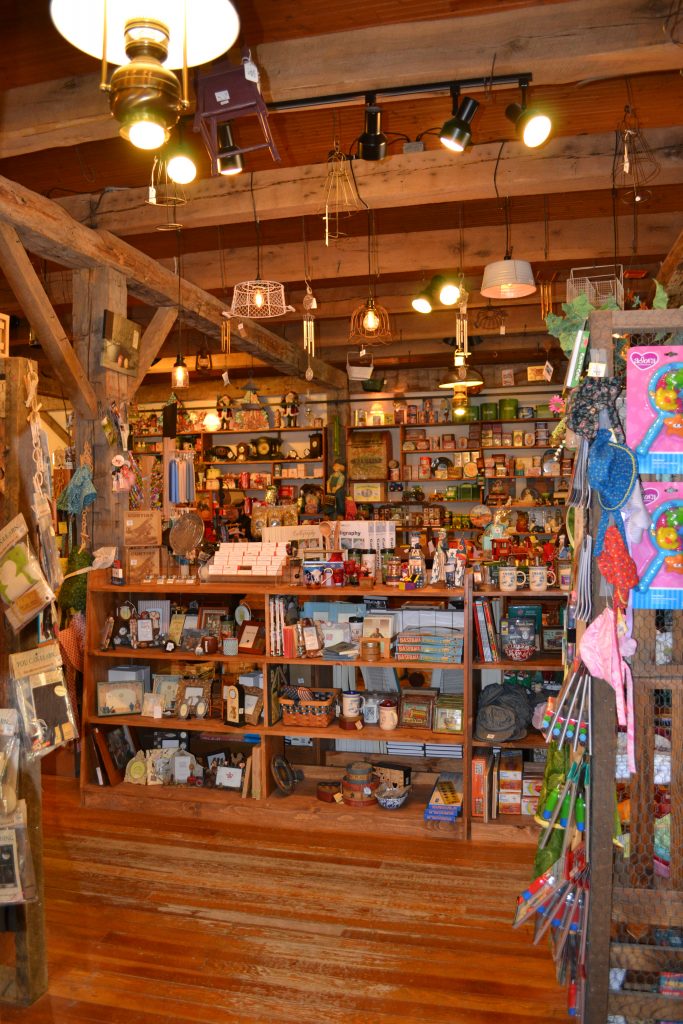
Not far from the Quilt Shop is Lauder’s General Store. This place is a museum in itself with so many products that were popular in the 19th and 20th centuries as well as those items that even interest kids today. I took a walk down memory lane checking out past toys that I remembered as a child. In some ways it reminded me of the mercantile in Little House on the Prairie but with a focus more on toys, dolls, and its candy collection. I could have easily spent hours in this store.
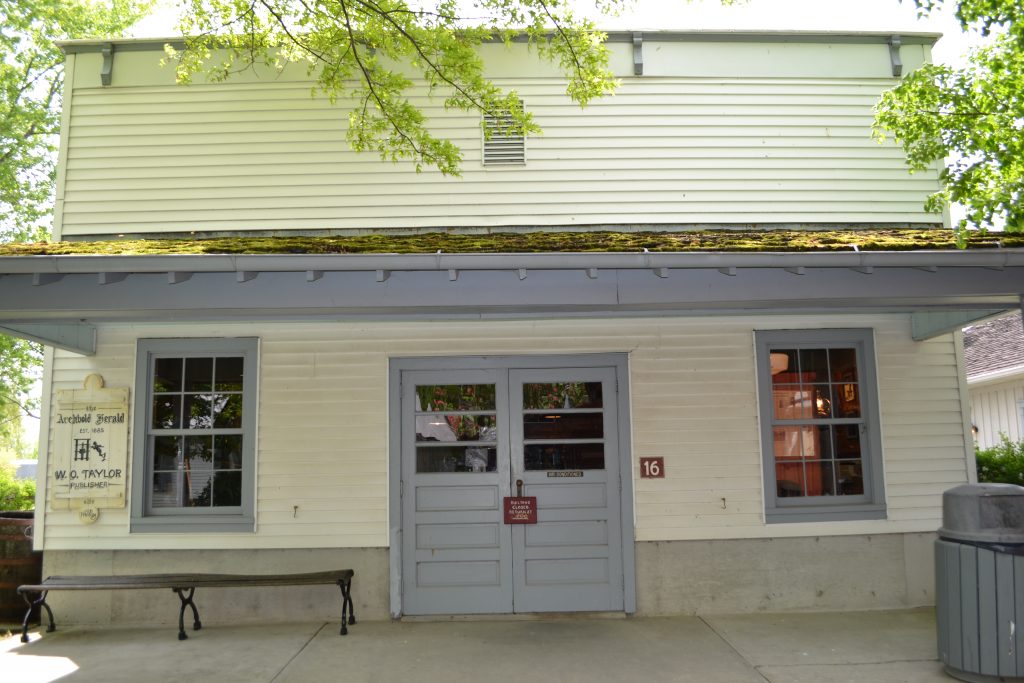
I quickly passed by the The W.O. Taylor Printing Office on my way to visit Burlington Glass Works. The building was closed for the day, but it was once the newspaper office of Archbold in the early 20th century. It would have been fun to see the printing presses and possibly some historical newspapers.

I overheard that the glass maker, Mark Matthews had just fired up his oven and was preparing to create one of his internationally acclaimed glass products. When I arrived, the glass was heating up so I decided to stay. Within minutes he began to manipulate the glass that would later be used to create some of his fascinating, colorful marbles.
I was surprised at the length of the process, so I did not to see the final masterpiece, but I am sure it was spectacular. Inside of his studio, he displayed many of his works which were available for sale.
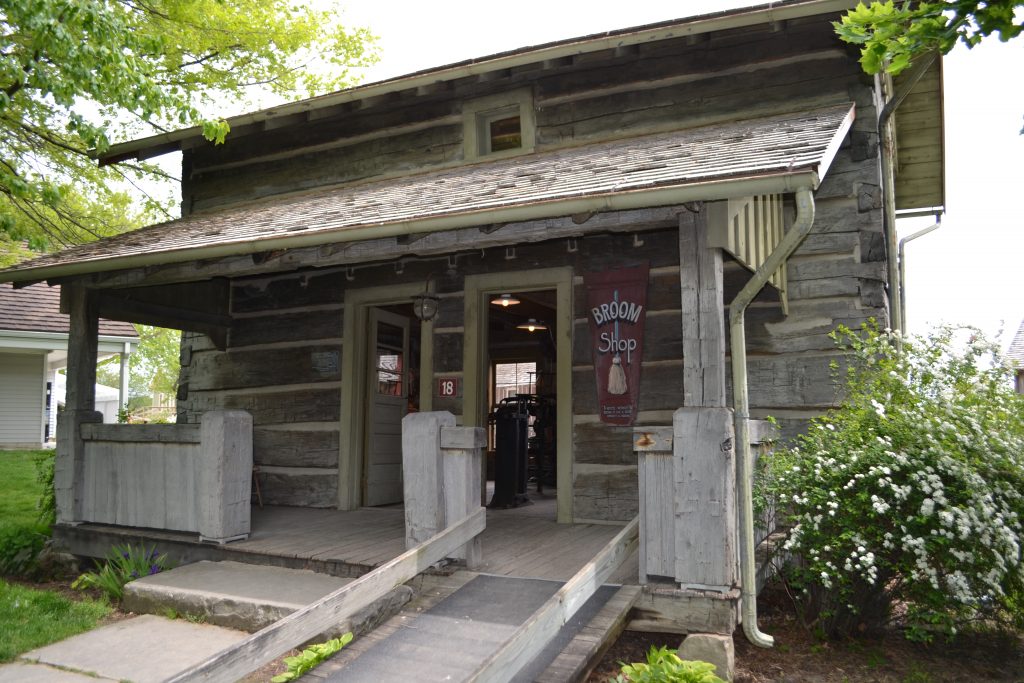
My last stop before heading out towards the perimeter of the village was the Broom Shop.

It was entertaining and educational to watch the talented broom maker create a decorative broom. There was a large selection of brooms for sale and it took some time for me to made a selection. I have often heard that handmade brooms work amazingly well when sweeping floors and was happy to have purchased one.
Exiting the ship, I realized I was close to the parking lot, so I took my new broom to the car and would start my tour again at the 1920s Grime Homestead. I couldn’t wait to explore the rest of this amazing village.
Please note that this is Part 1 of my visit due to the extent of the amazing opportunities to learn about the historical sites. Check out Part 2 and Part 3 to read about the second half of my exploration of Sauder Village.
Have you had the opportunity to visit Sauder Village? What was your favorite place to visit or activity while you were here? I would love to hear about your experience if you would kindly leave a message in the comments section below! Many Thanks and Happy Travels!
What to See and What to Do:
Sauder Village Living History and Farm
221611 OH-2
Archbold, OH 43502
Telephone: 419 446 2541
- Admission Fee: Adults: $24; Students, Ages 4 – 16: $18; Children, Ages 3 and under: Free; Seniors 60 and over: $22. person is permitted. 2-day Admission: Adults, $38; Students, Ages 4 – 16: $26; Valid for 2 consecutive days, non-transferable. AAA Discount: $2
- Hours: Spring (May 3 – 27): Open Wednesday to Saturday from 10AM to 3:30PM; Saturday 10AM to 4PM; Summer (May 31 – September 2): Open Wednesday to Saturday from 10AM to 5PM and Closed Sunday, Monday and Tuesday. Fall Hours (September 6 – October 8); Open Wednesday to Friday from 10AM to 3:30PM and Closed Sunday, Monday and Tuesday.
- Length of the Tour: From 2 hours to 2 days.
- Tips for Your Visit: Wear comfortable shoes as you walk through time visiting historical buildings. Download the map ahead of time and plan your day. There are several classes and demonstrations that you won’t want to miss. While there are several small shops to visit, make plans to eat at the Barn Restaurant for down-home cooking.
Where to Stay:
Sauder Heritage Inn
22611 State Route 2
PO Box 235
Archbold, OH 43502
Telephone: 800 590 9755
If you are traveling by RV, make reservations at the Sauder Village Campground.
Where to Eat:
The Barn Restaurant
22611 State Route 2
PO Box 235
Archbold, OH 43502
Telephone: 800 590 9755
Select the buffet or order from the menu loaded with down-home recipes.
What to Eat:
- Meatloaf with Mashed Potatoes
- Soups and Salads
- Fried Chicken
- Roast Beef Dinners
What to Read:
- Heritage of the Black Swamp, by Cynthia Covert Harger
Photo Guide to Sauder Village
- Visit Sauder Village in the spring for newborn baby animals
Disclosure: Please refer to our blog disclaimer tab for more information.
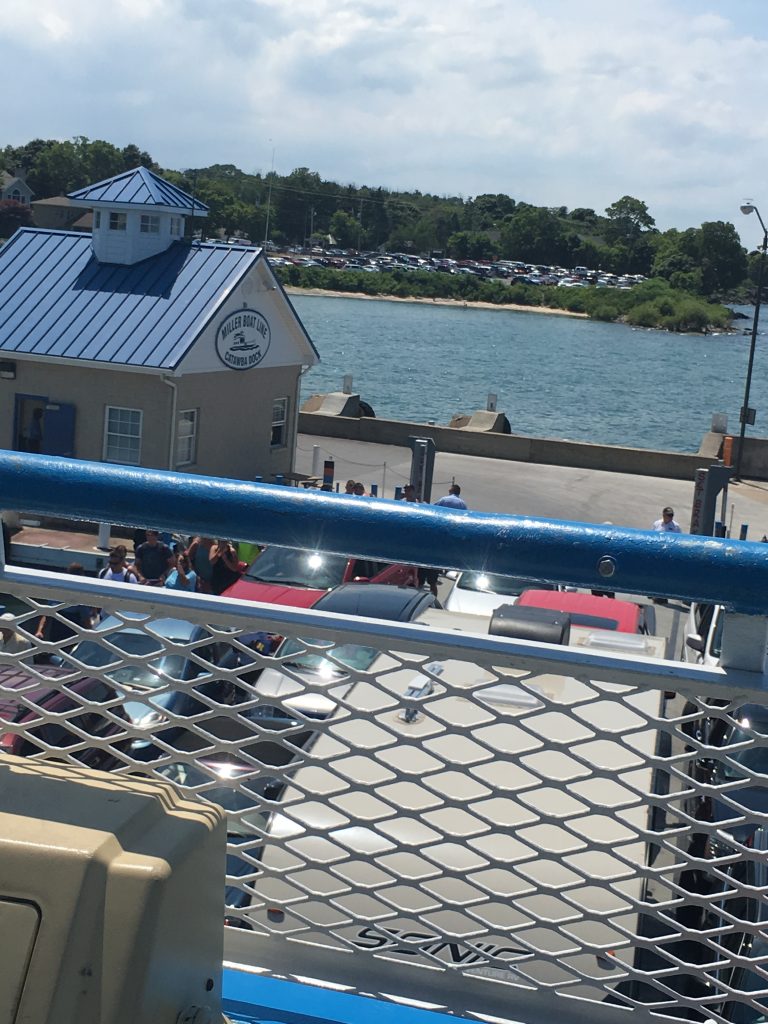
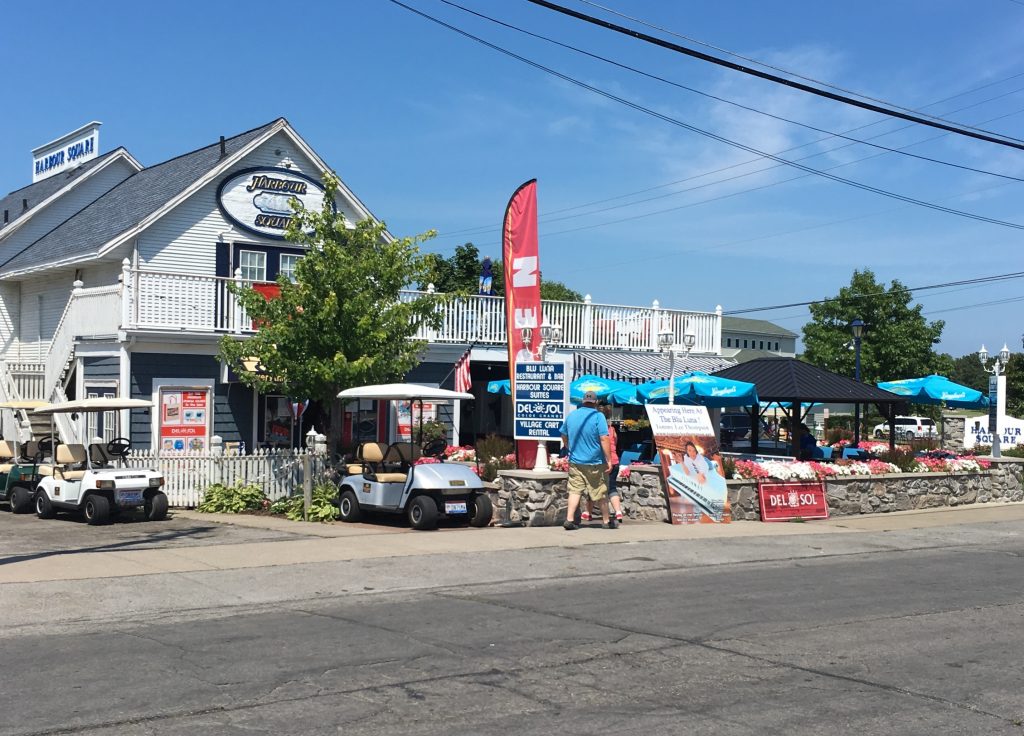
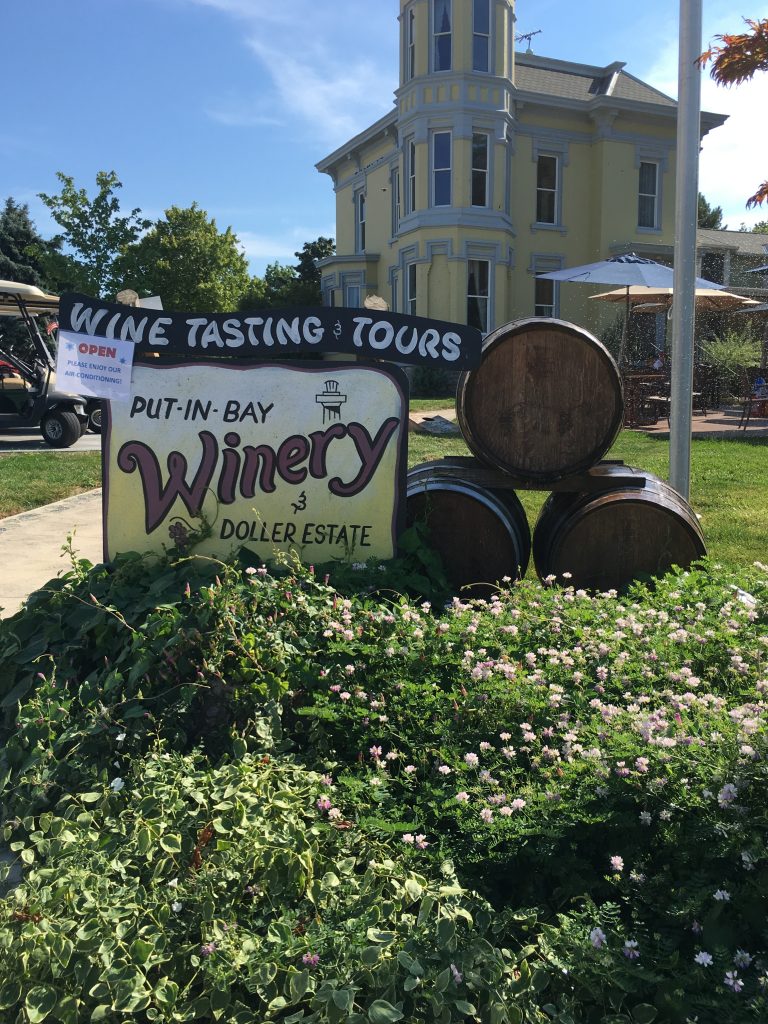



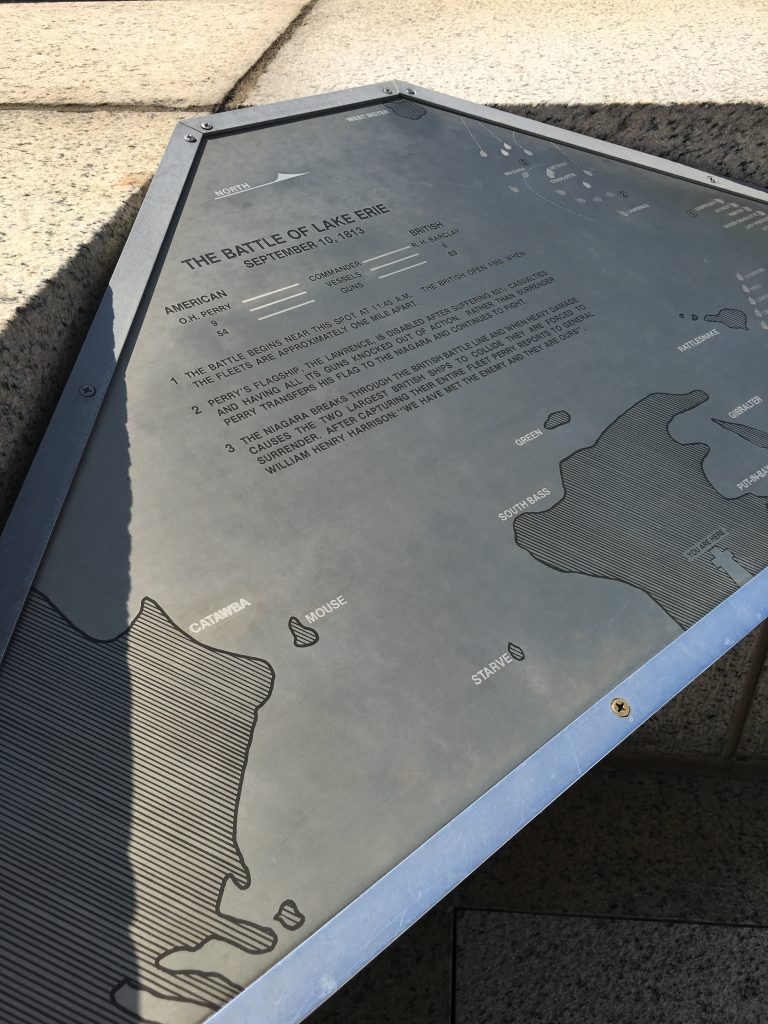
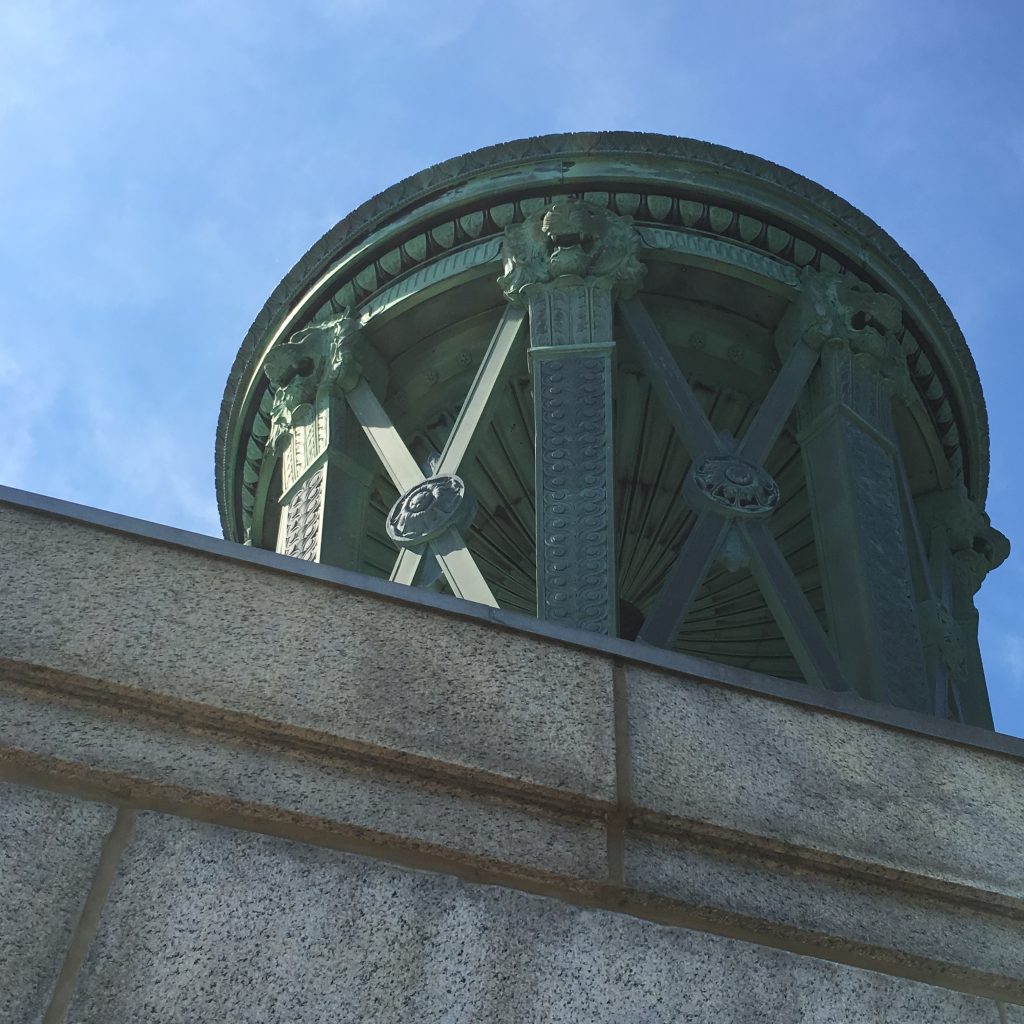
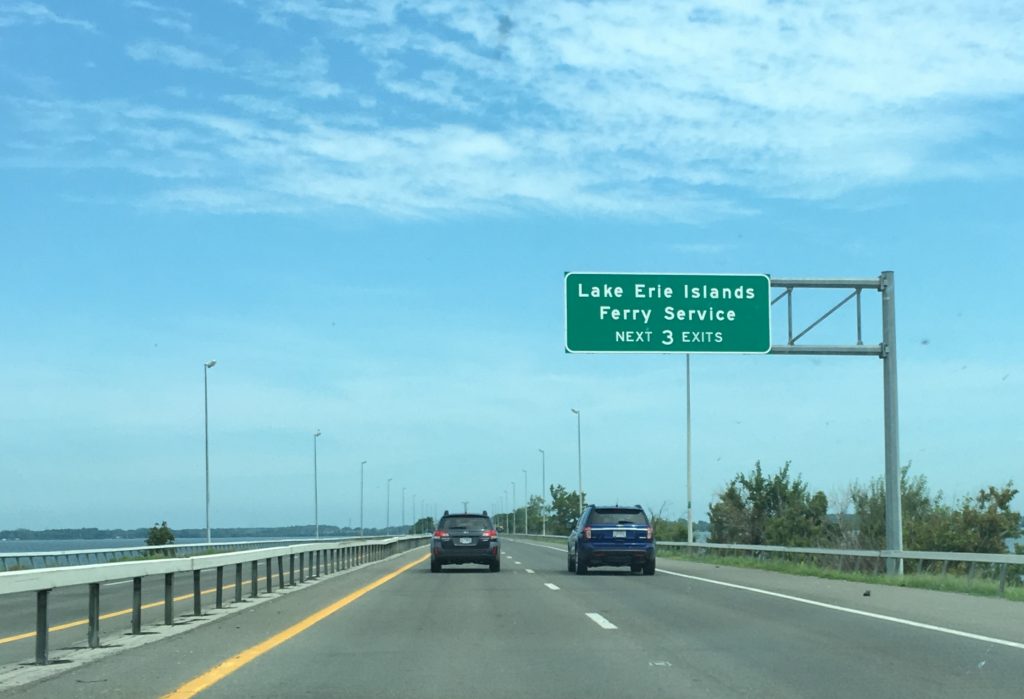


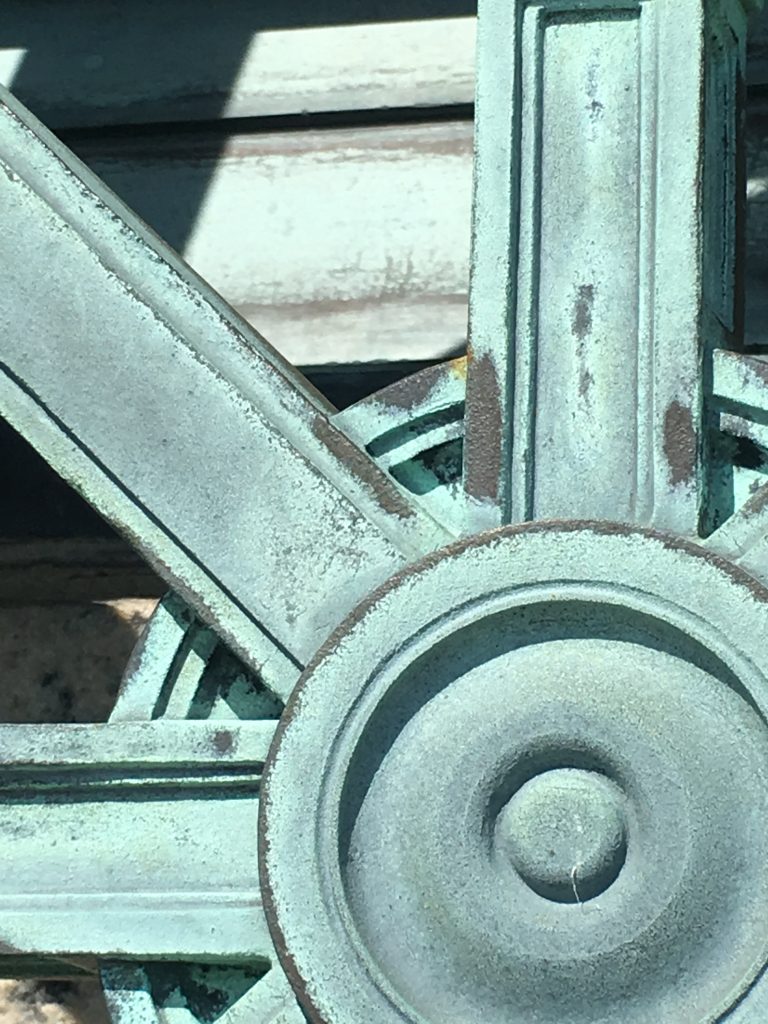

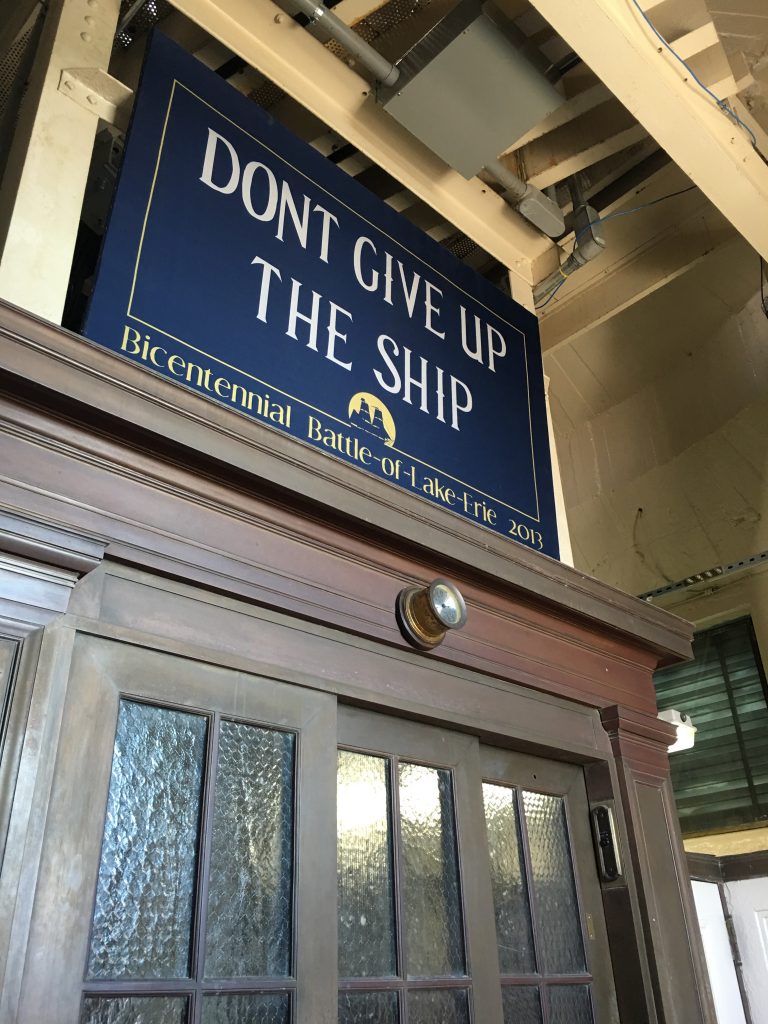

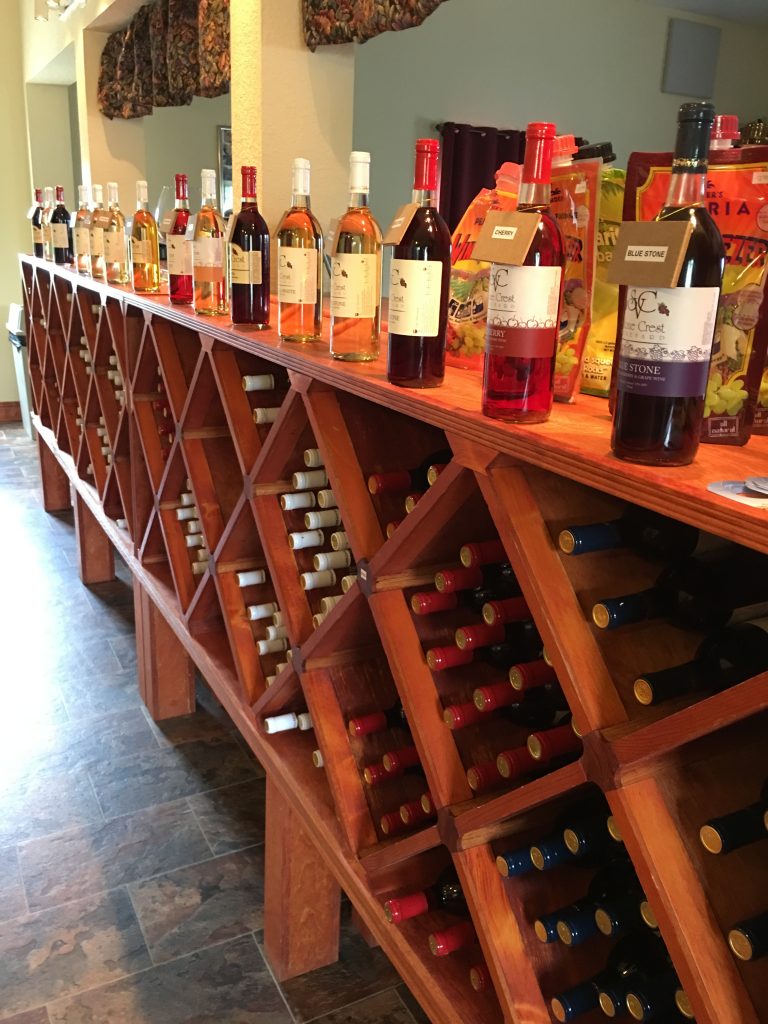
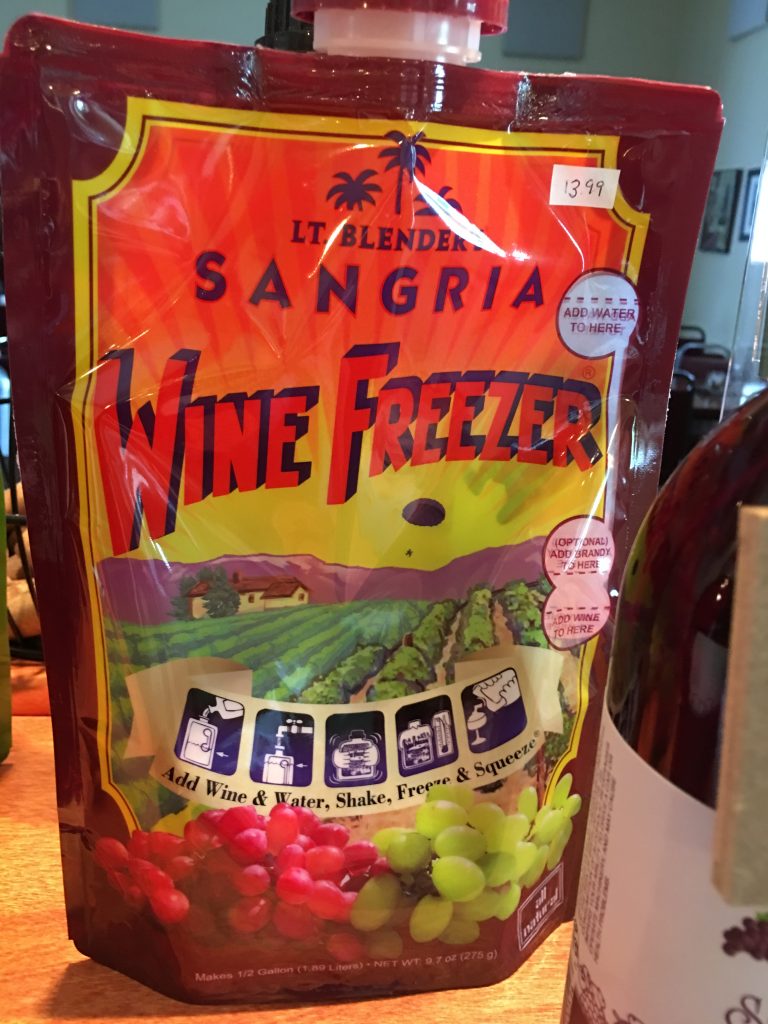
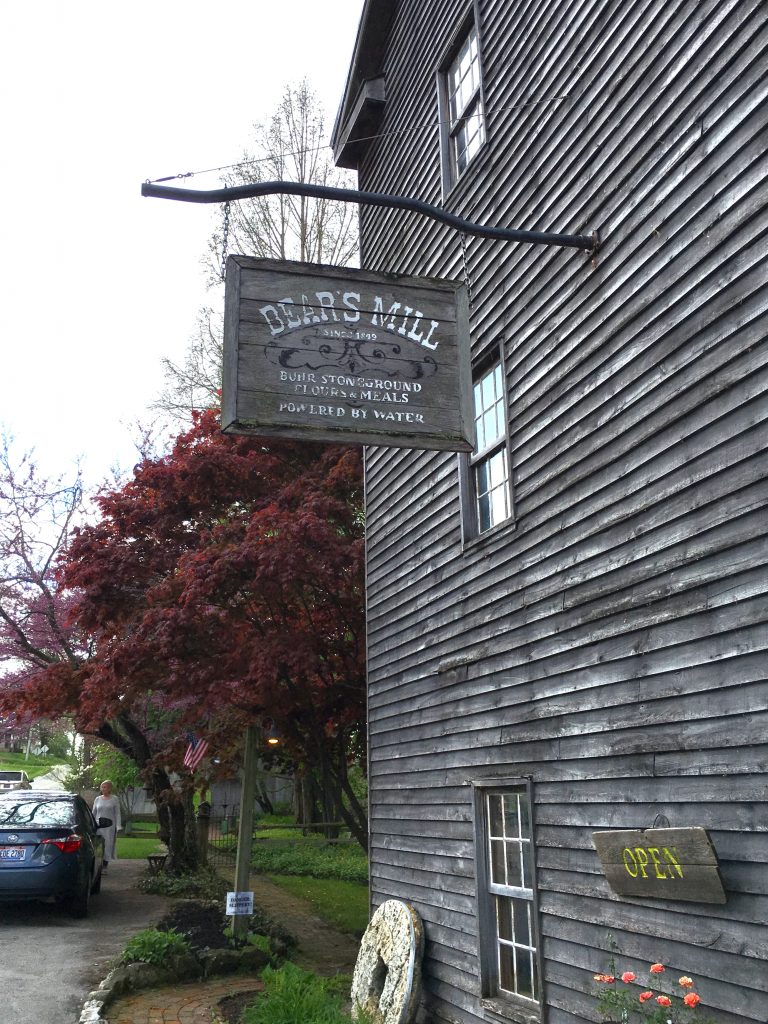
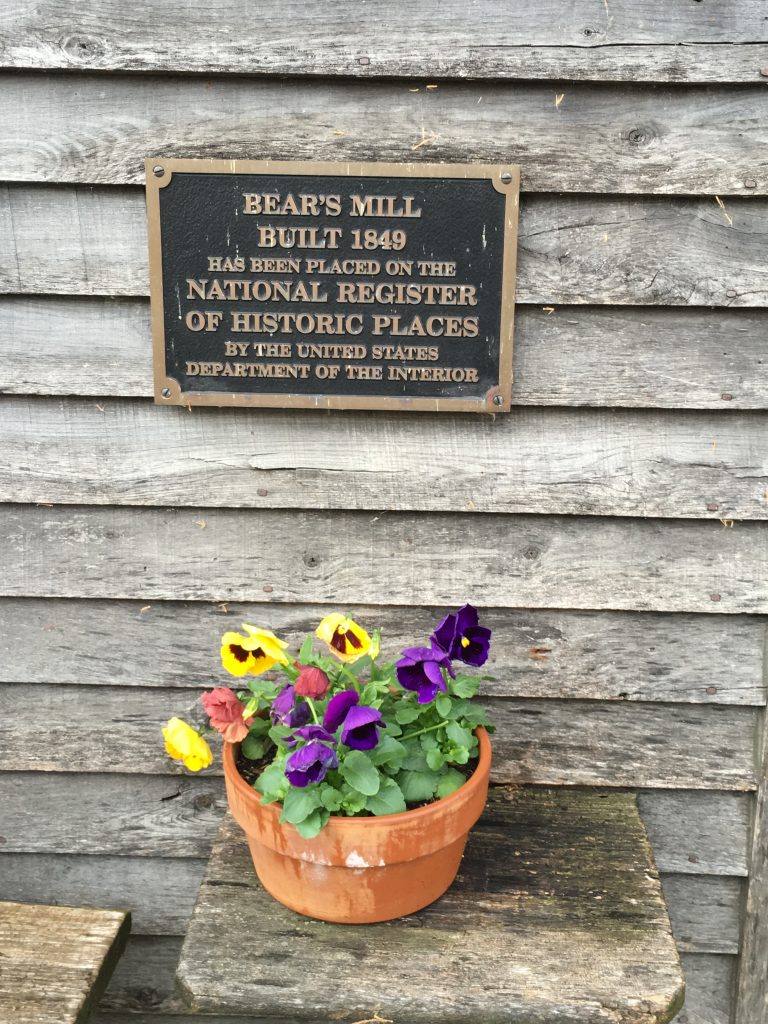

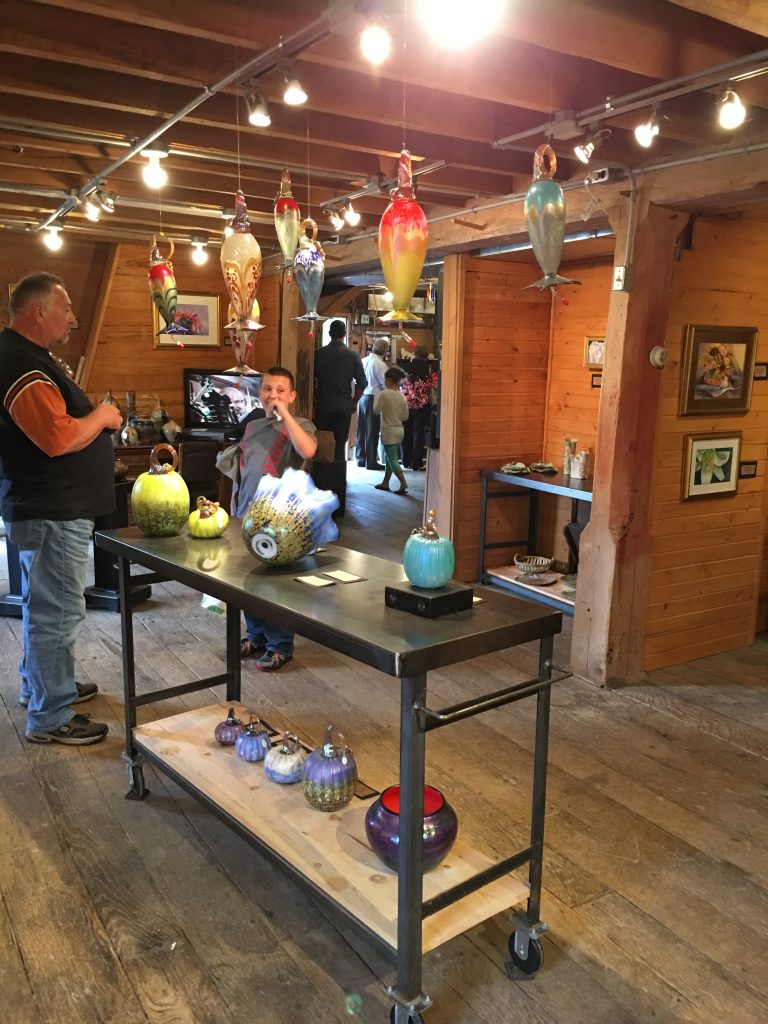
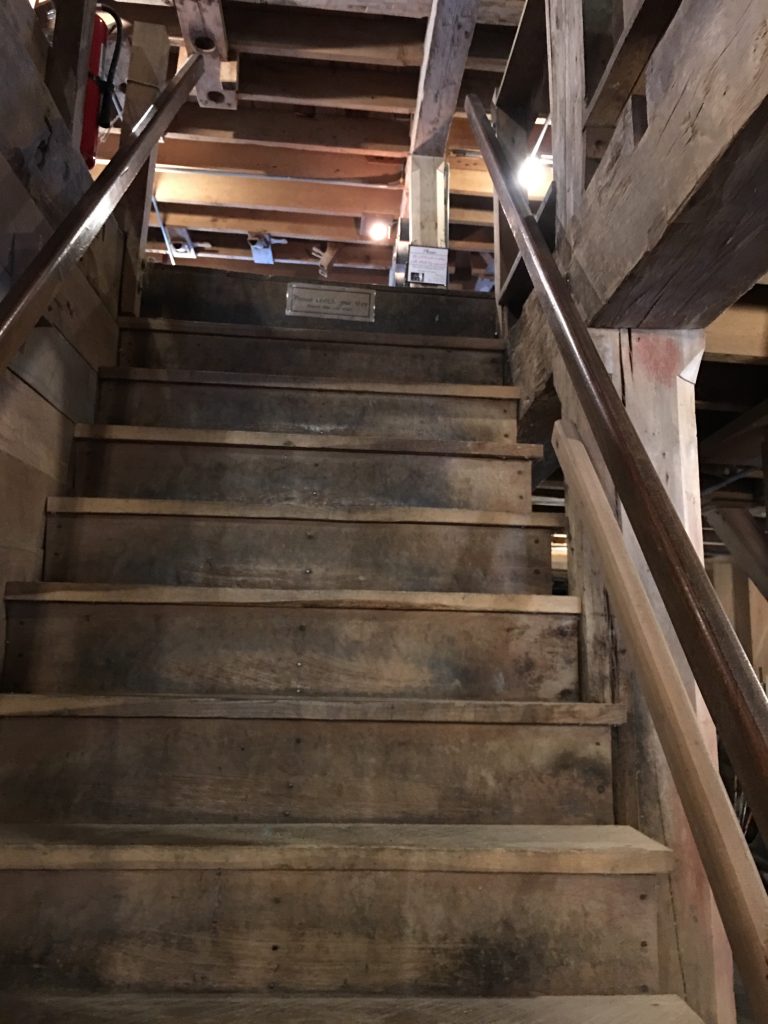
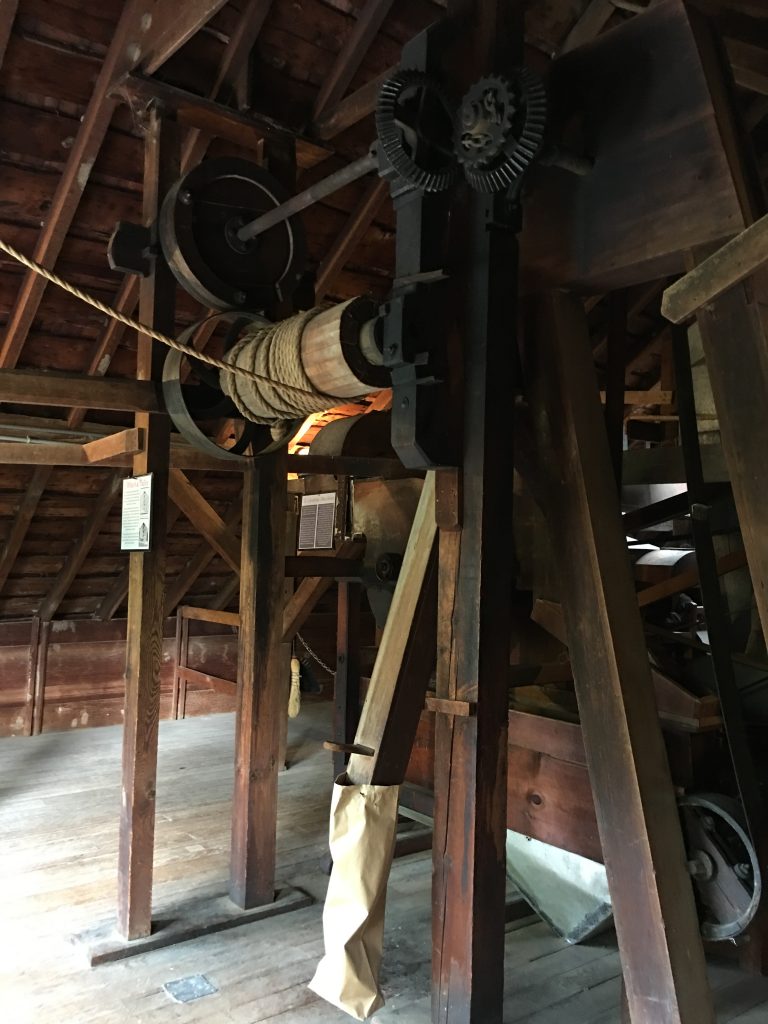
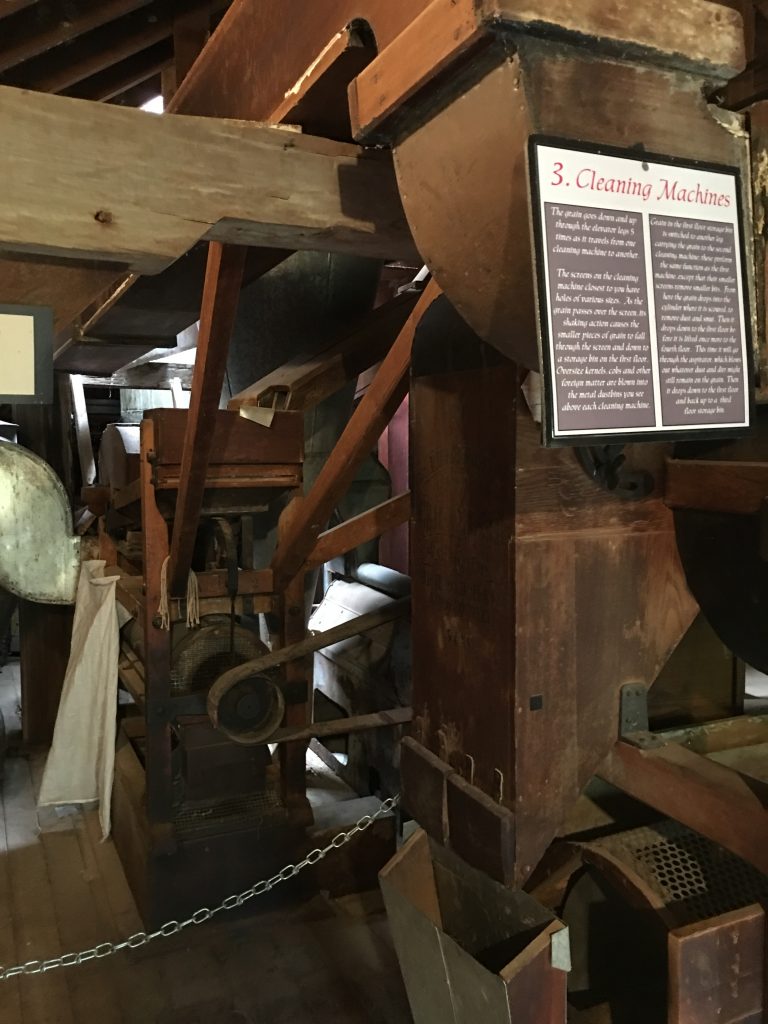
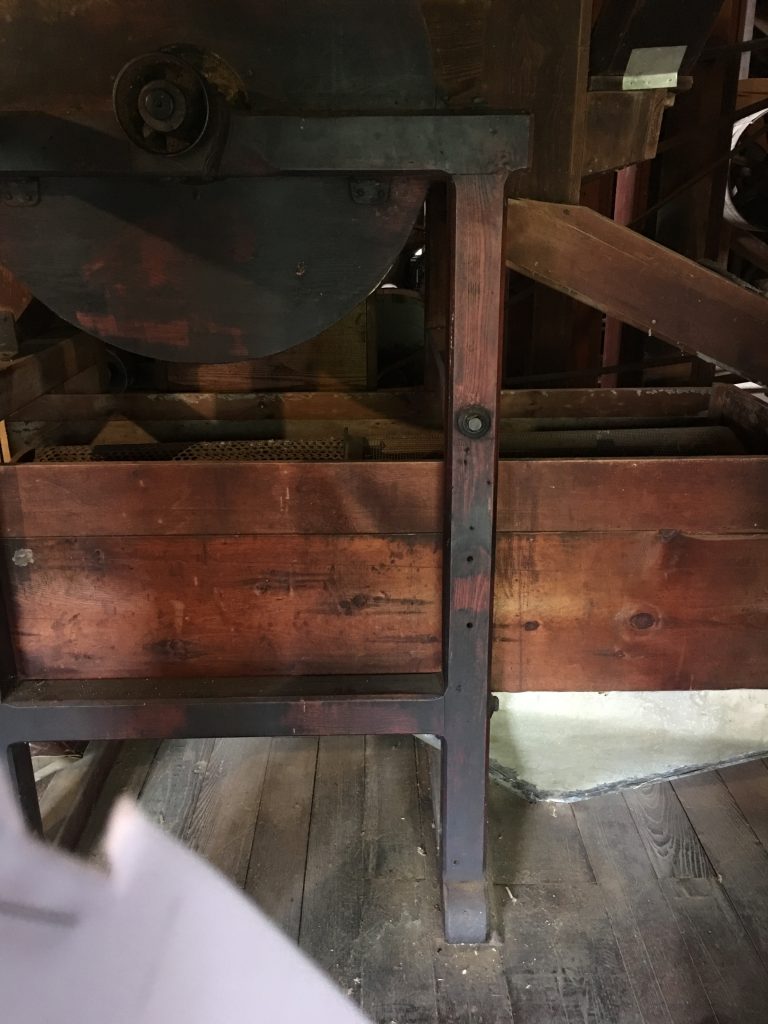


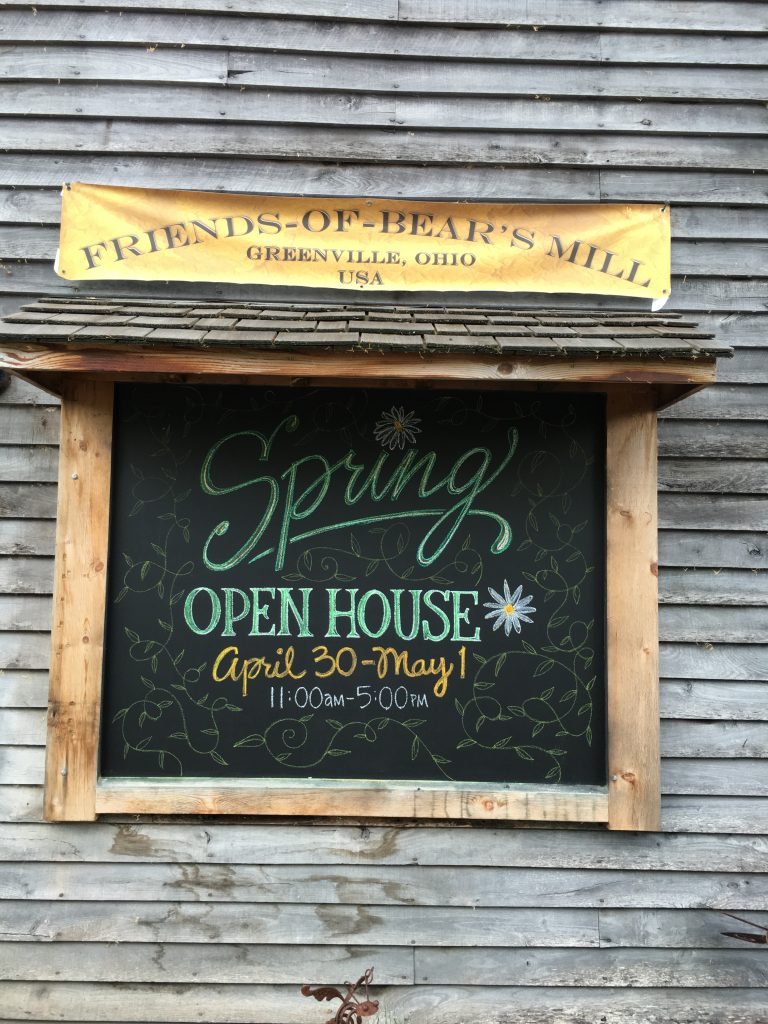

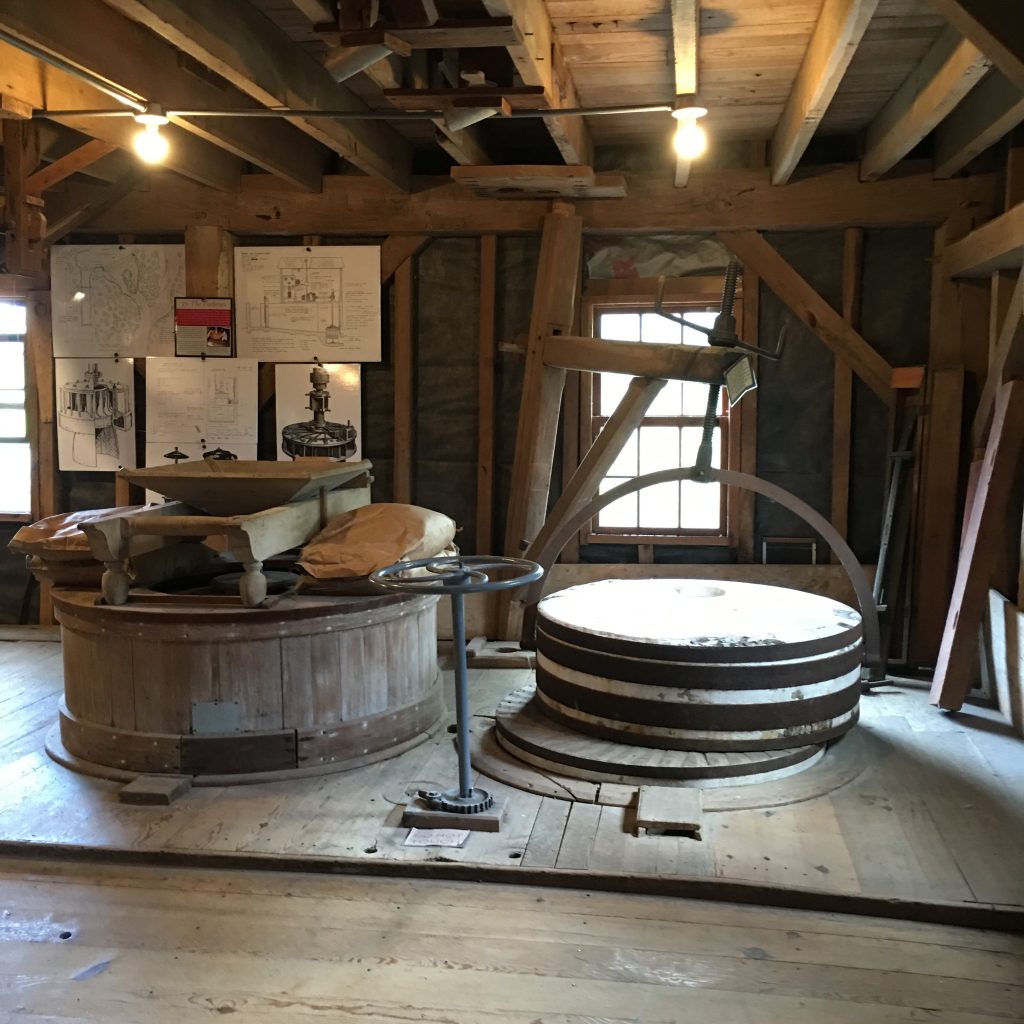
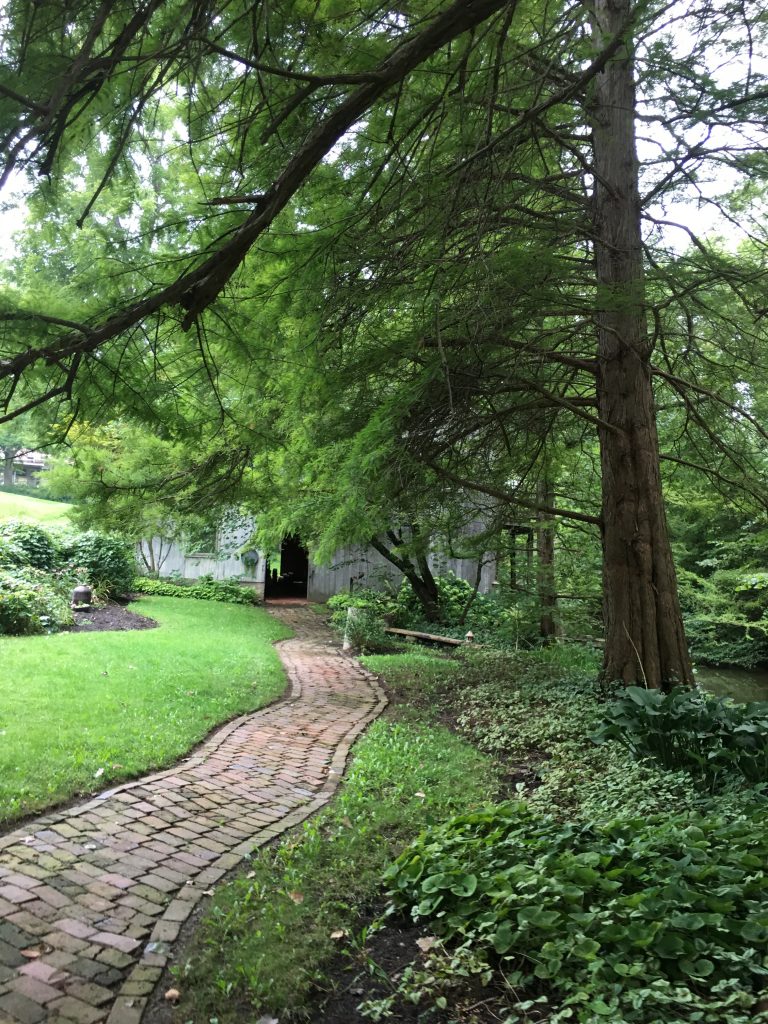
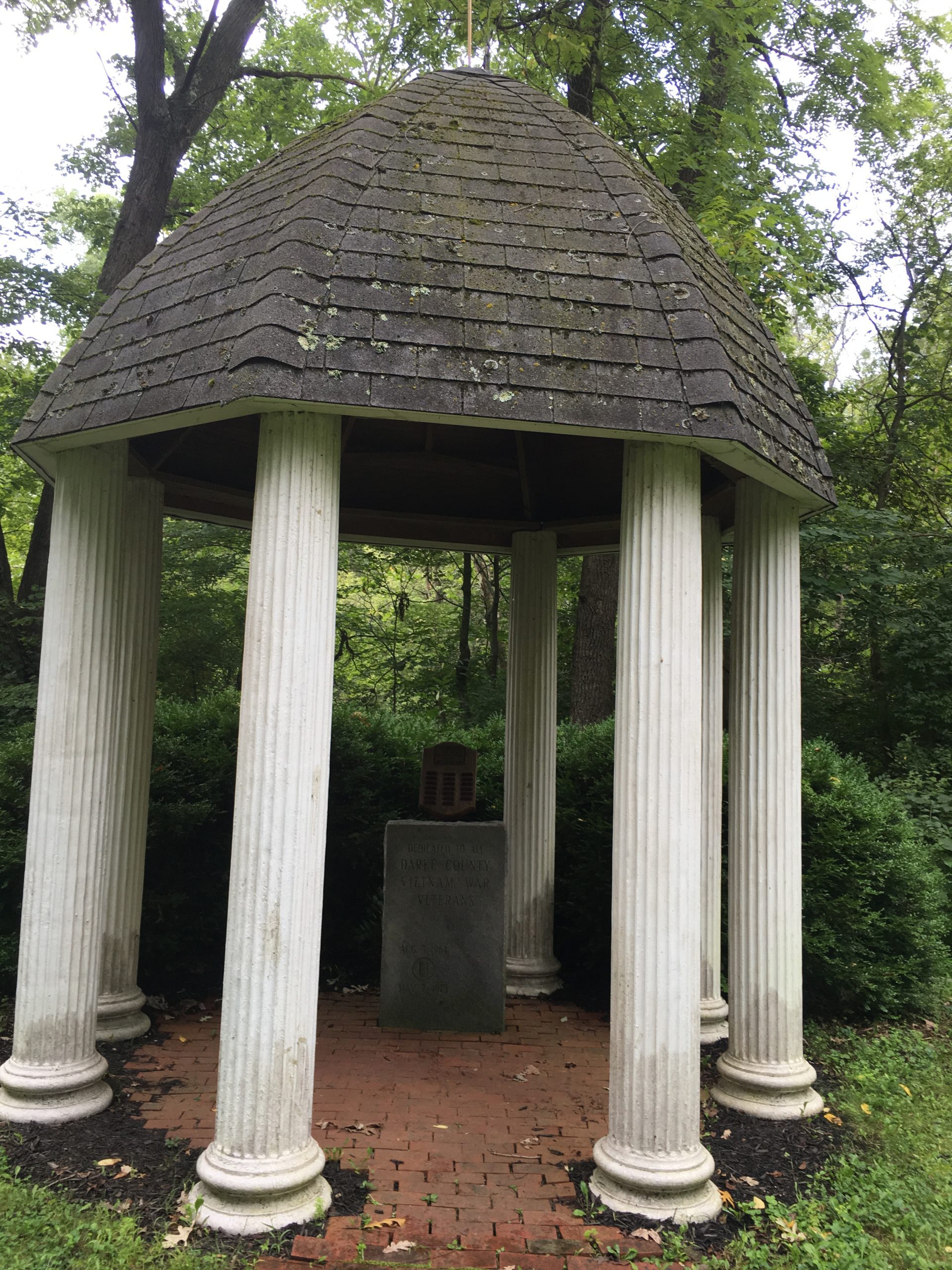
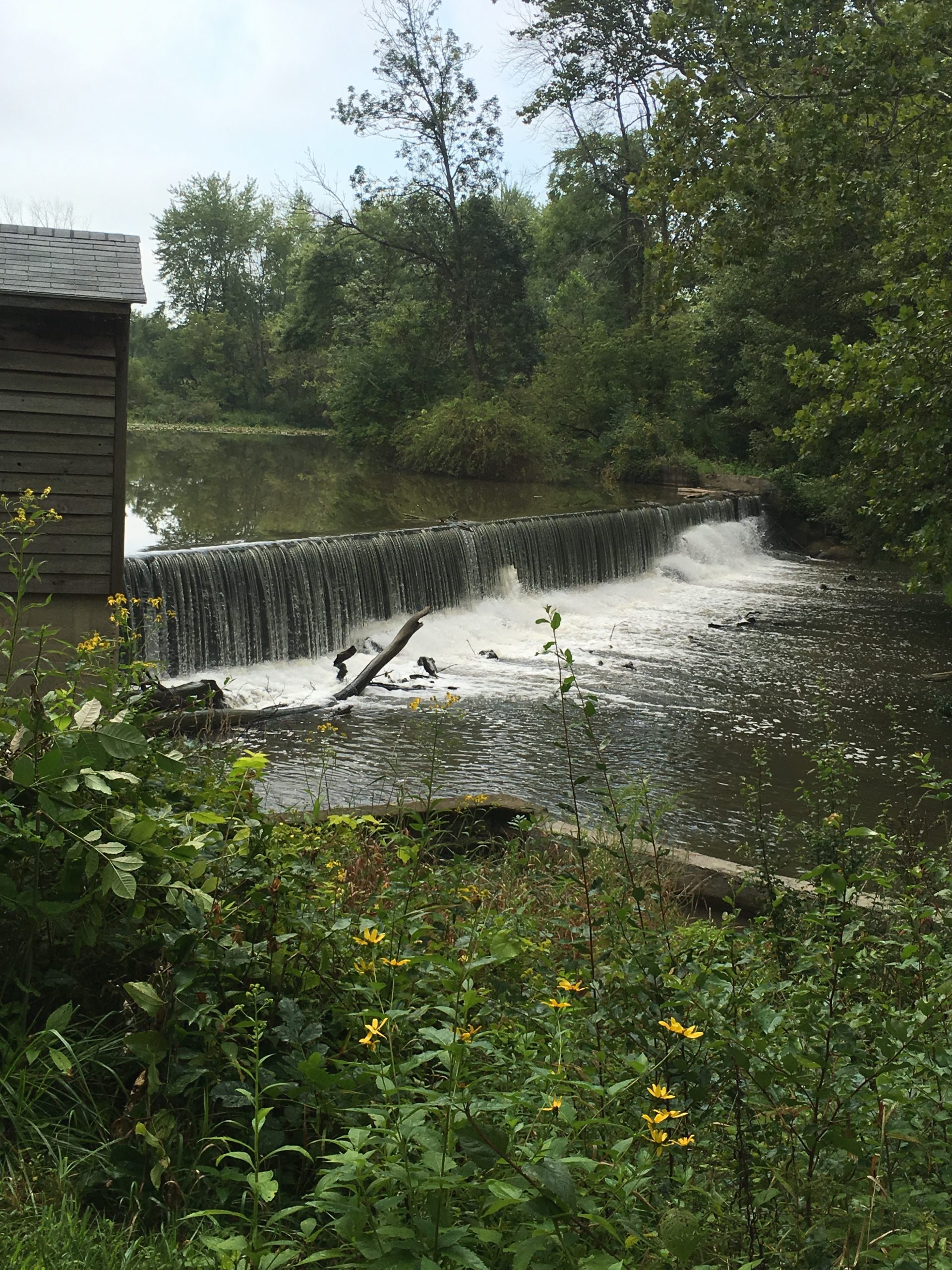
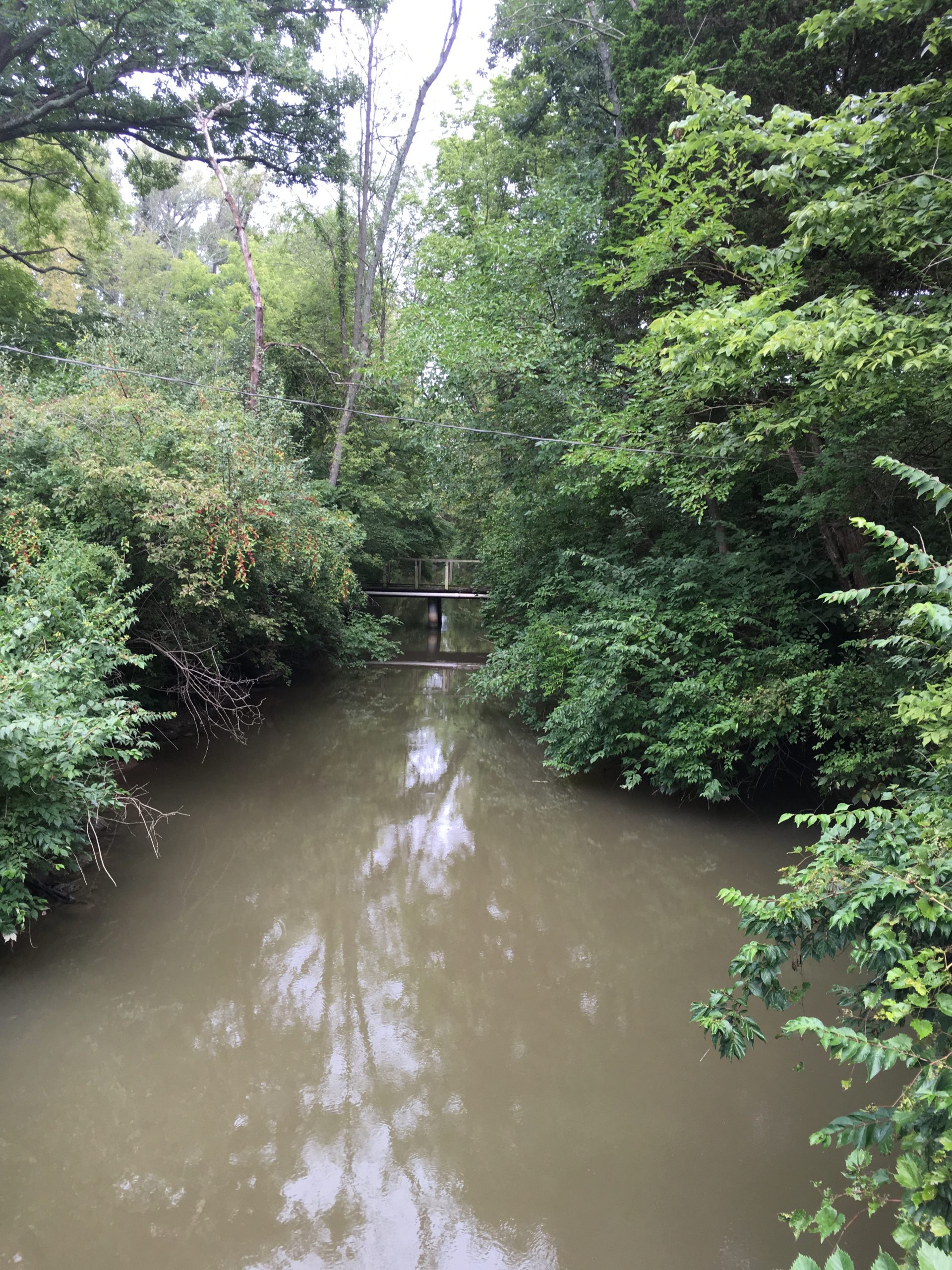
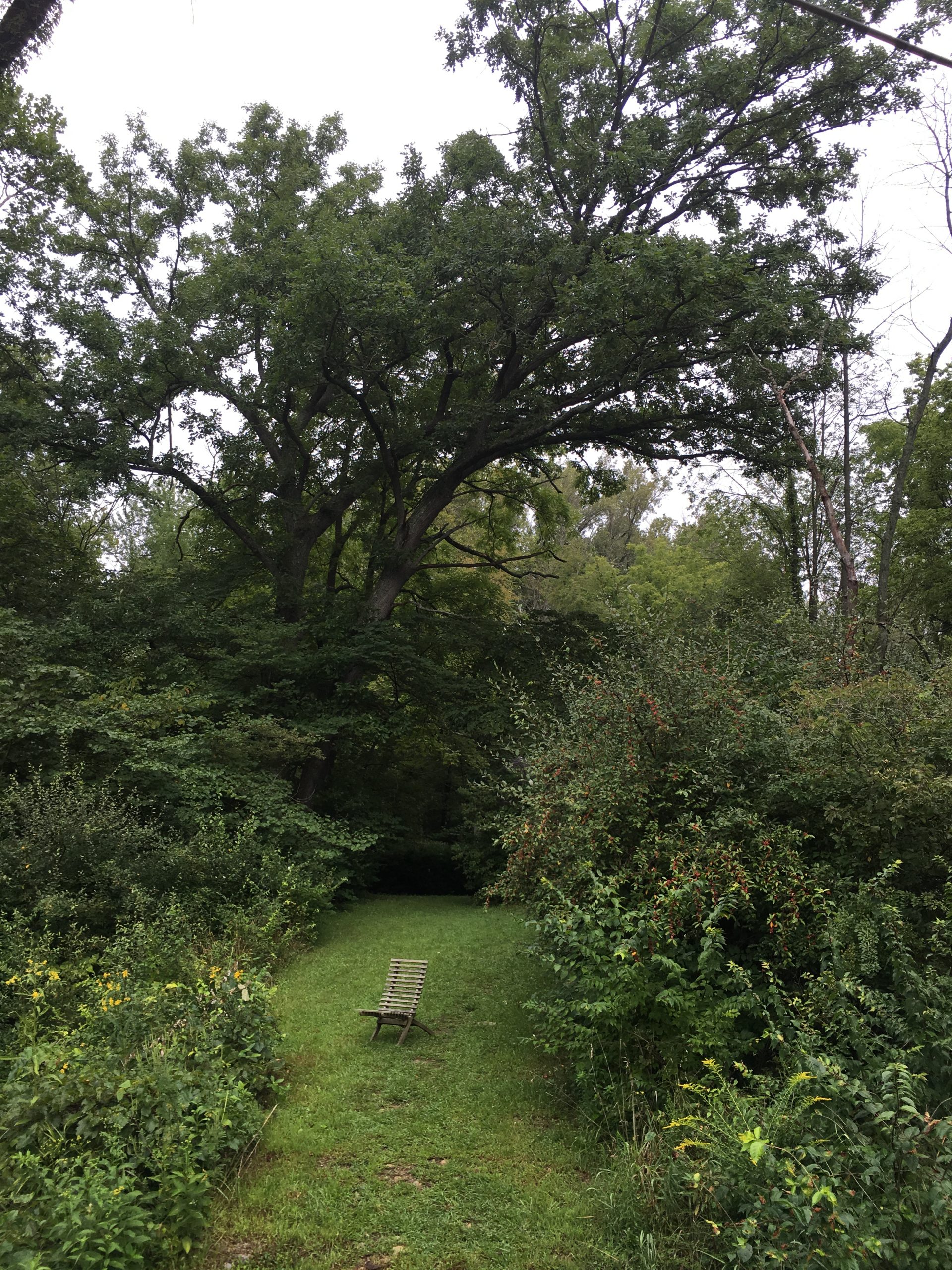
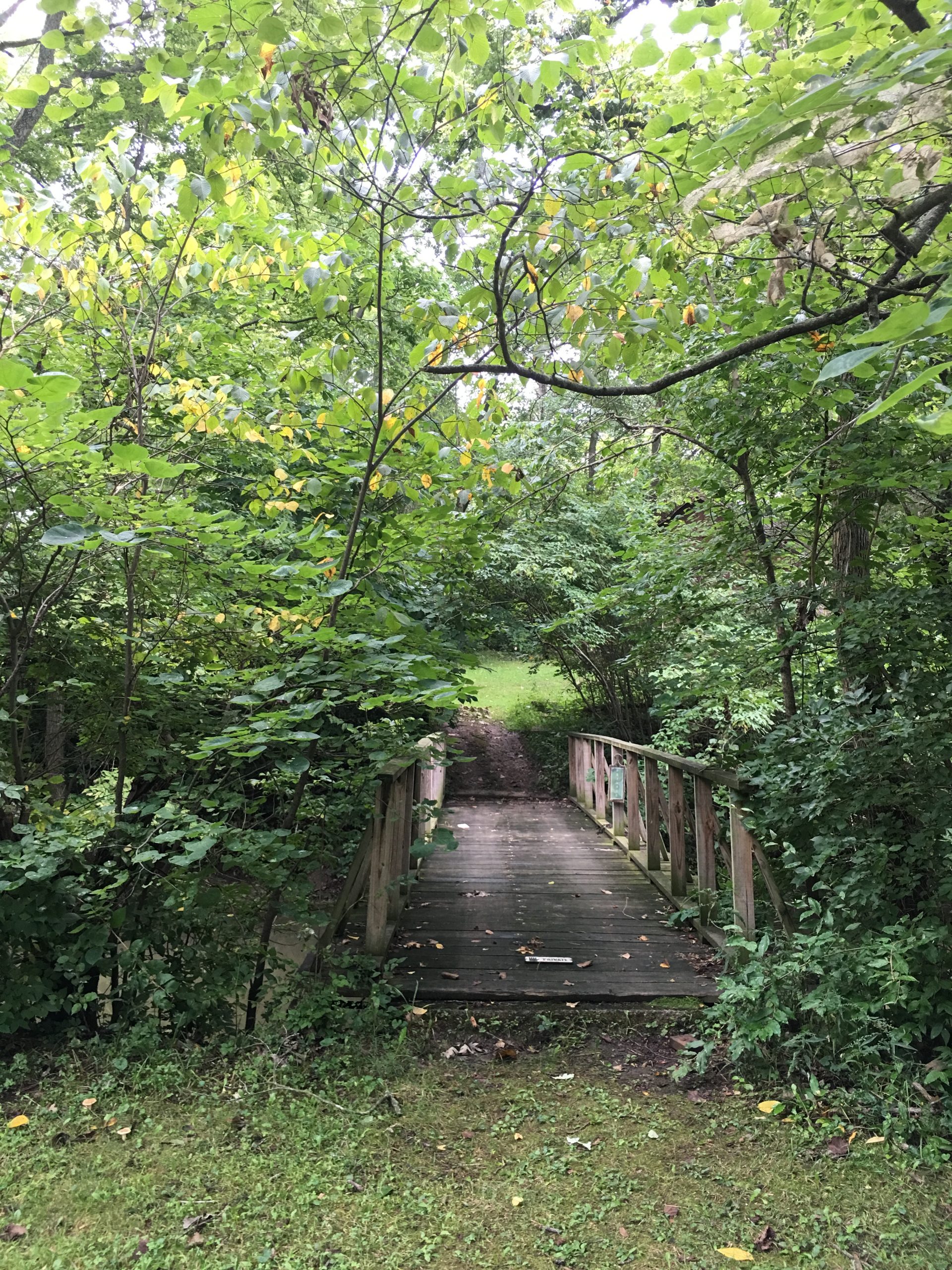
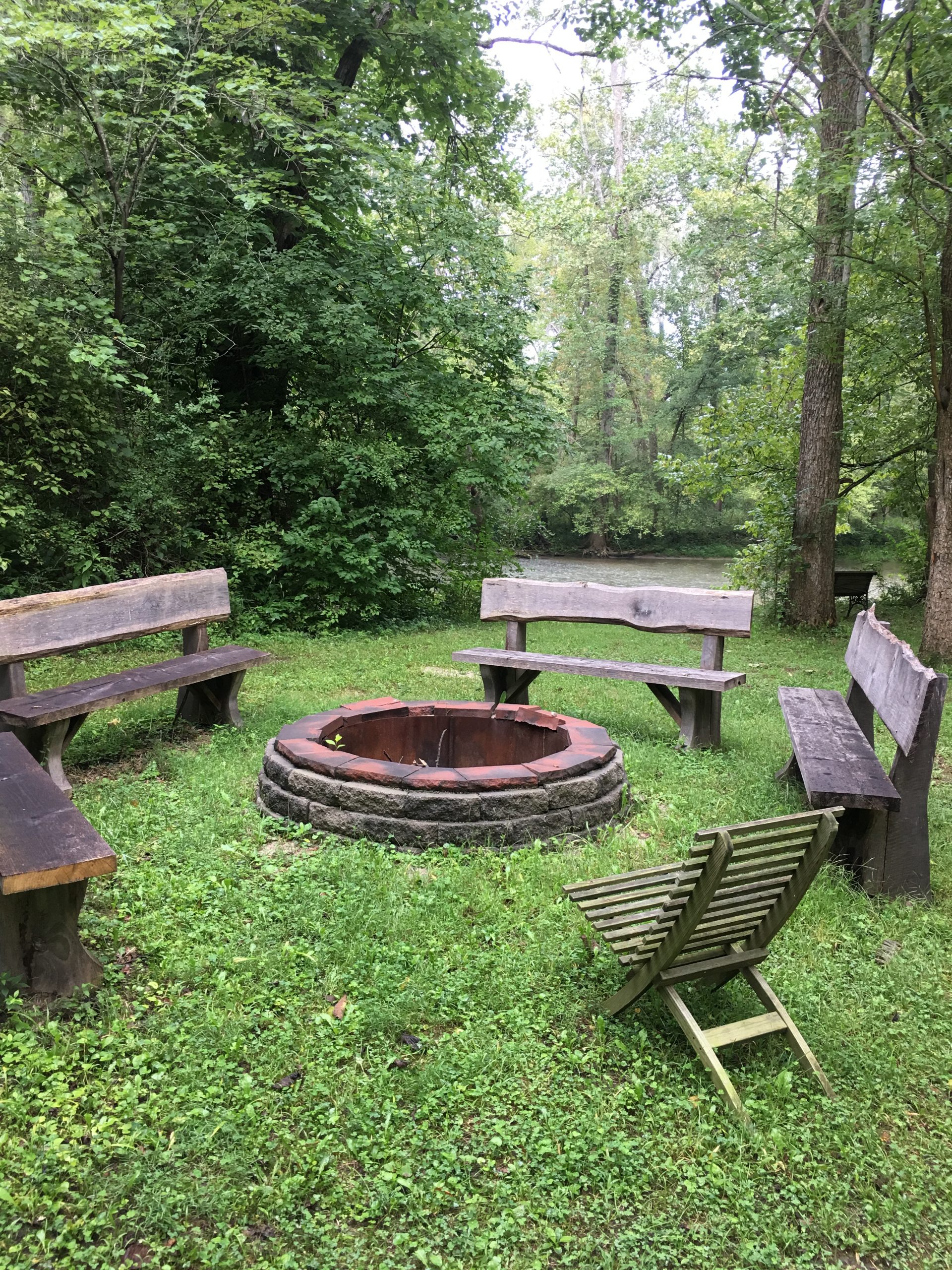

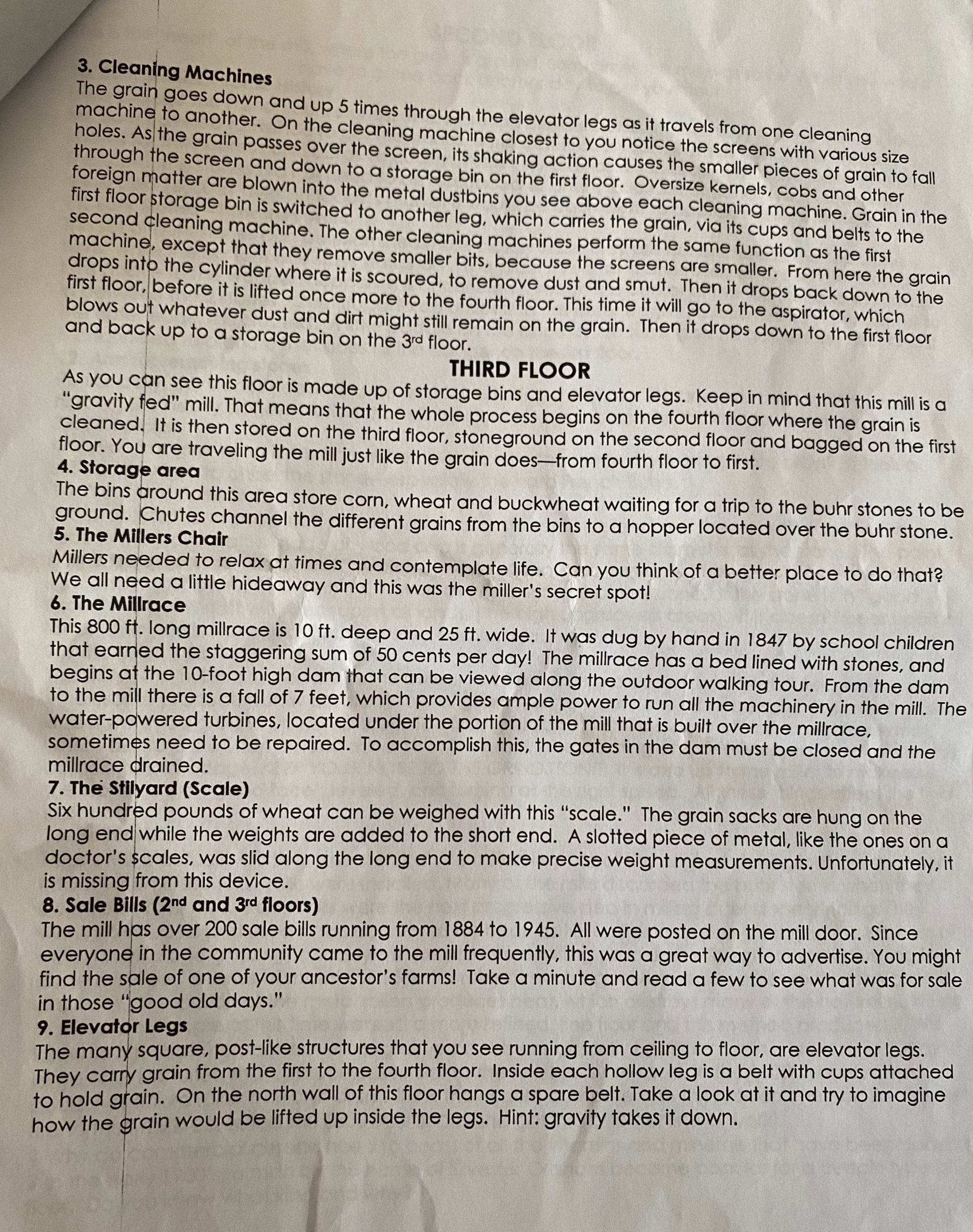
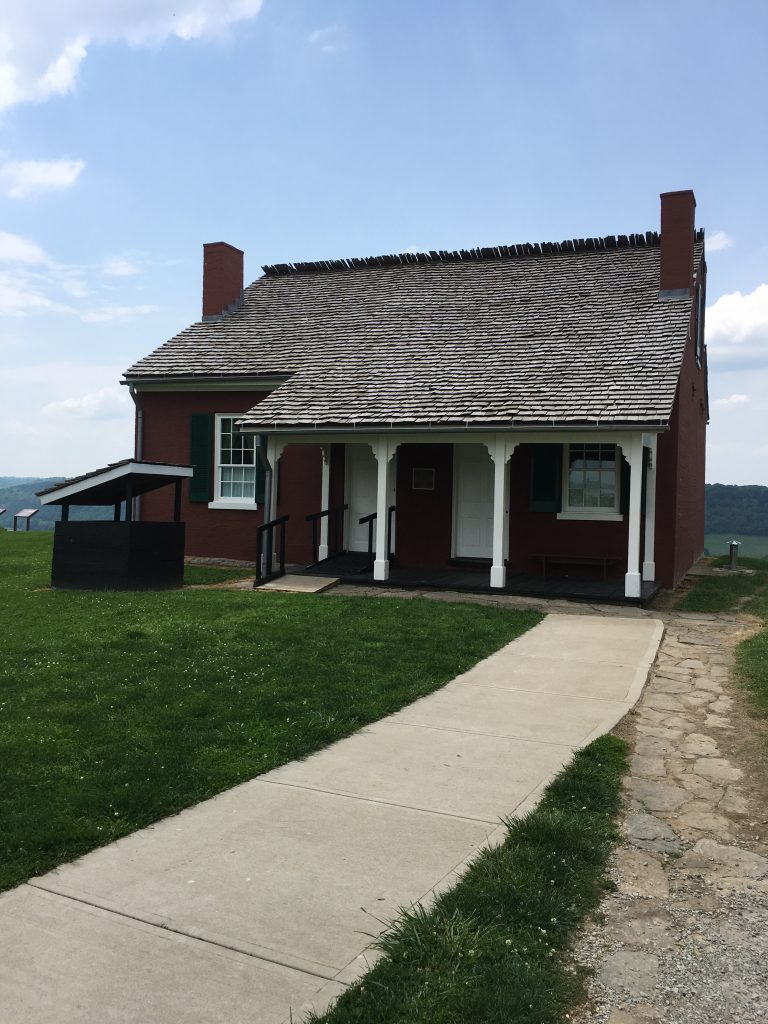

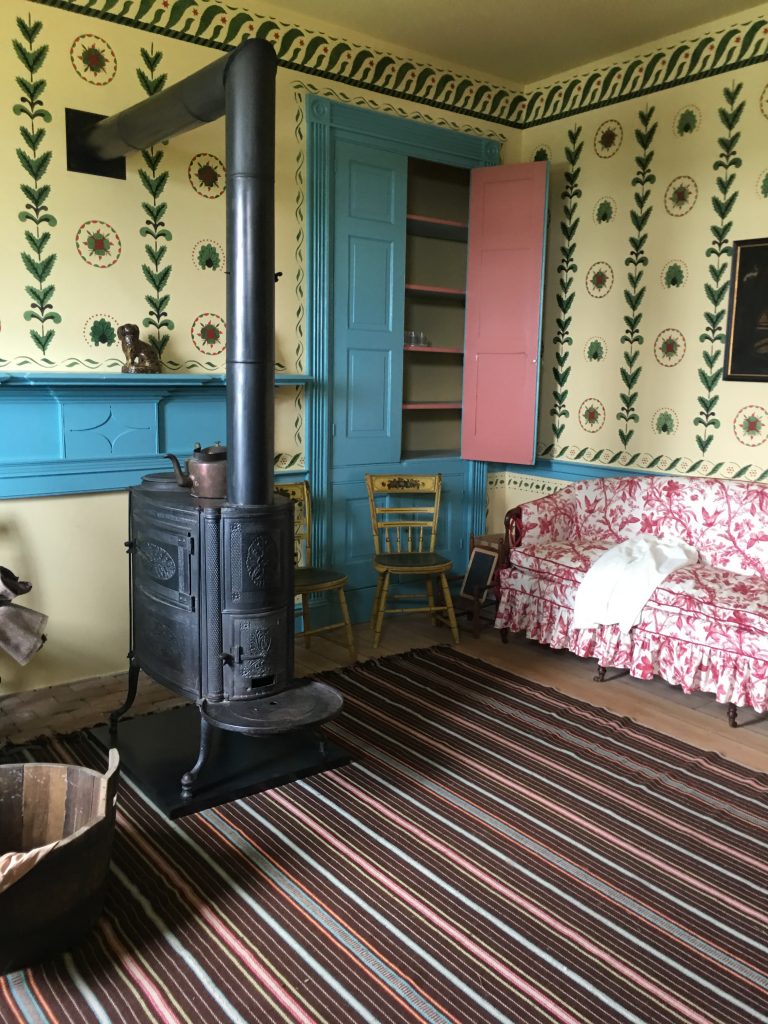
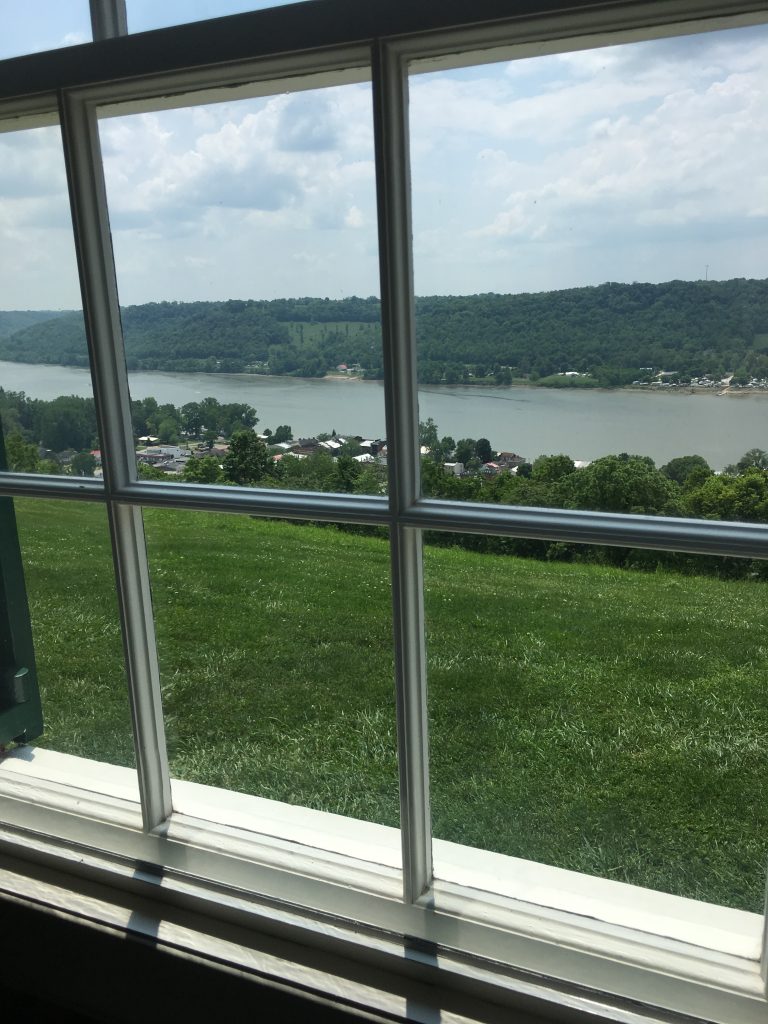
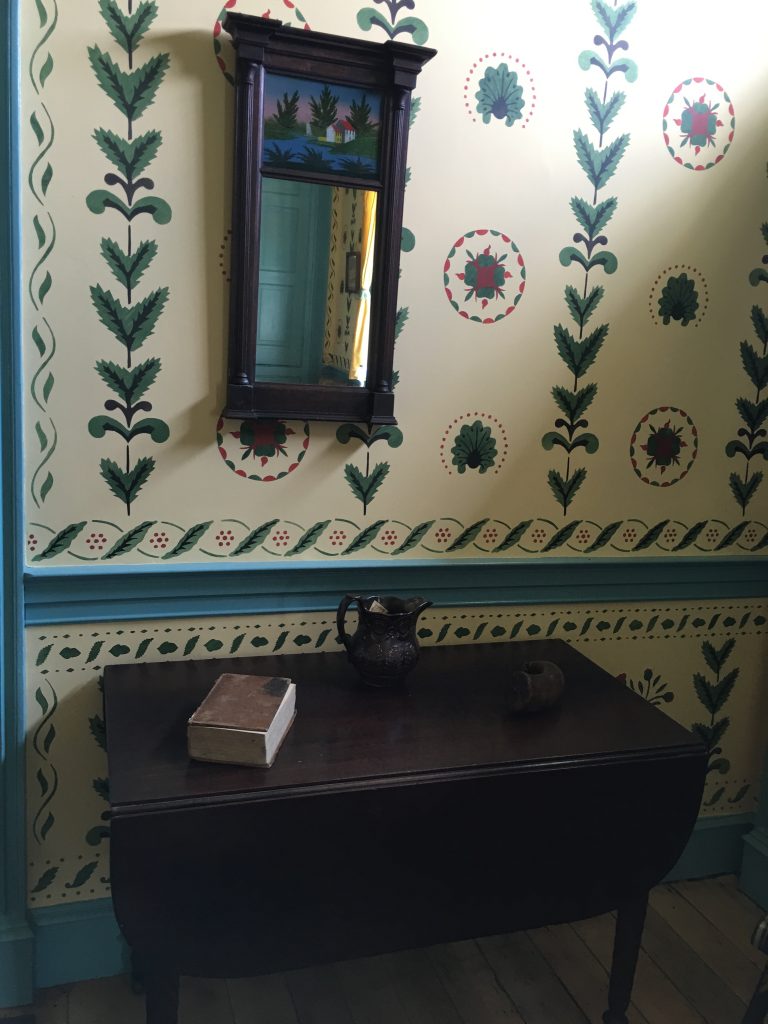
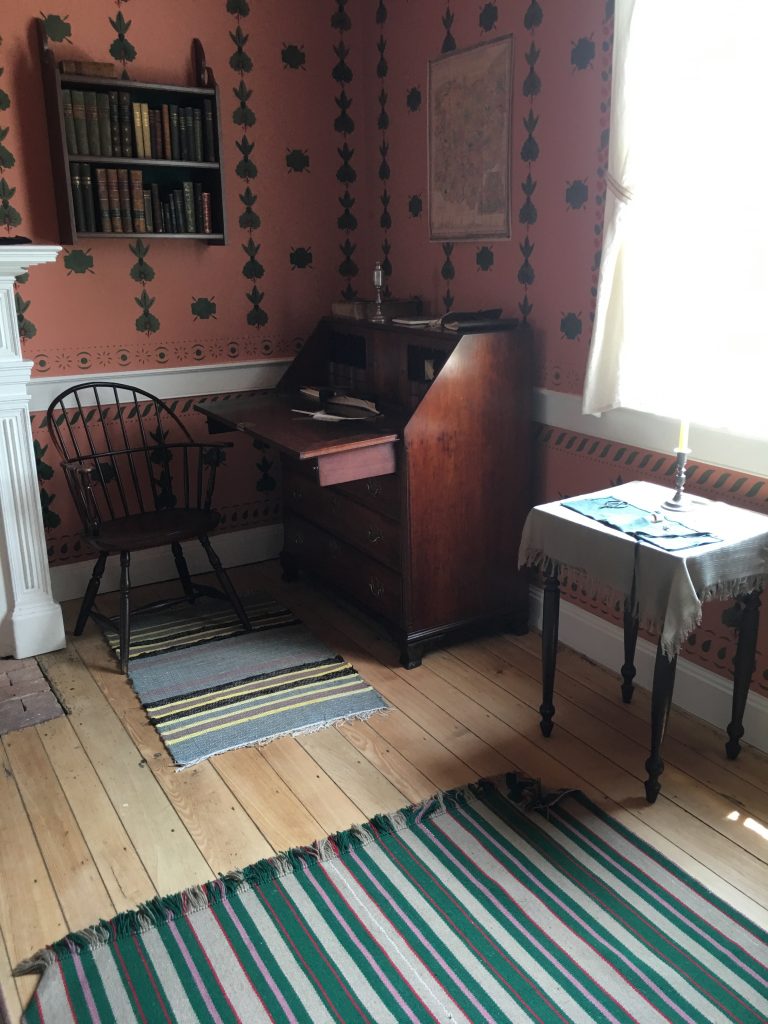
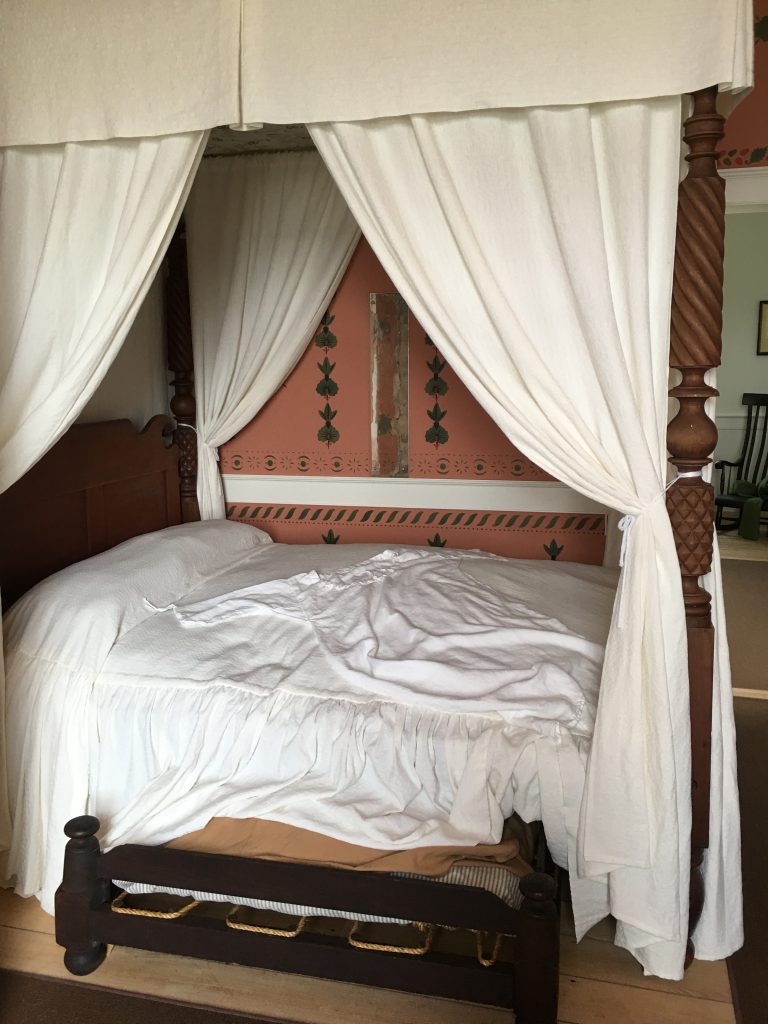
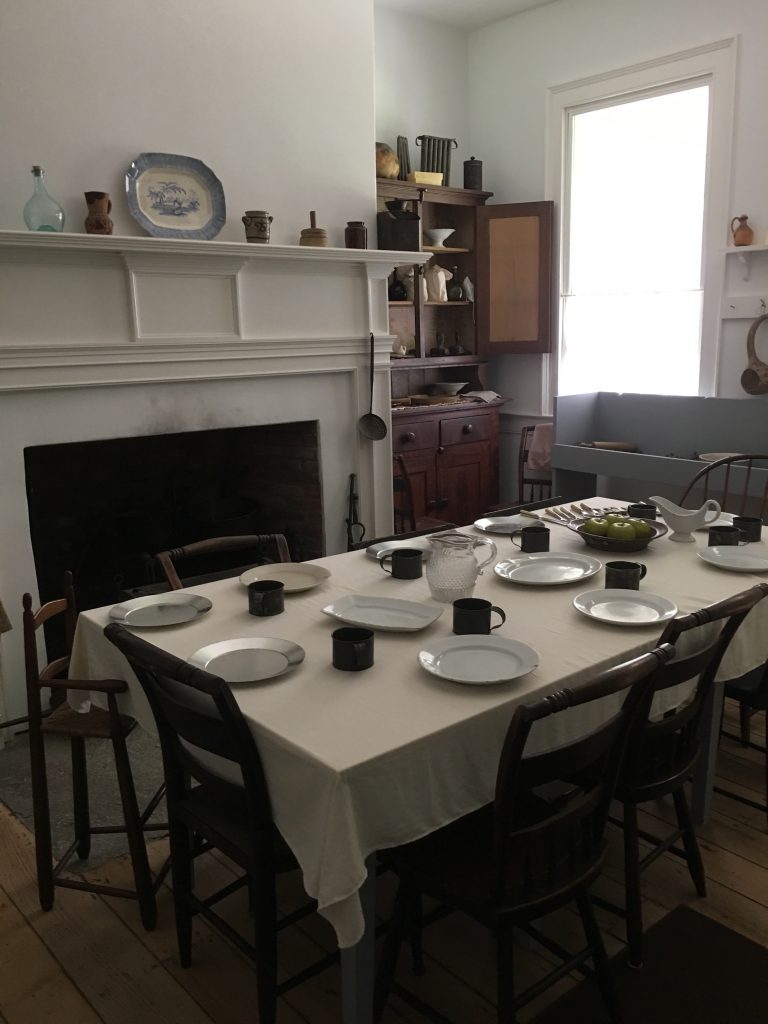
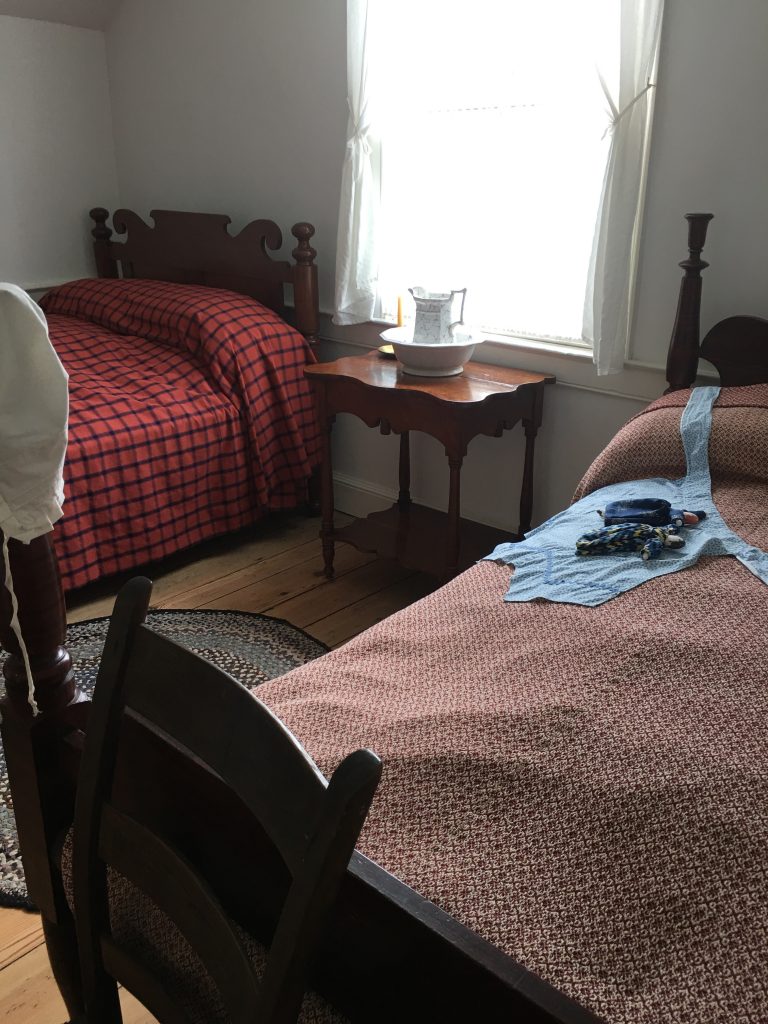
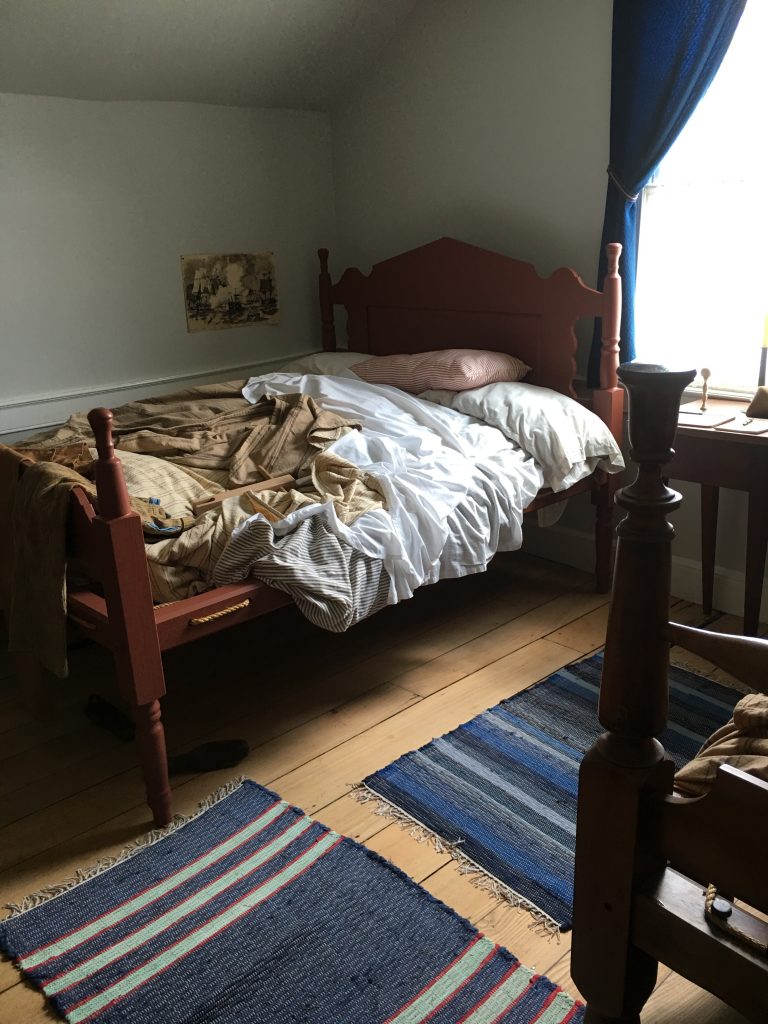
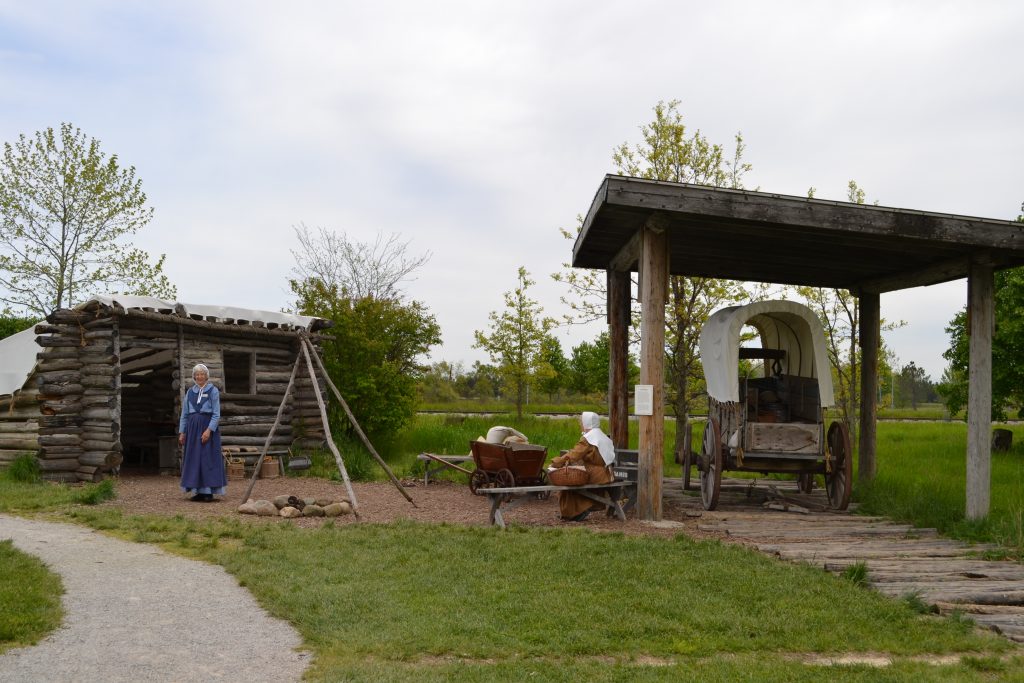
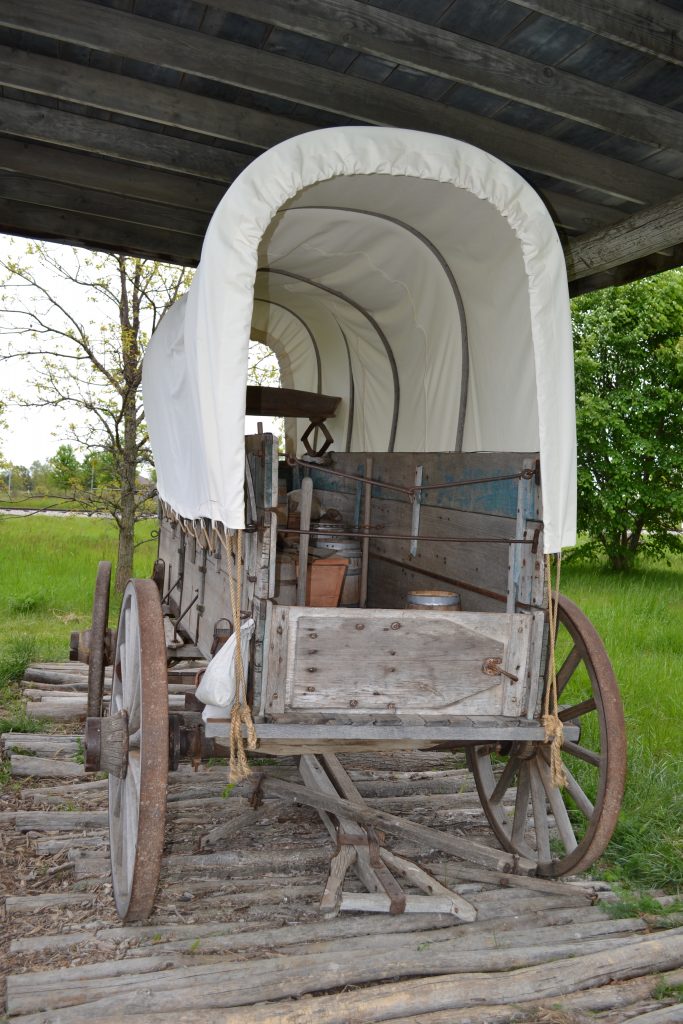
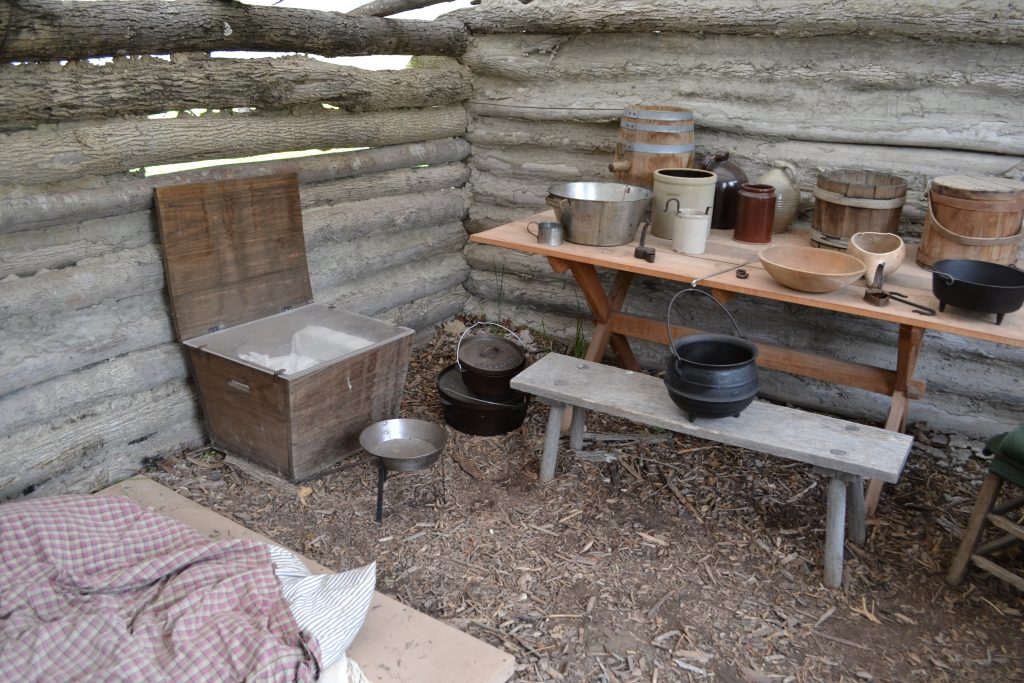
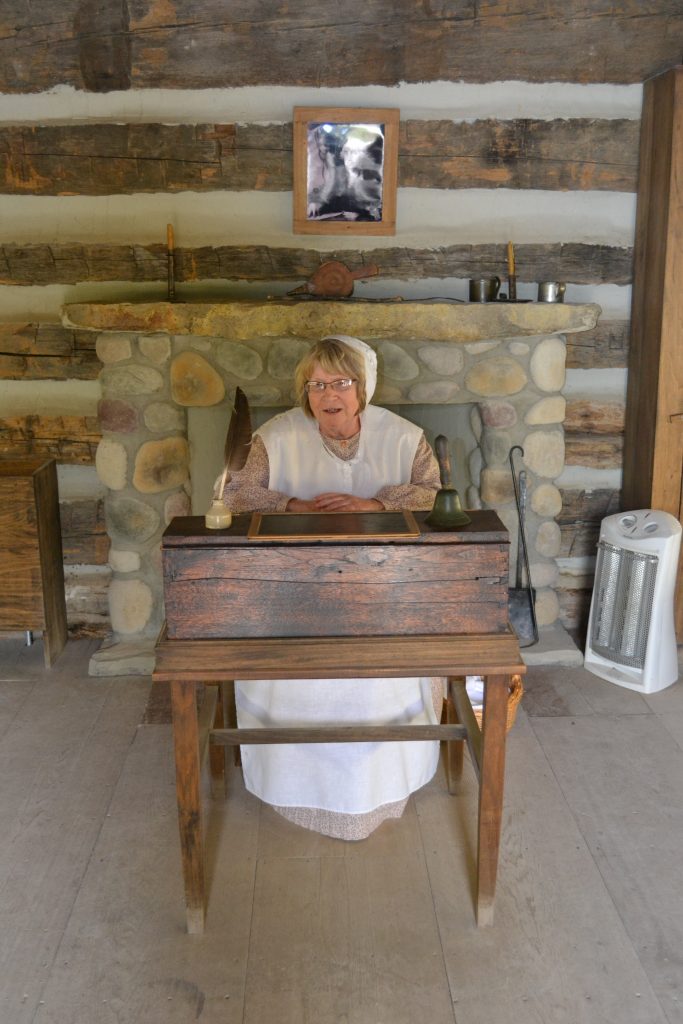
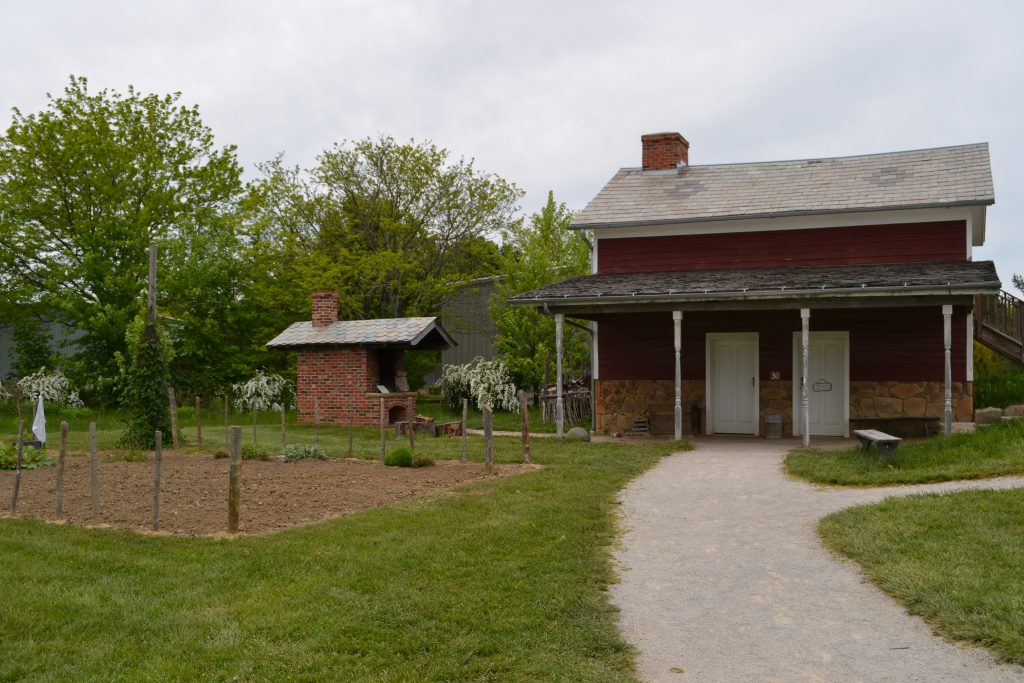
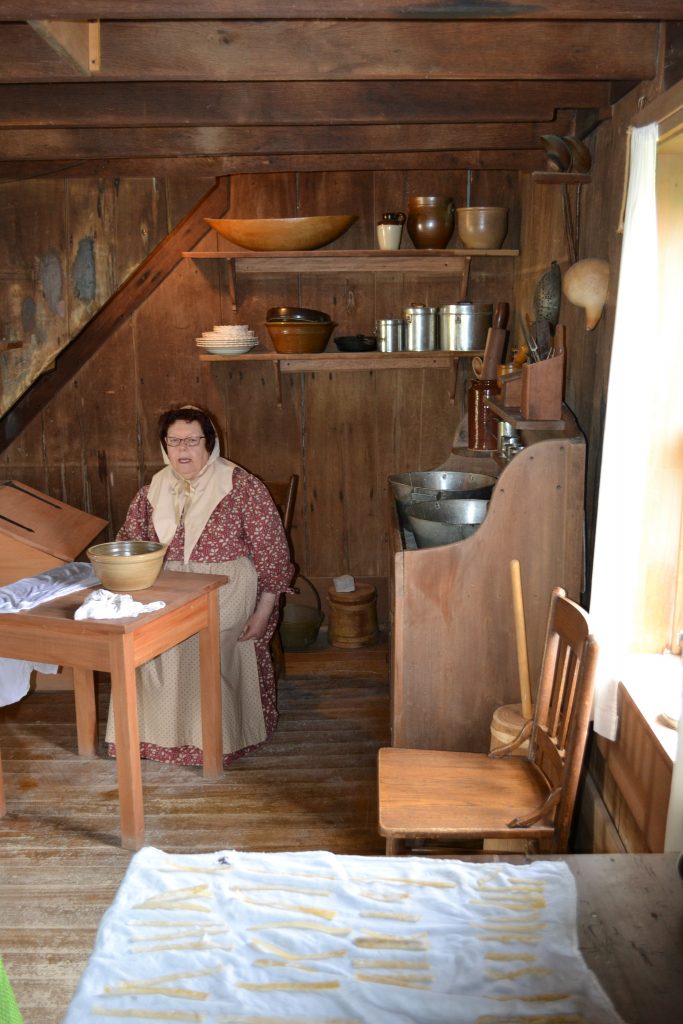
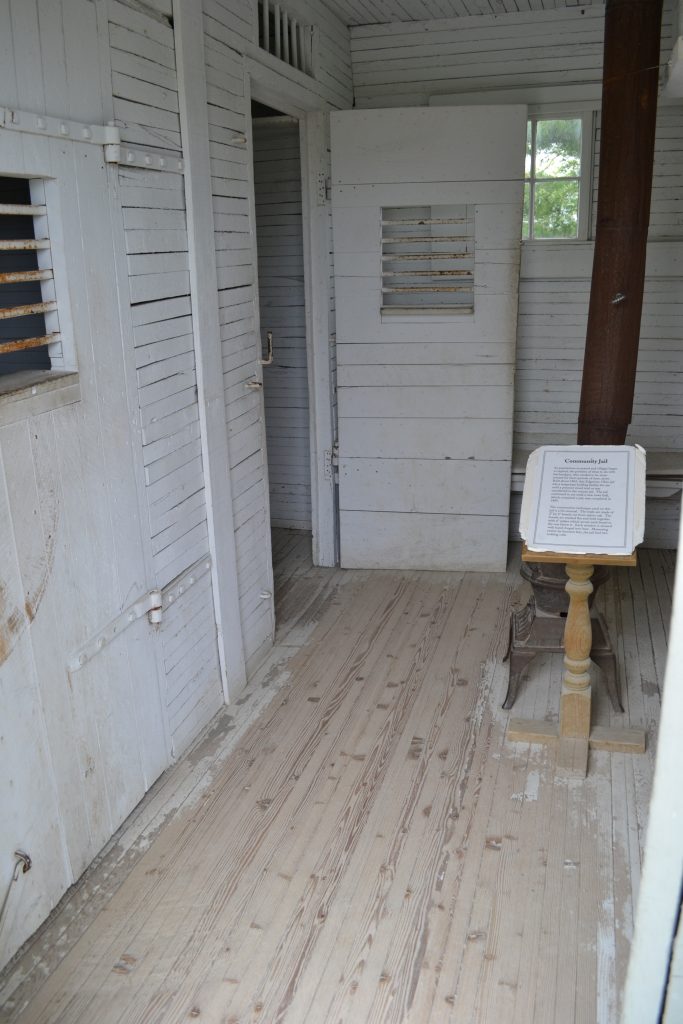

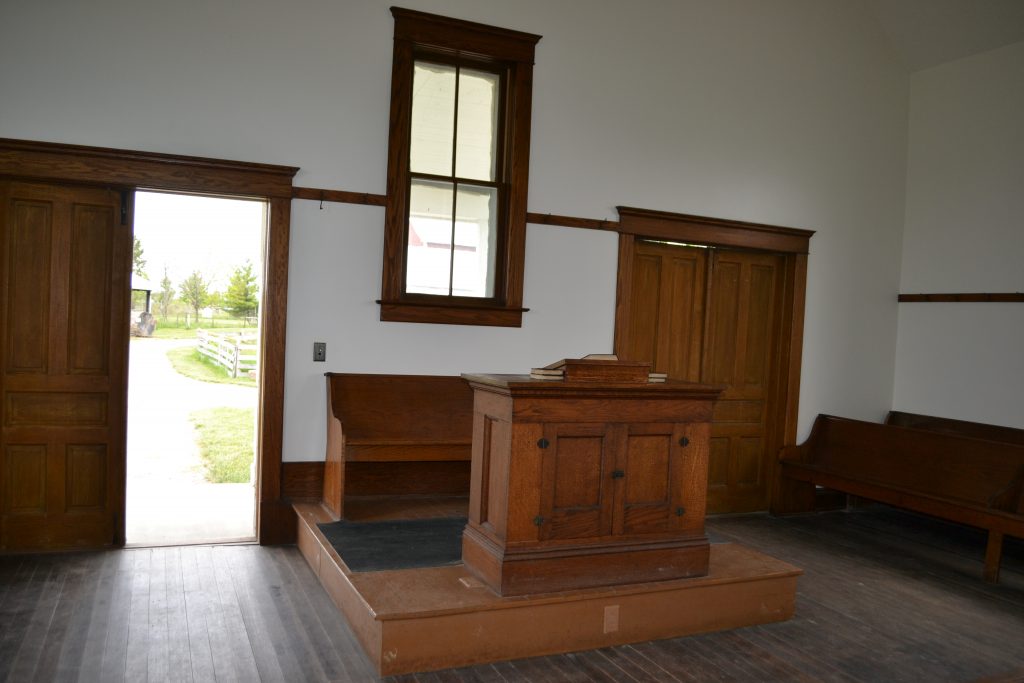
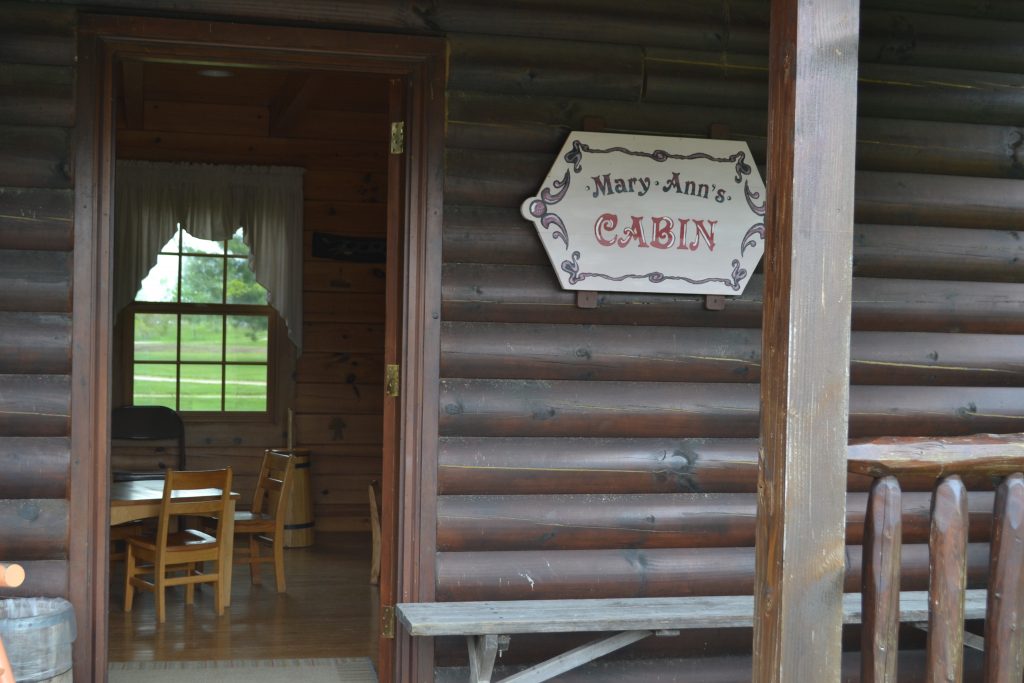

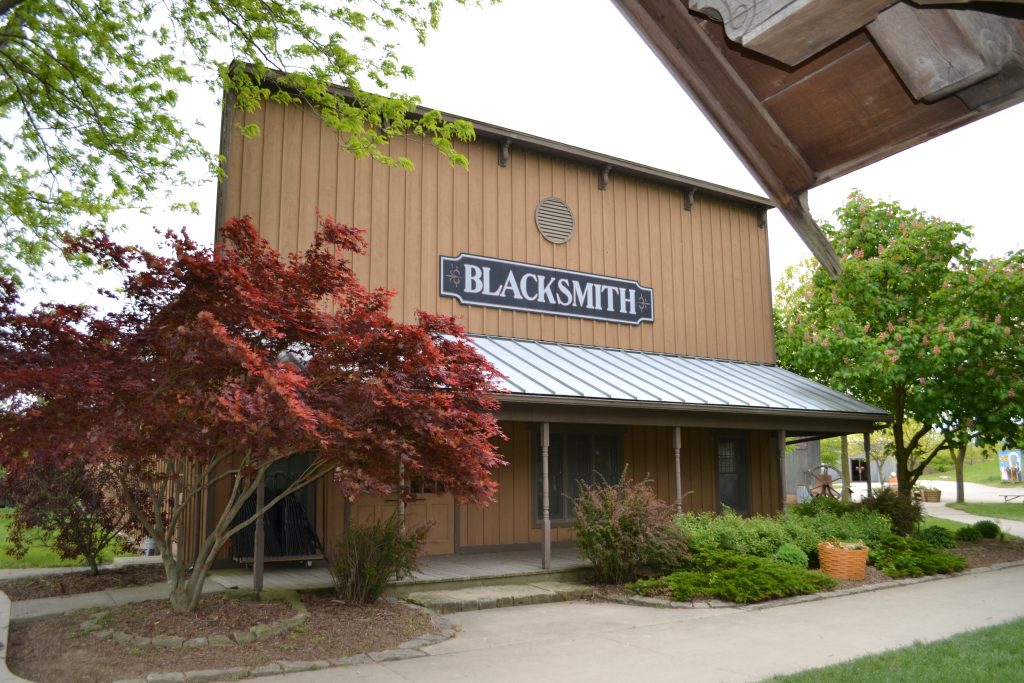
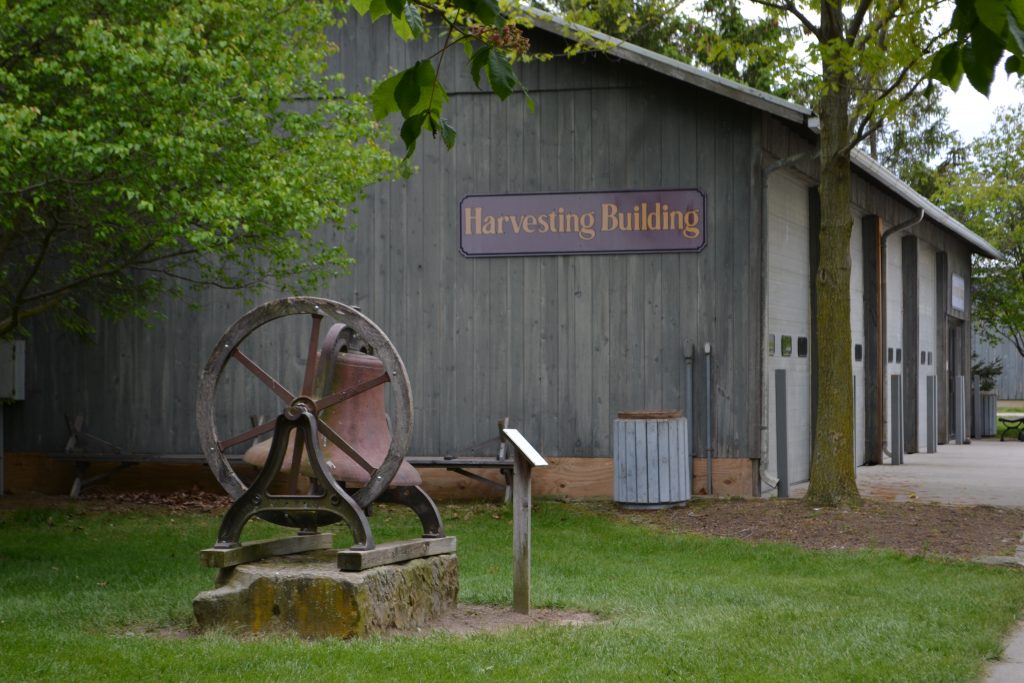
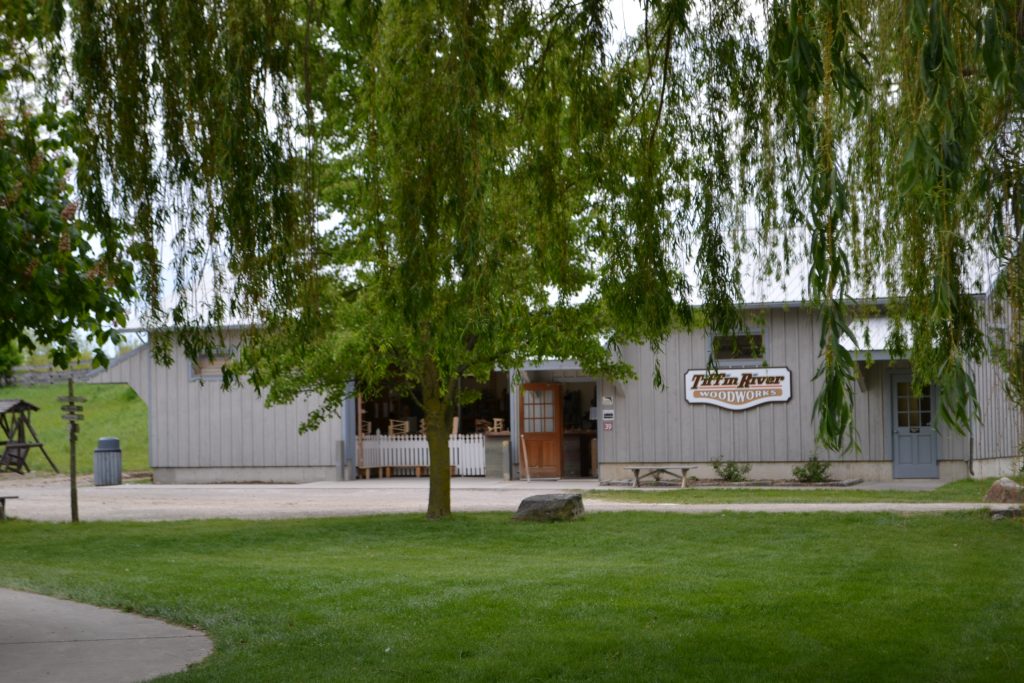
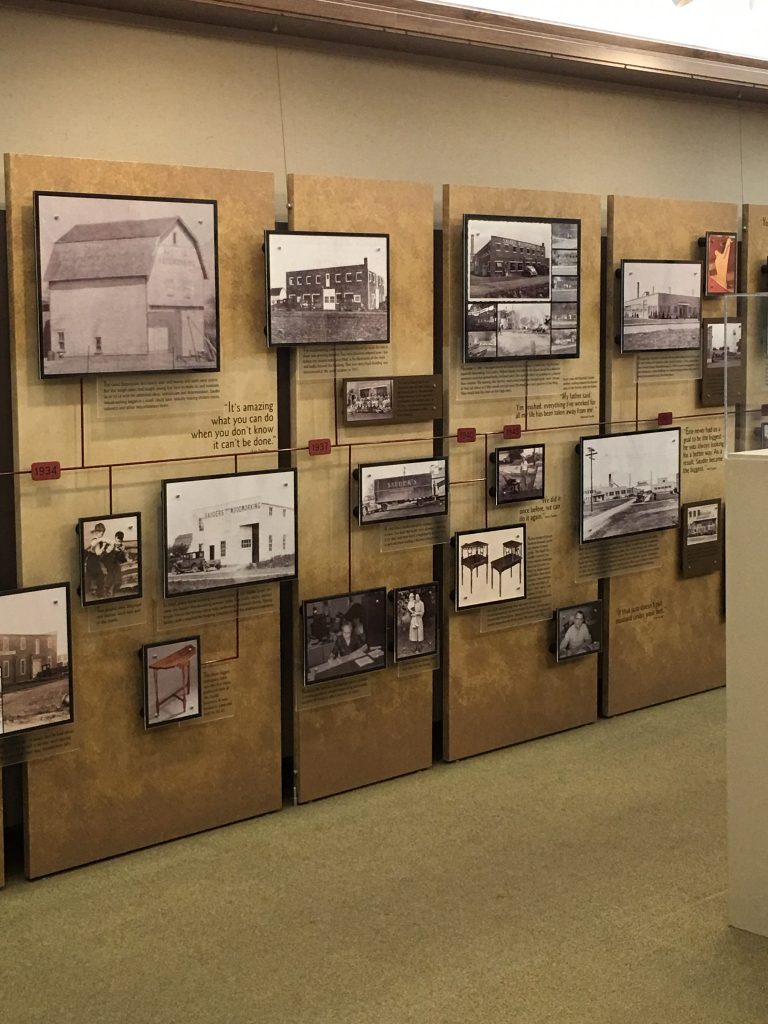
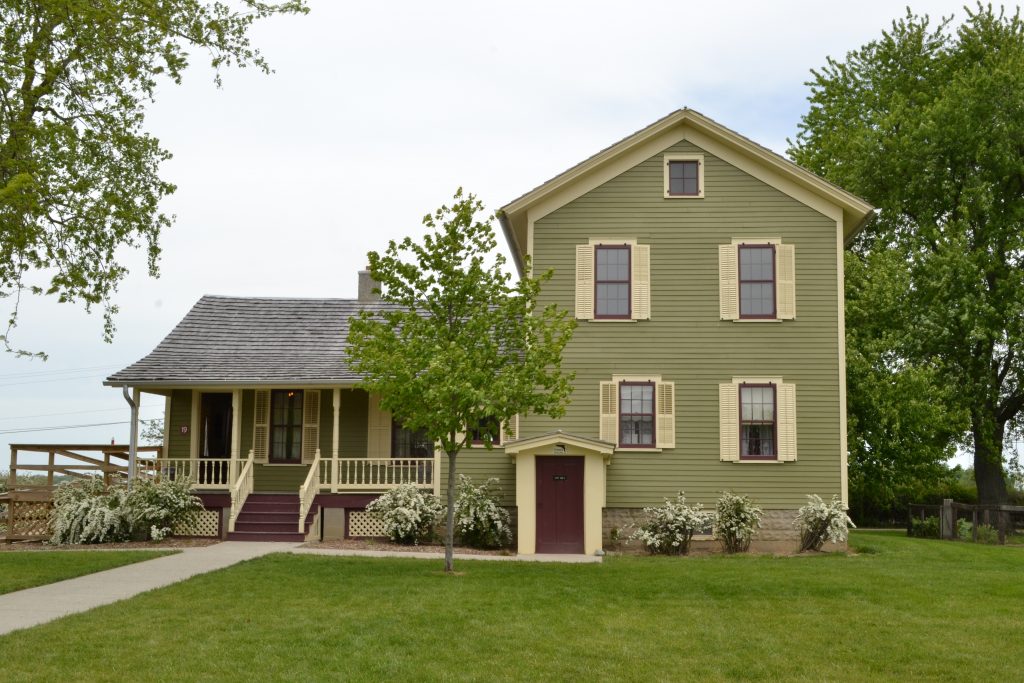
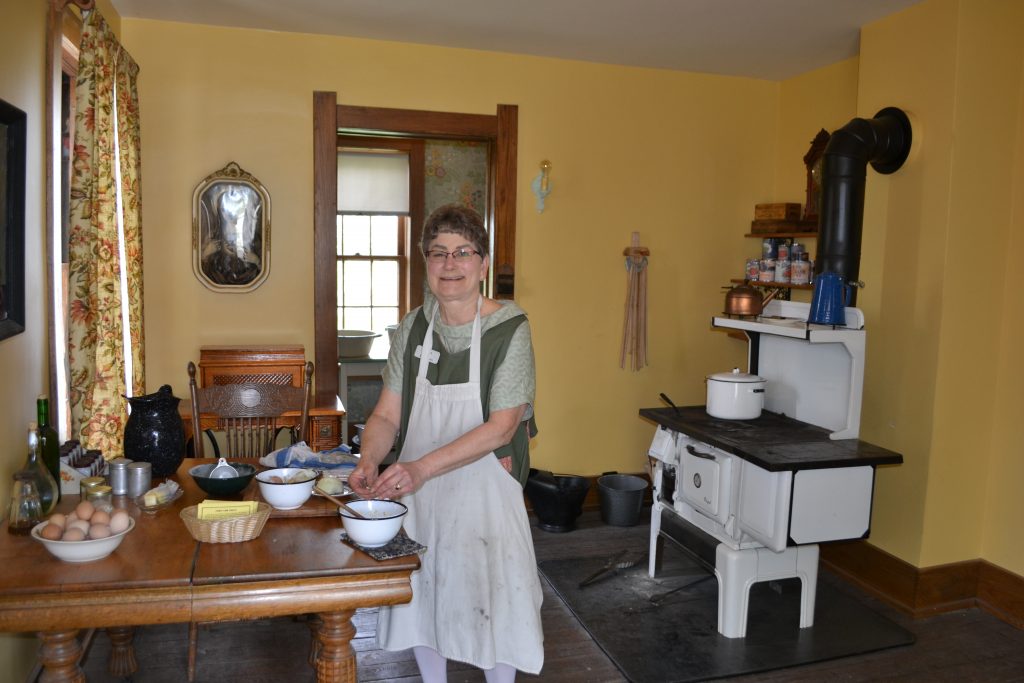
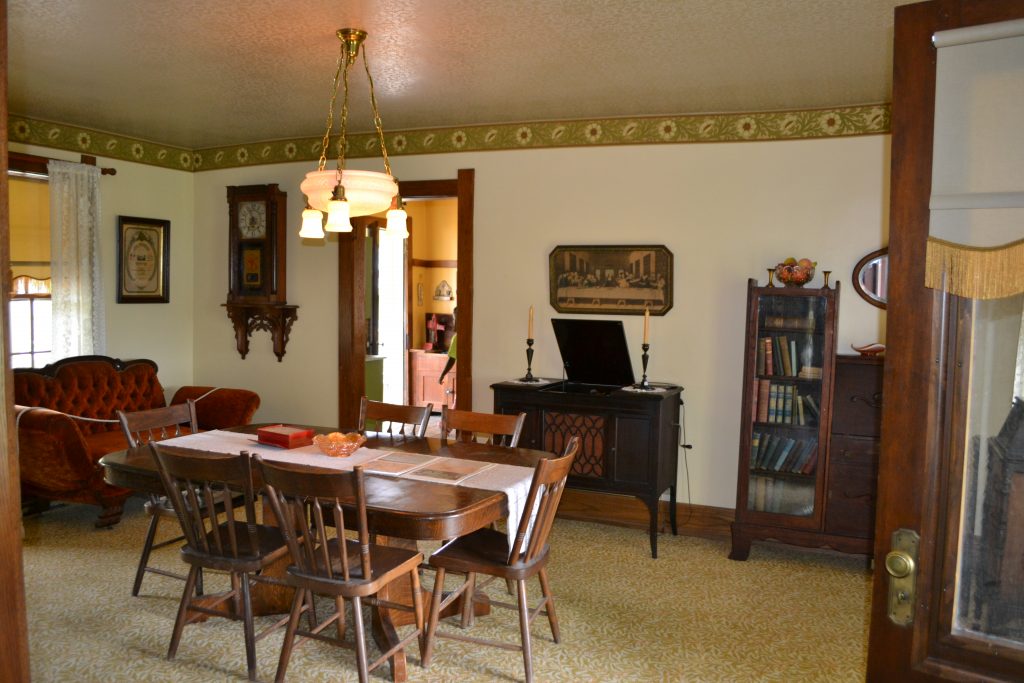
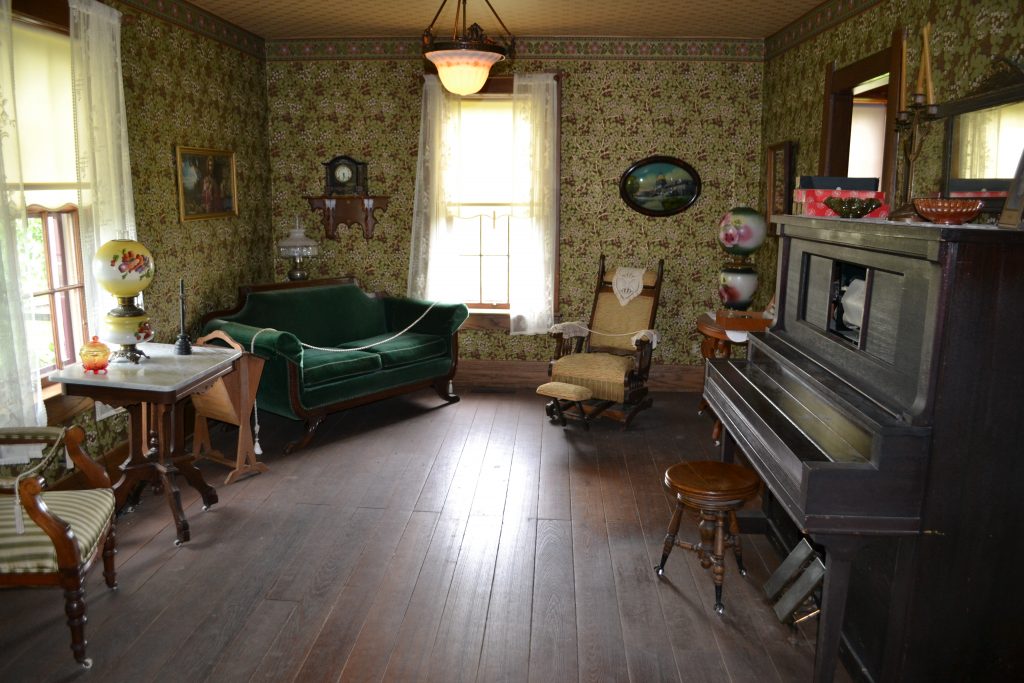
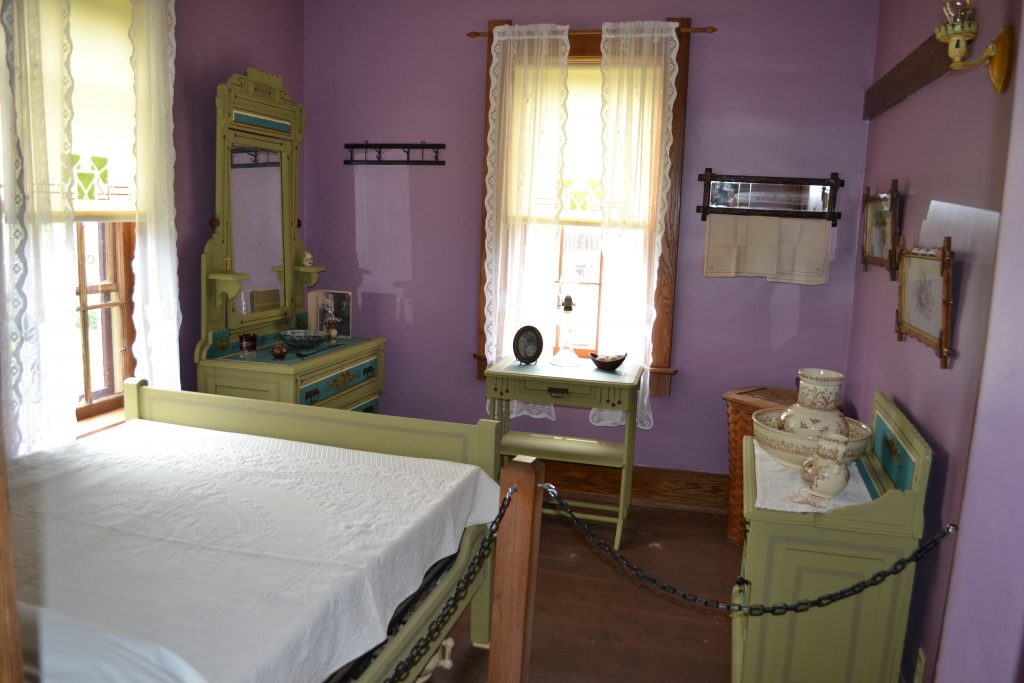
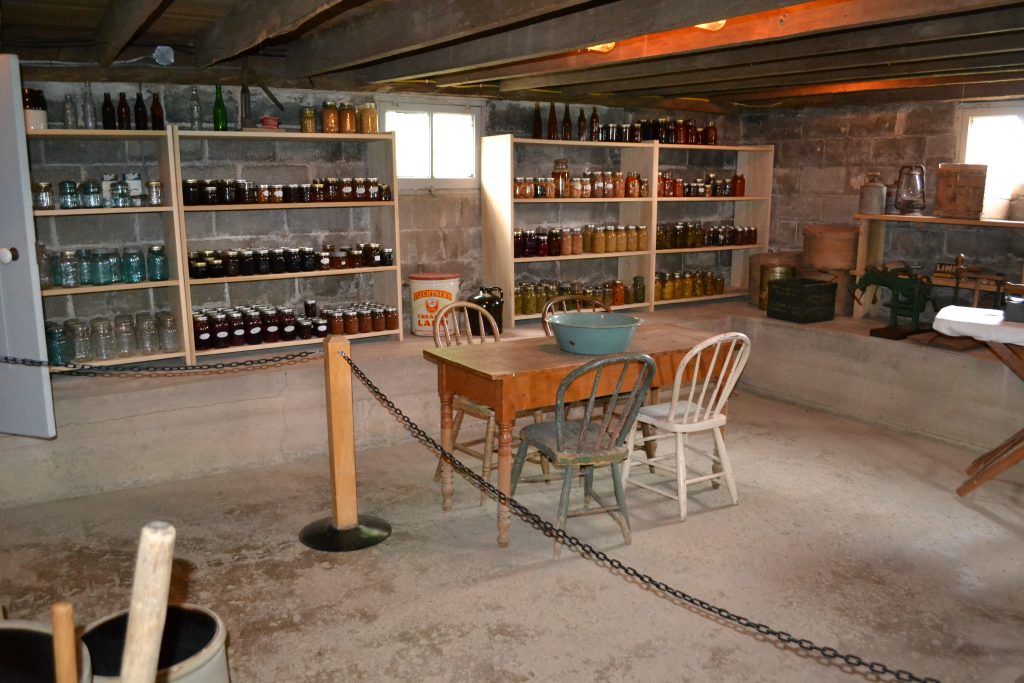
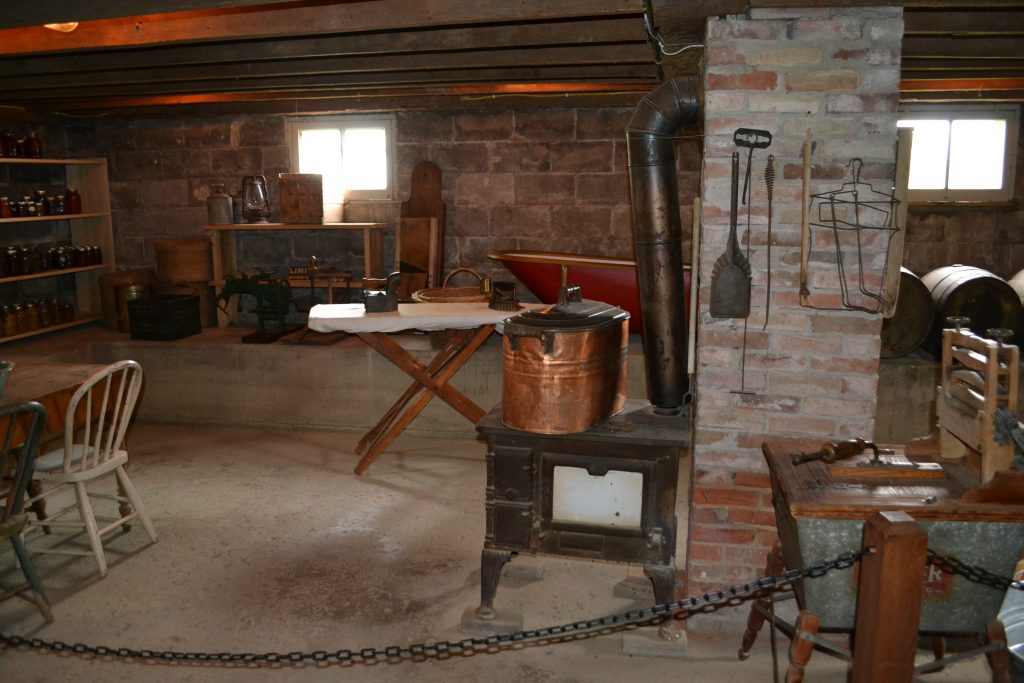
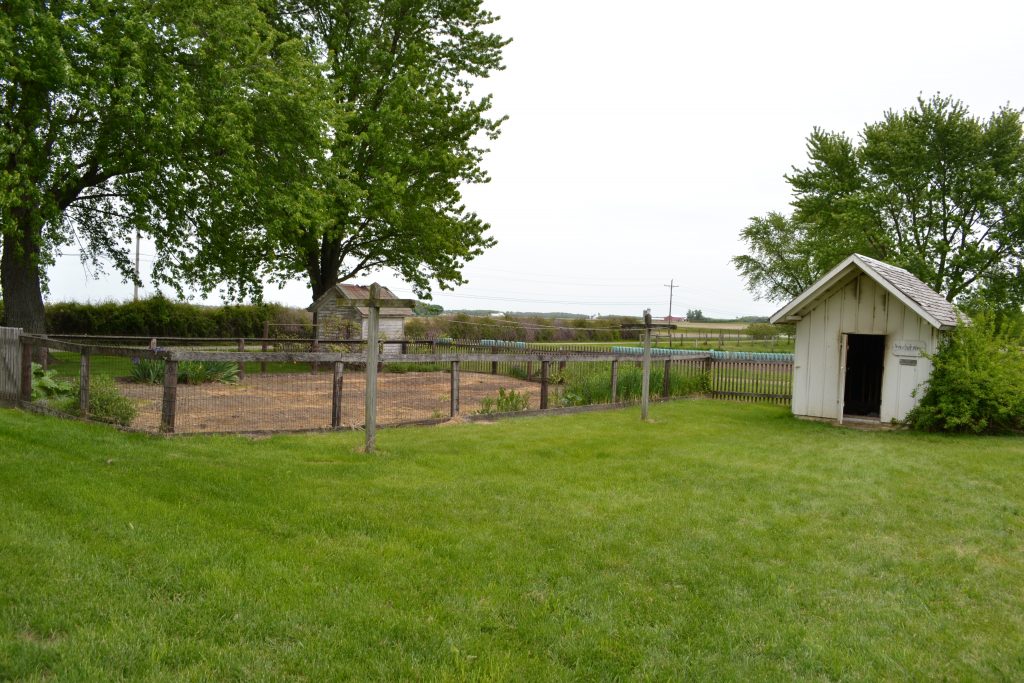
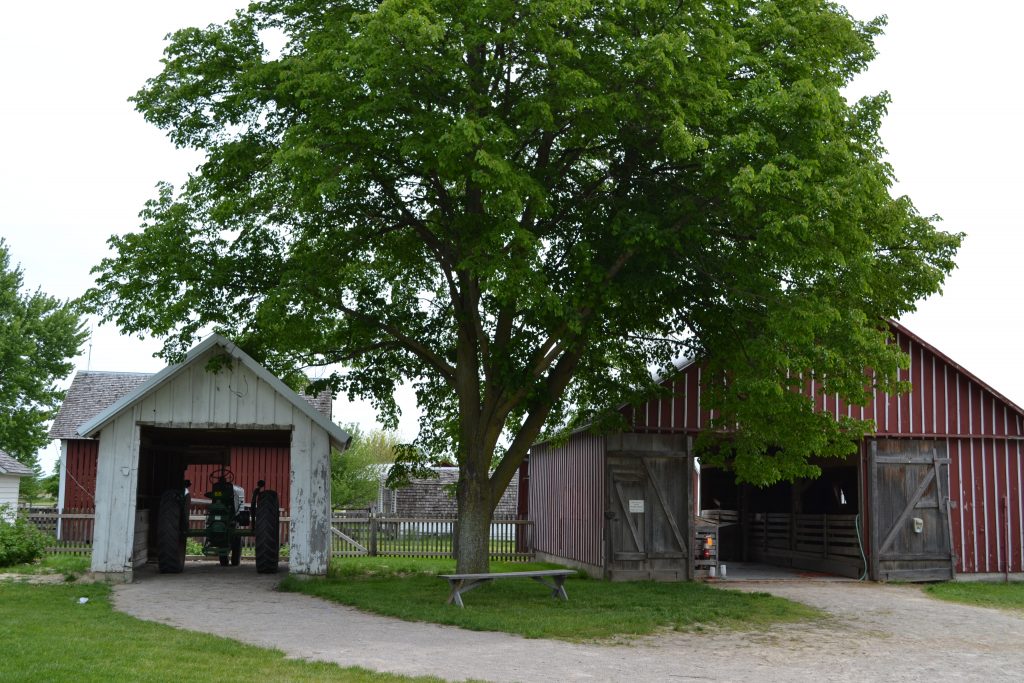
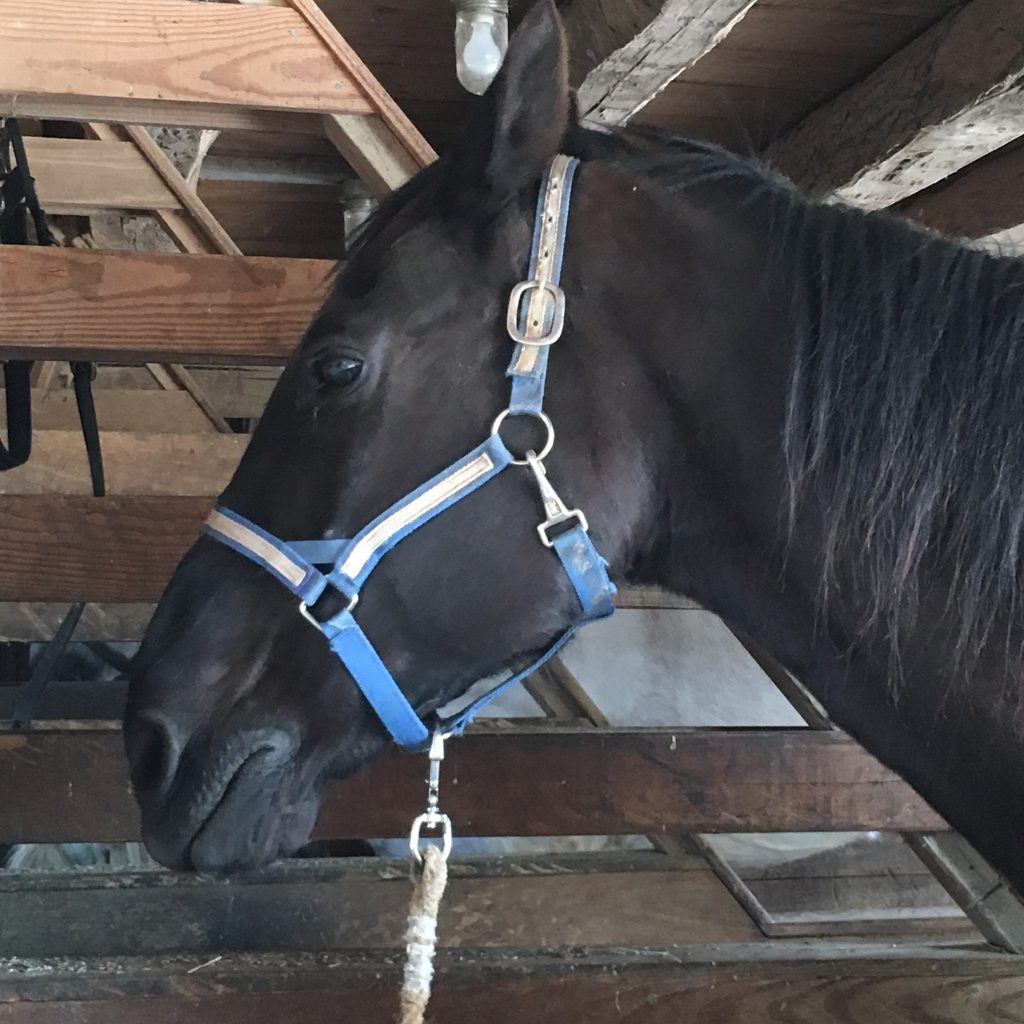
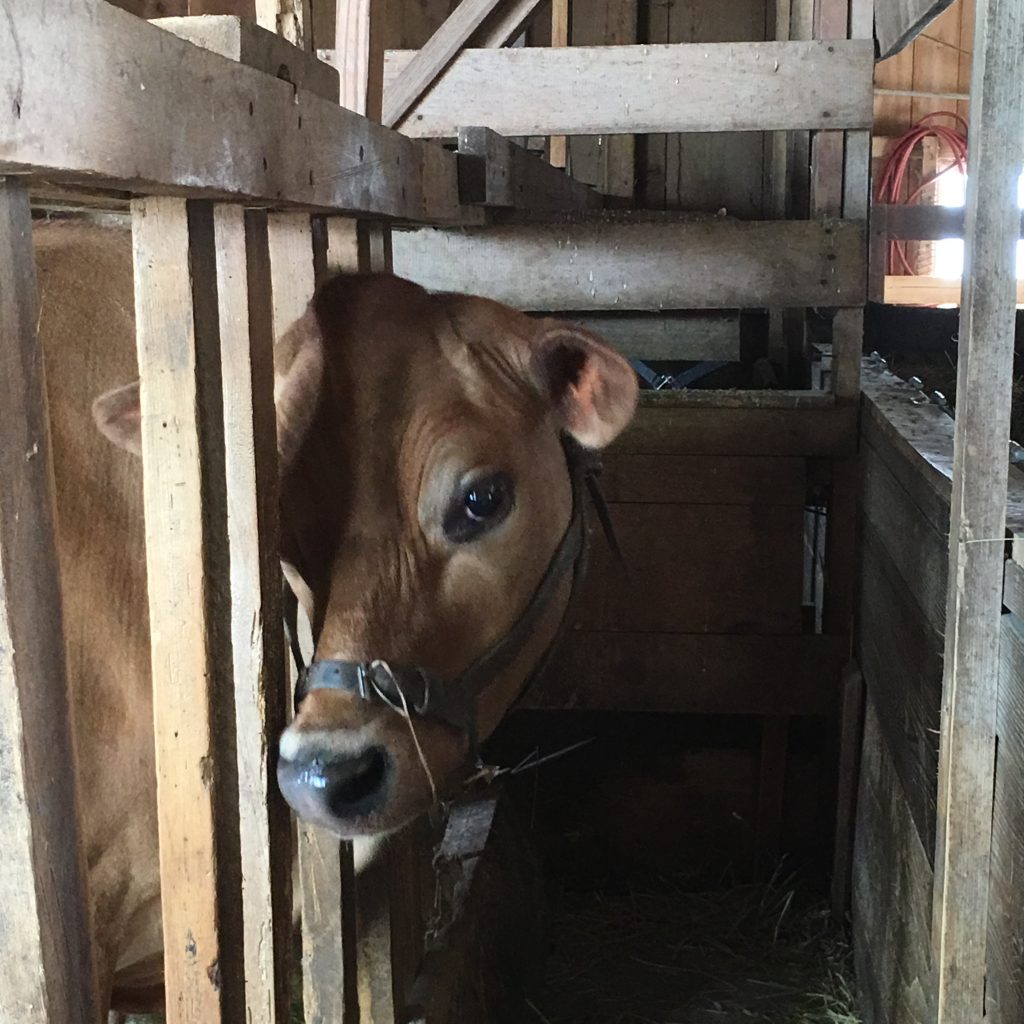

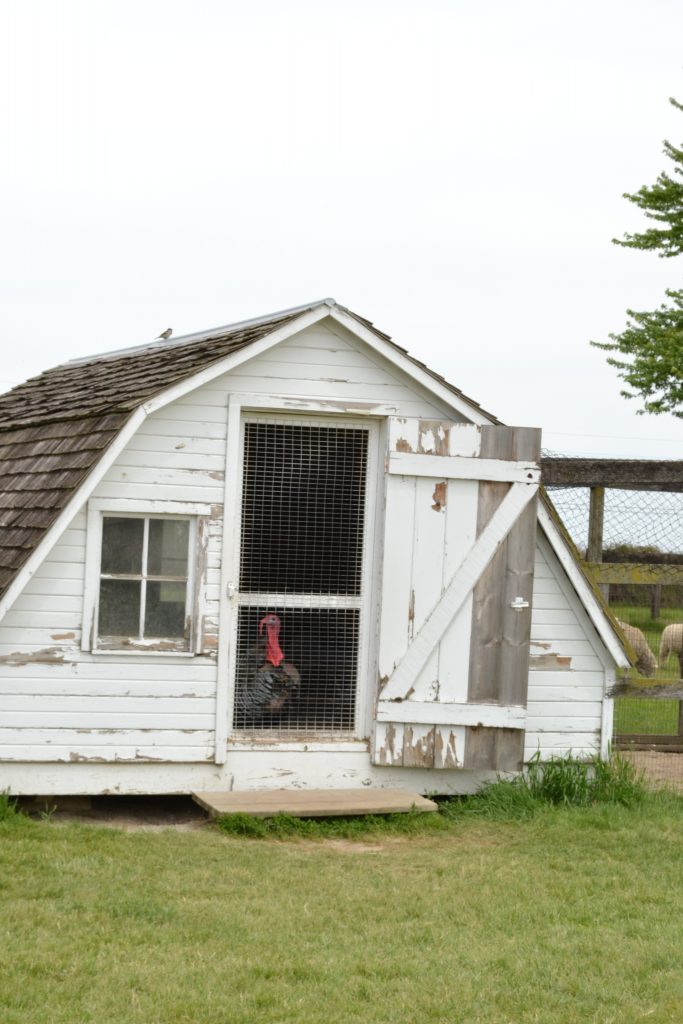
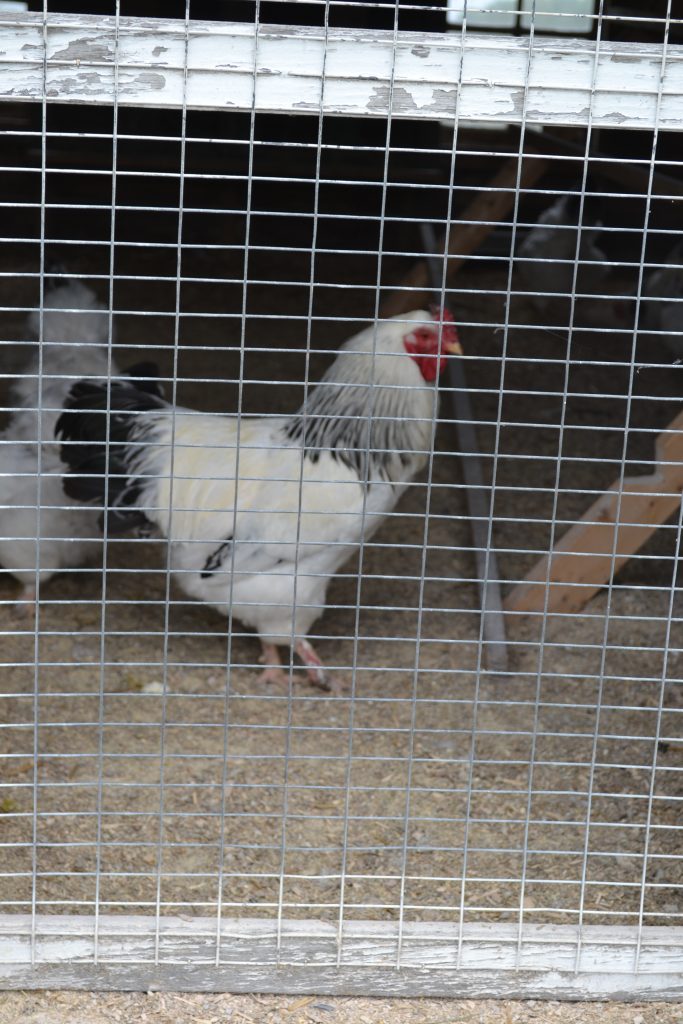
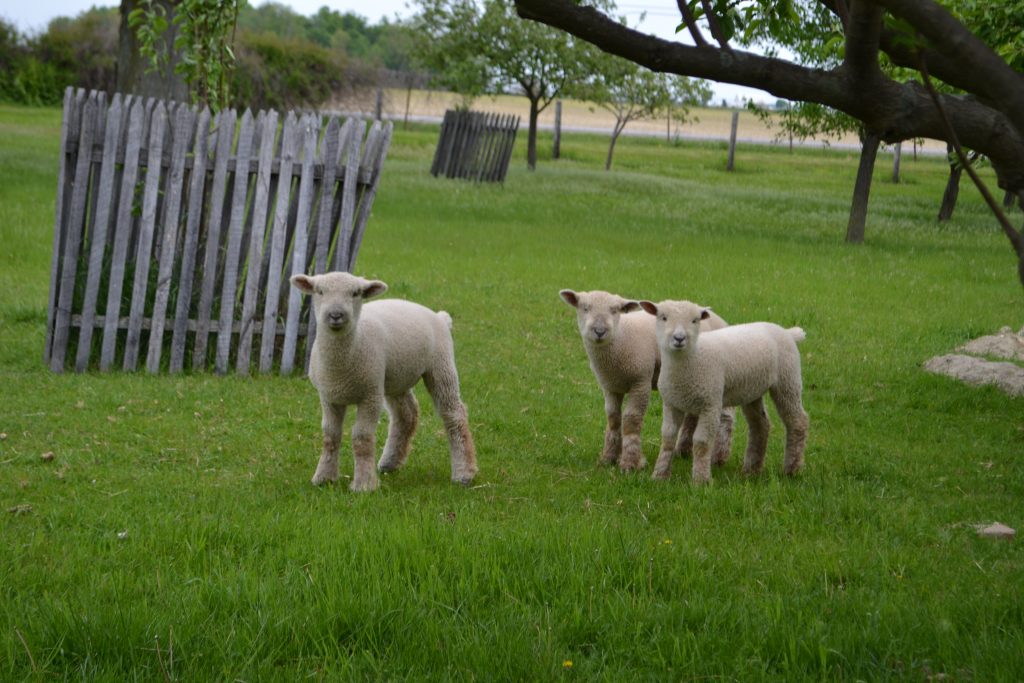
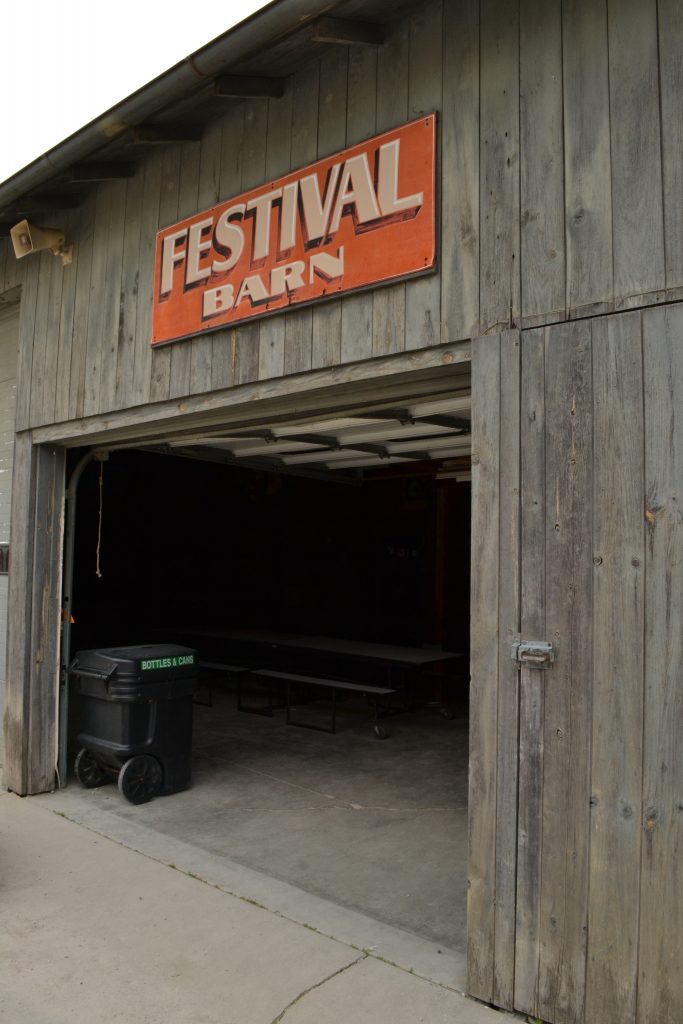
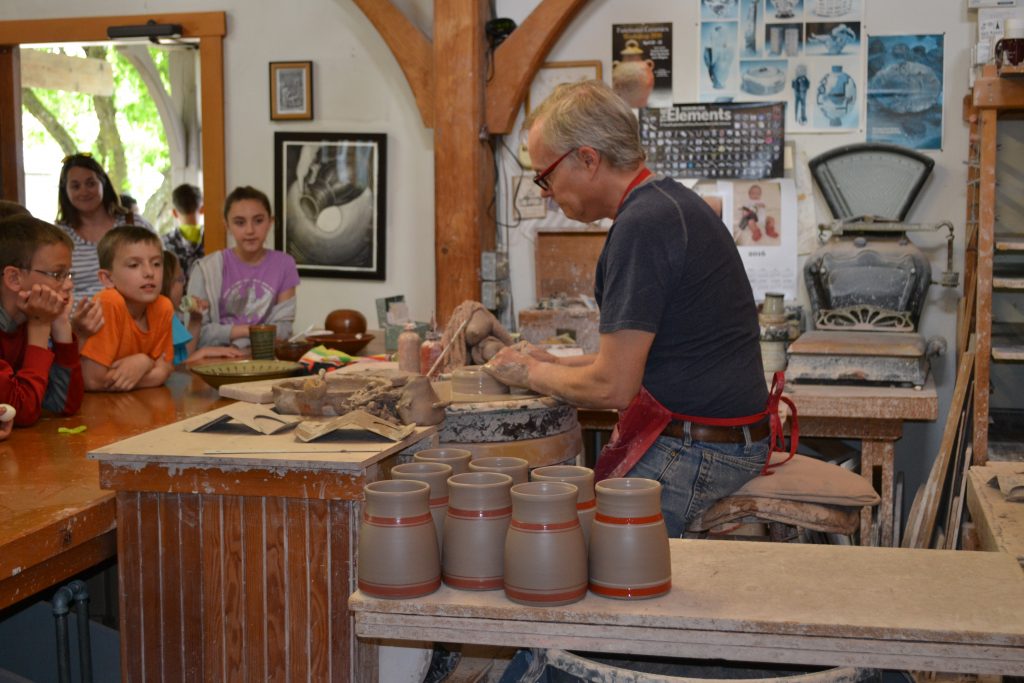
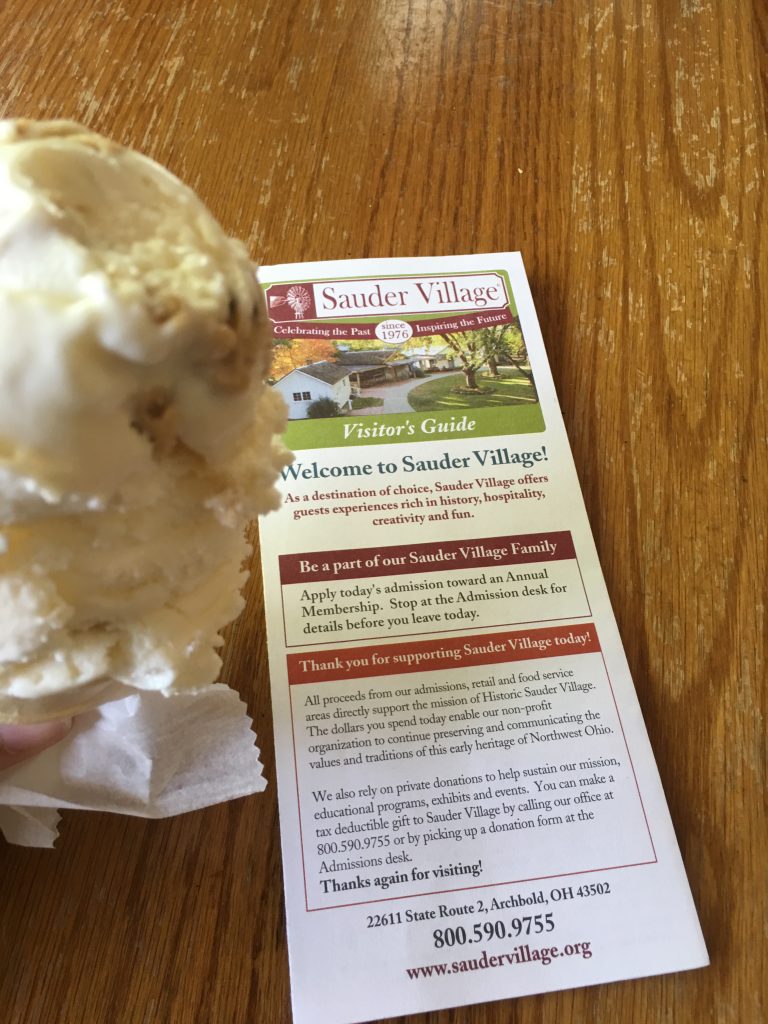
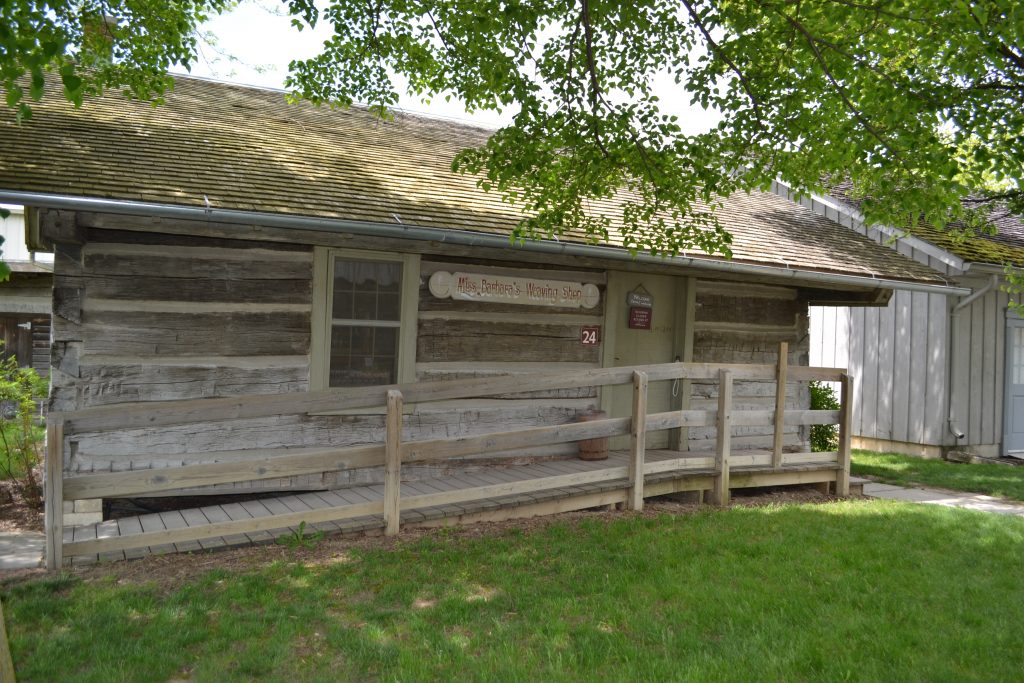
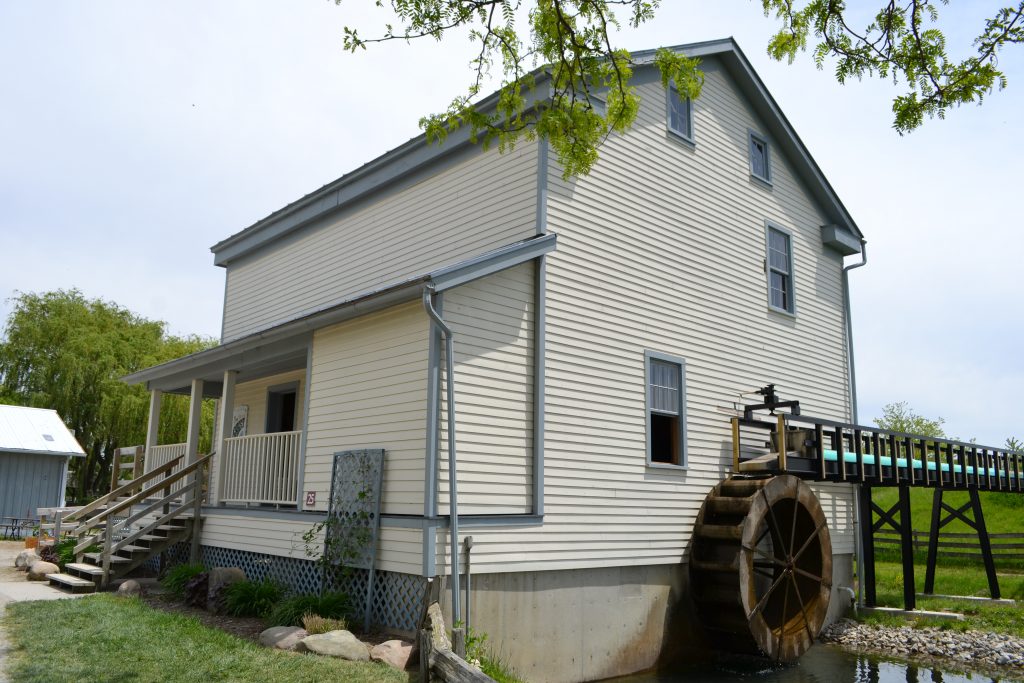
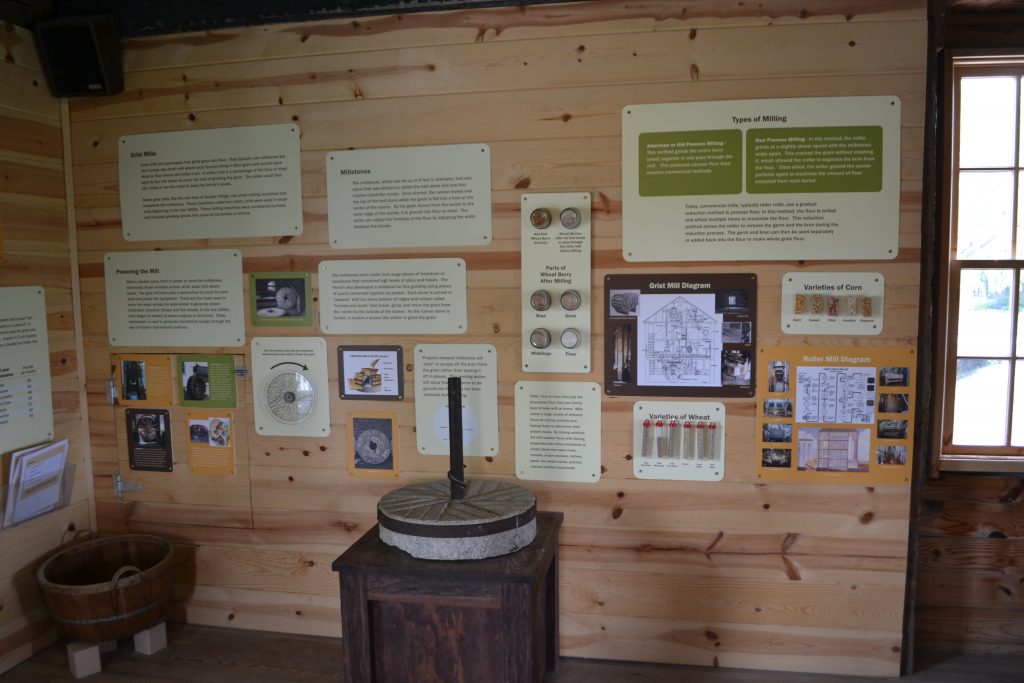
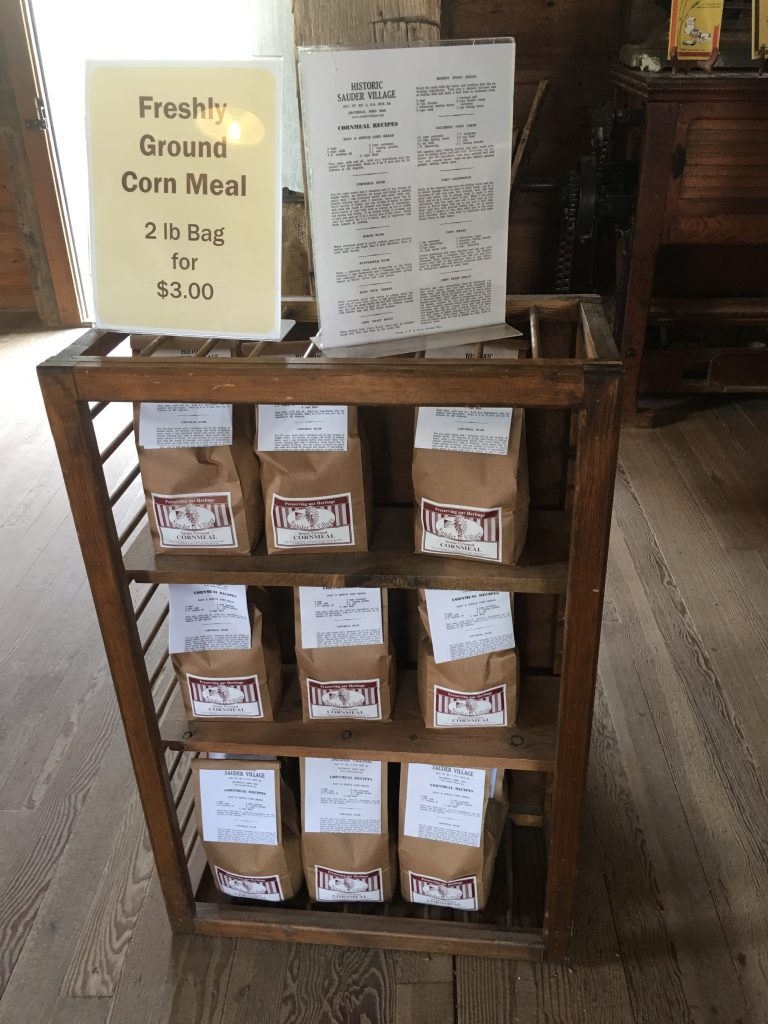
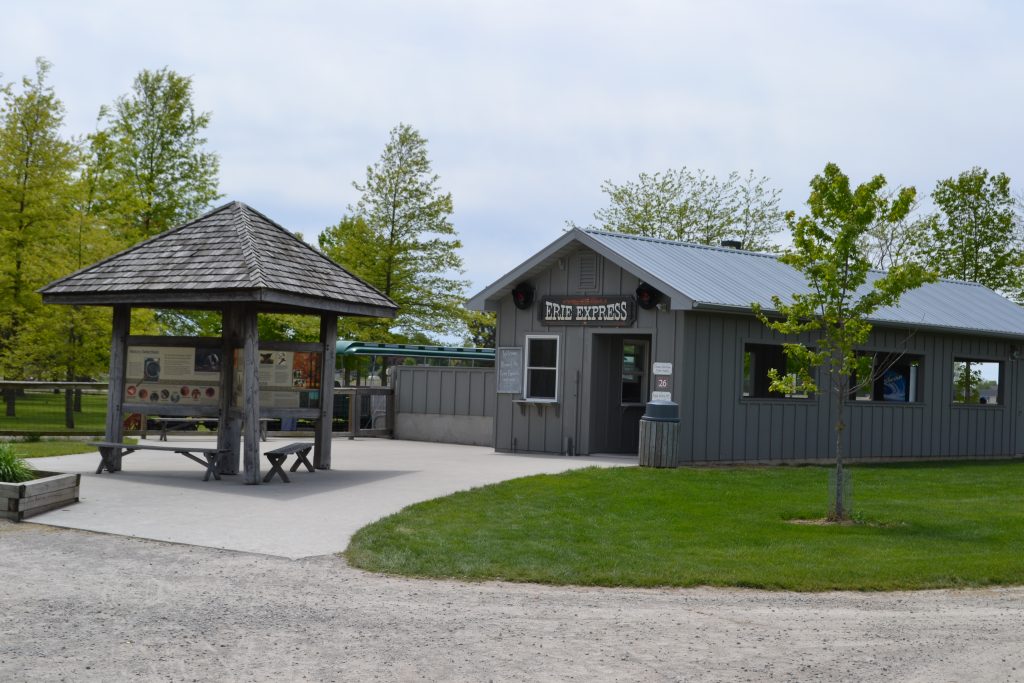
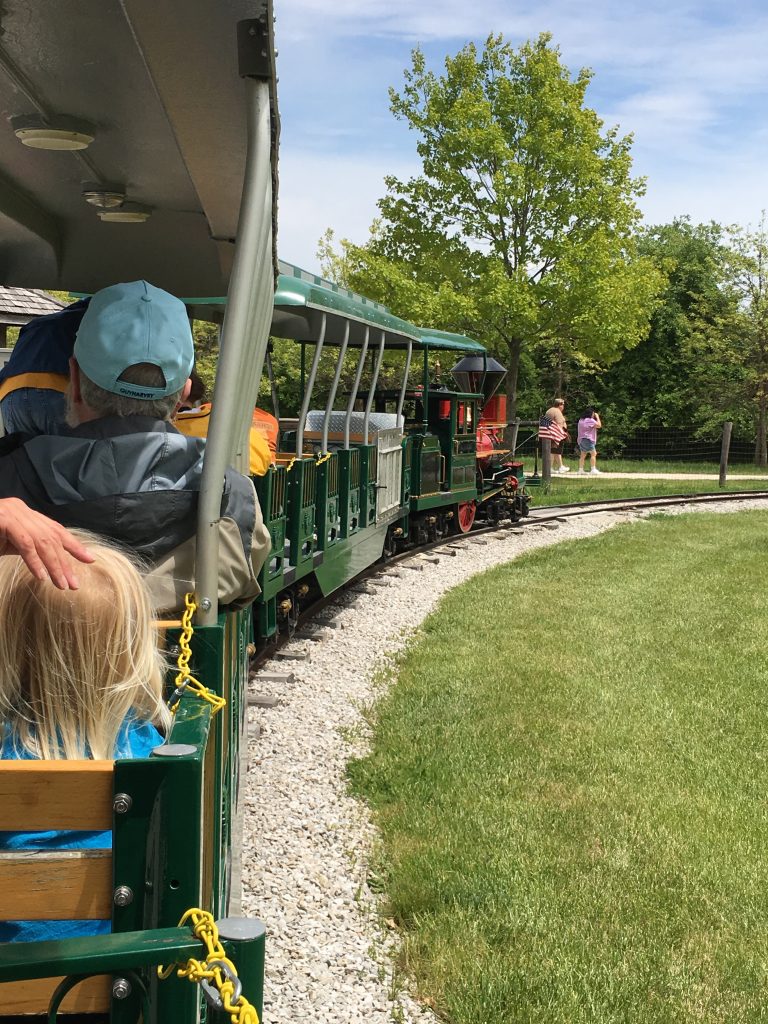
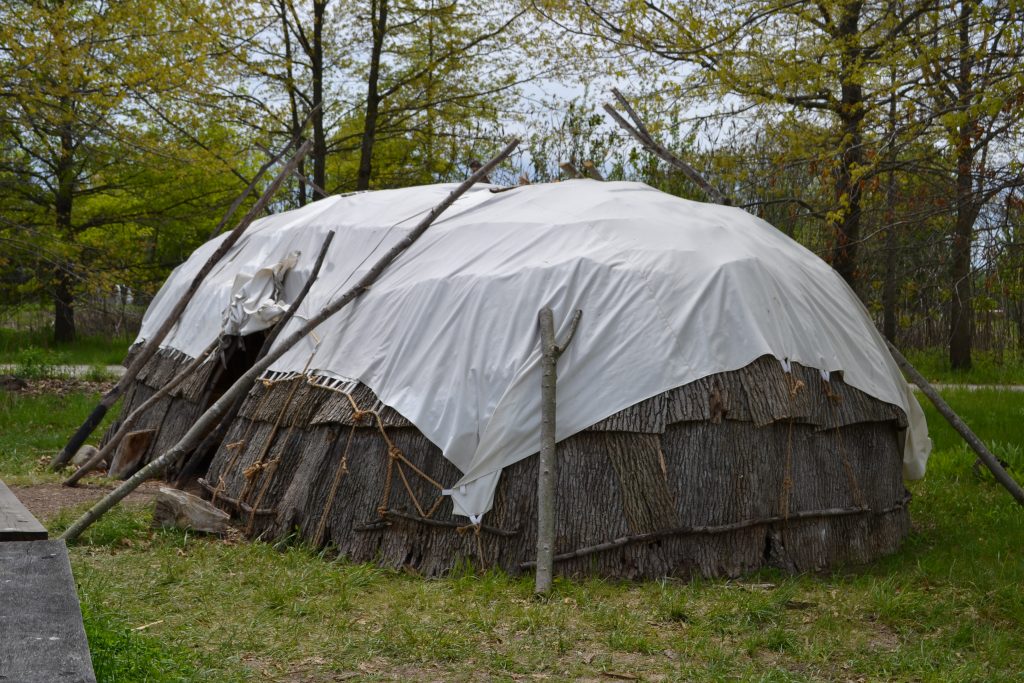
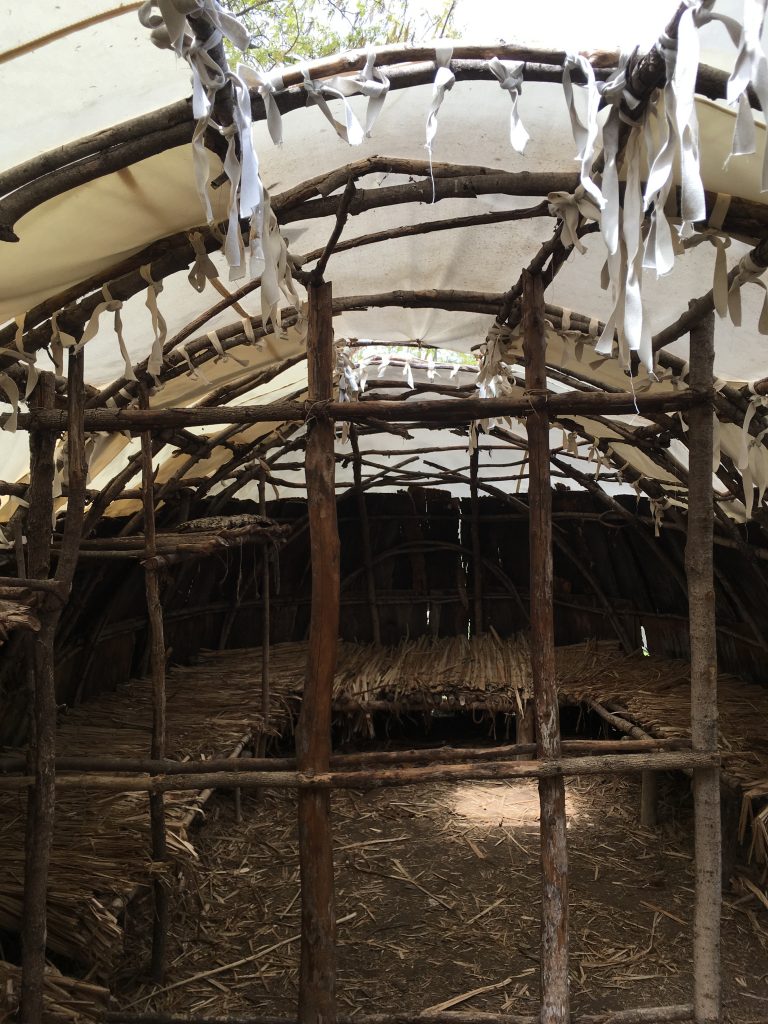
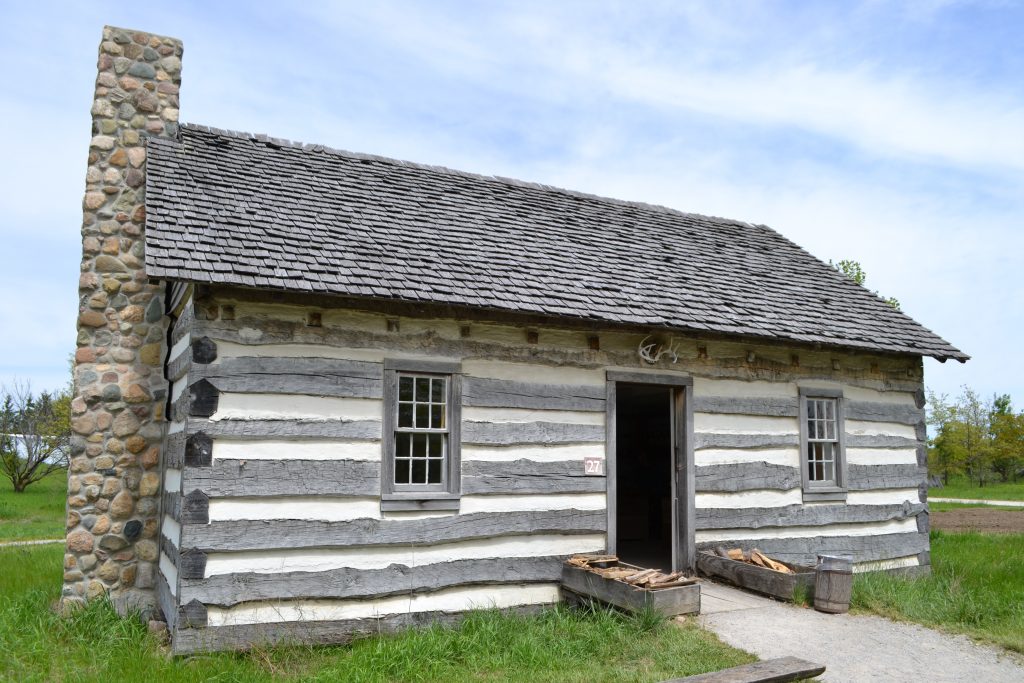
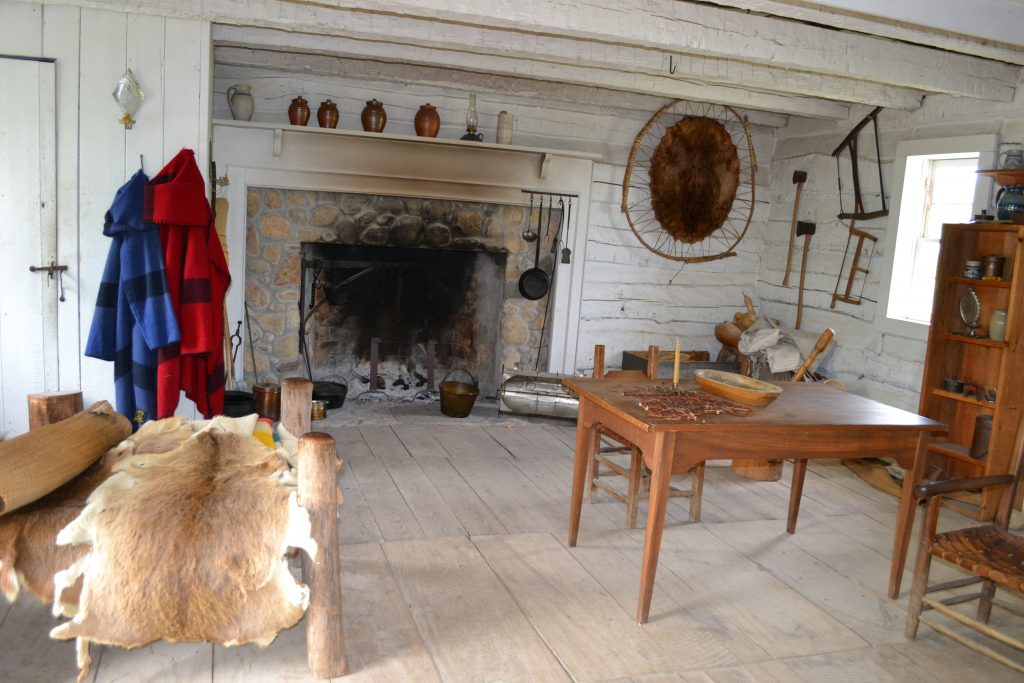
























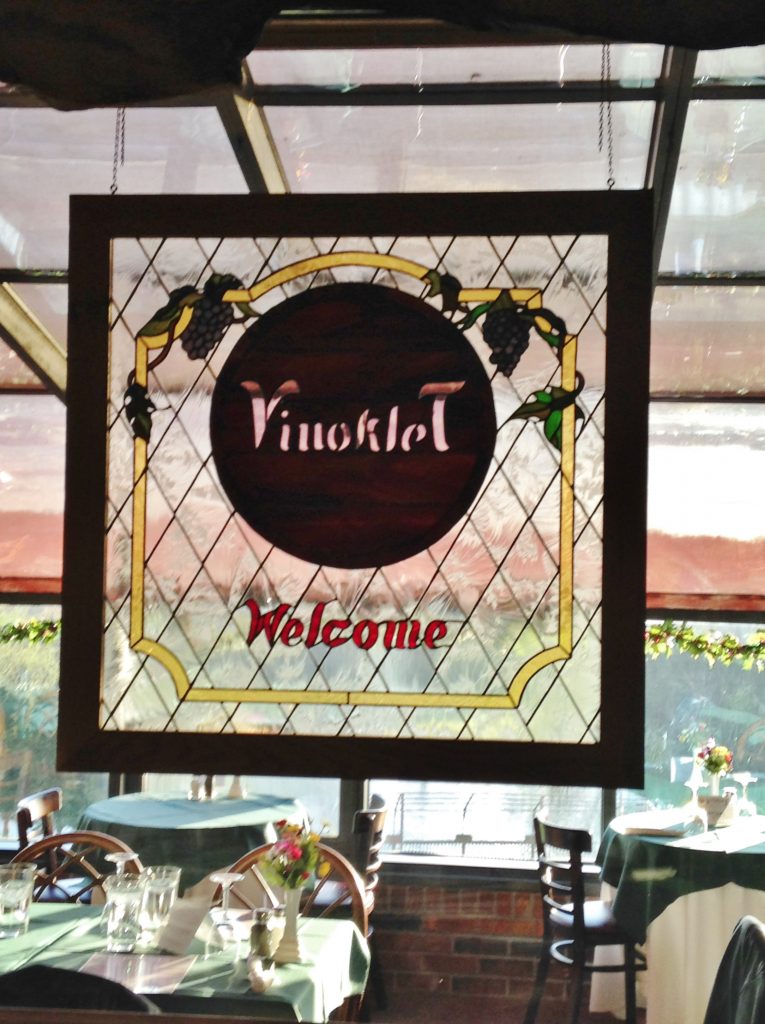
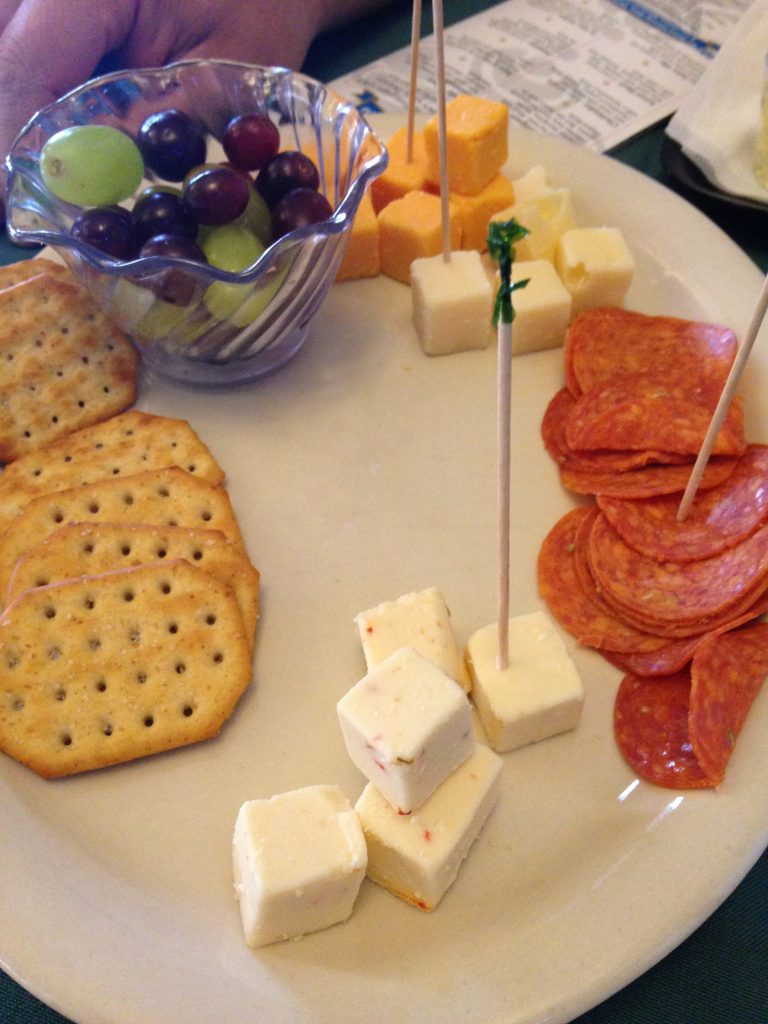
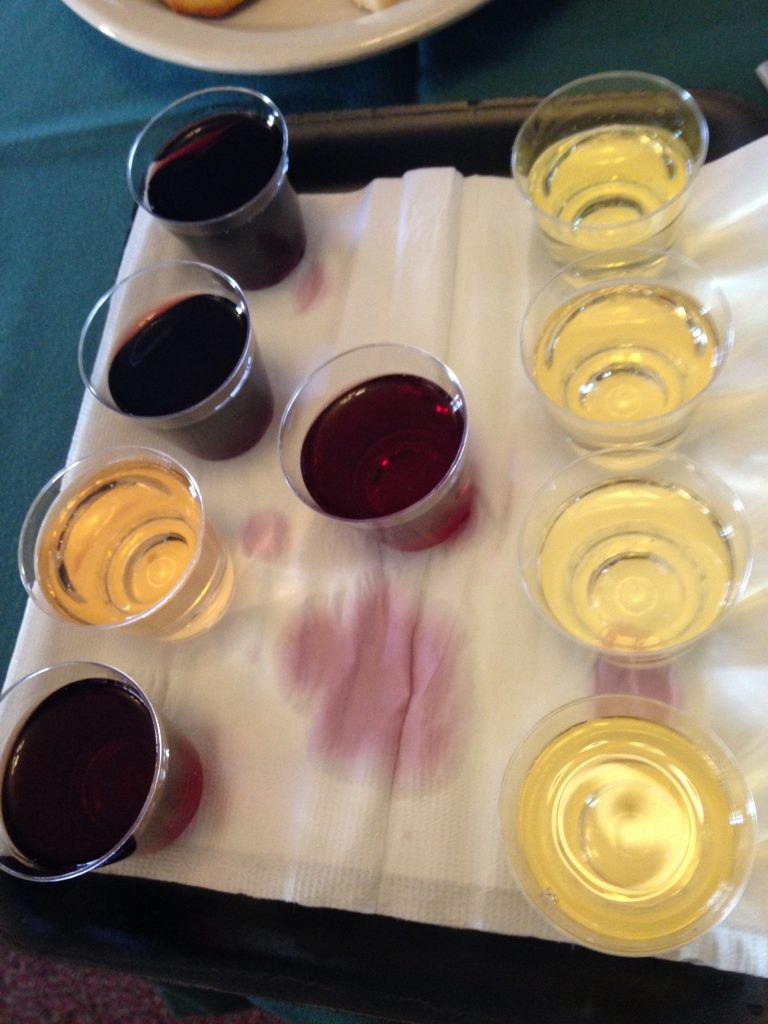
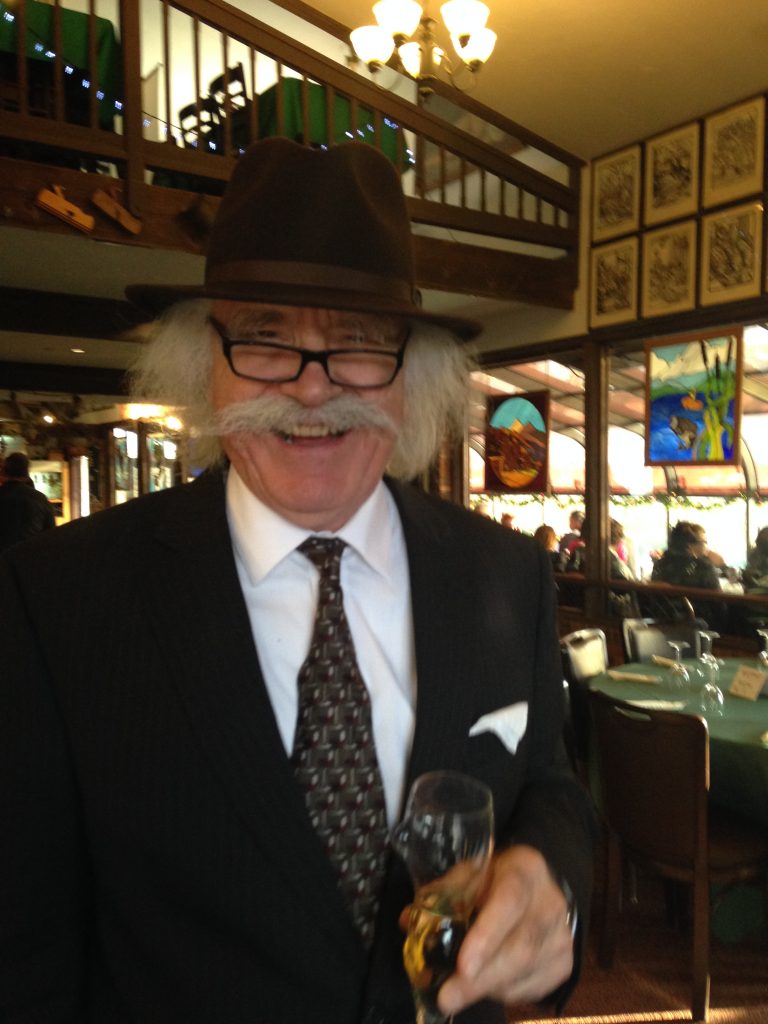
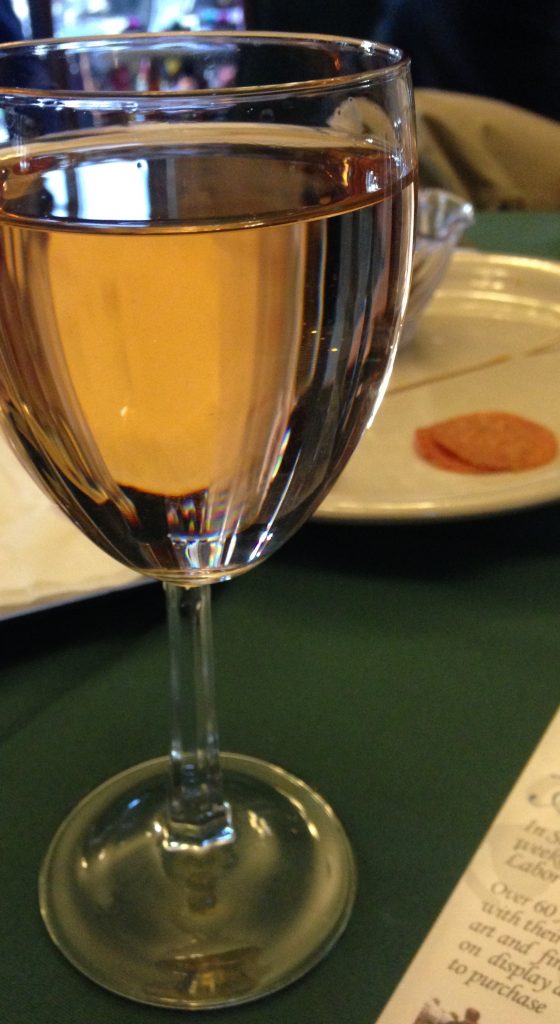
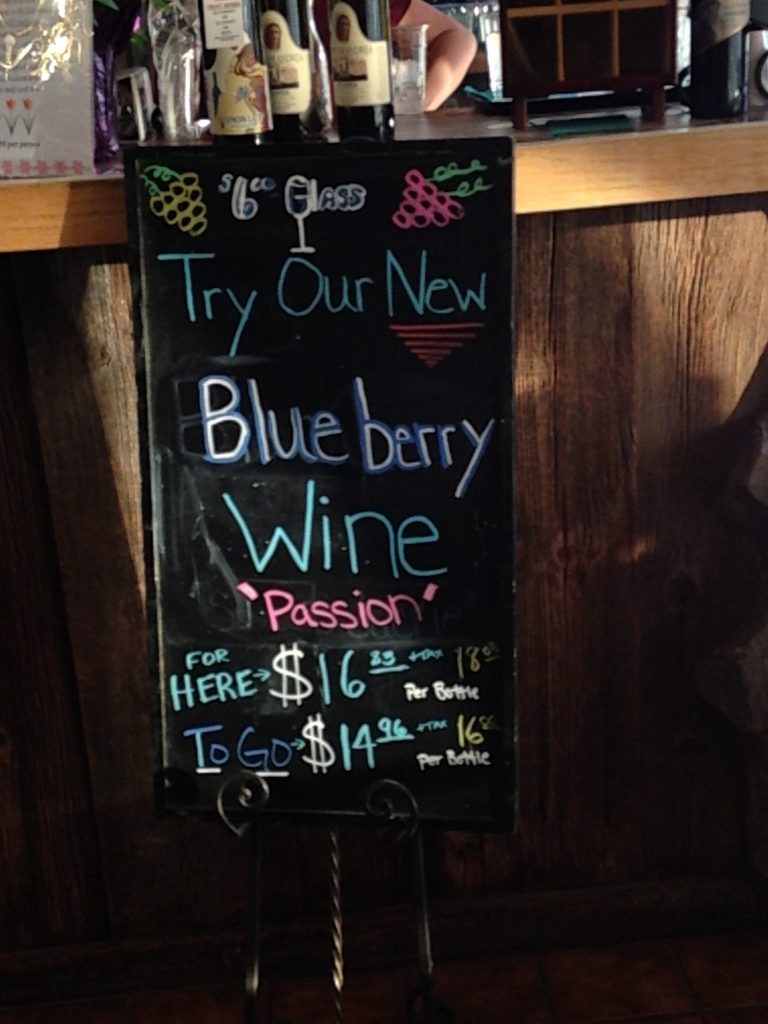
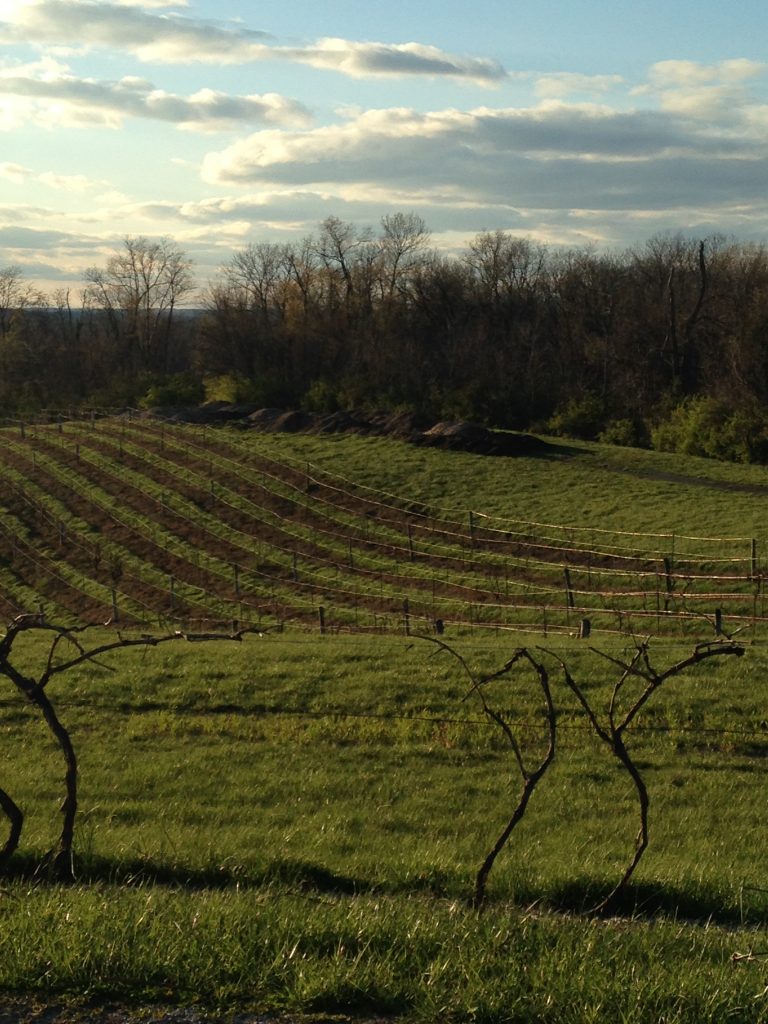
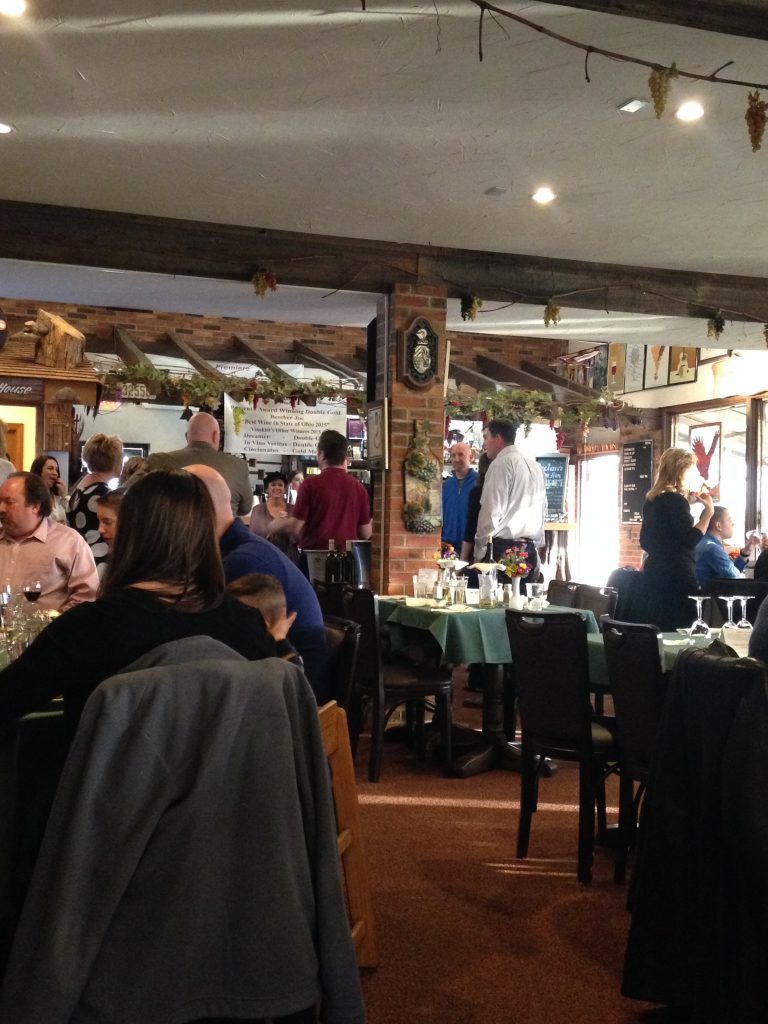
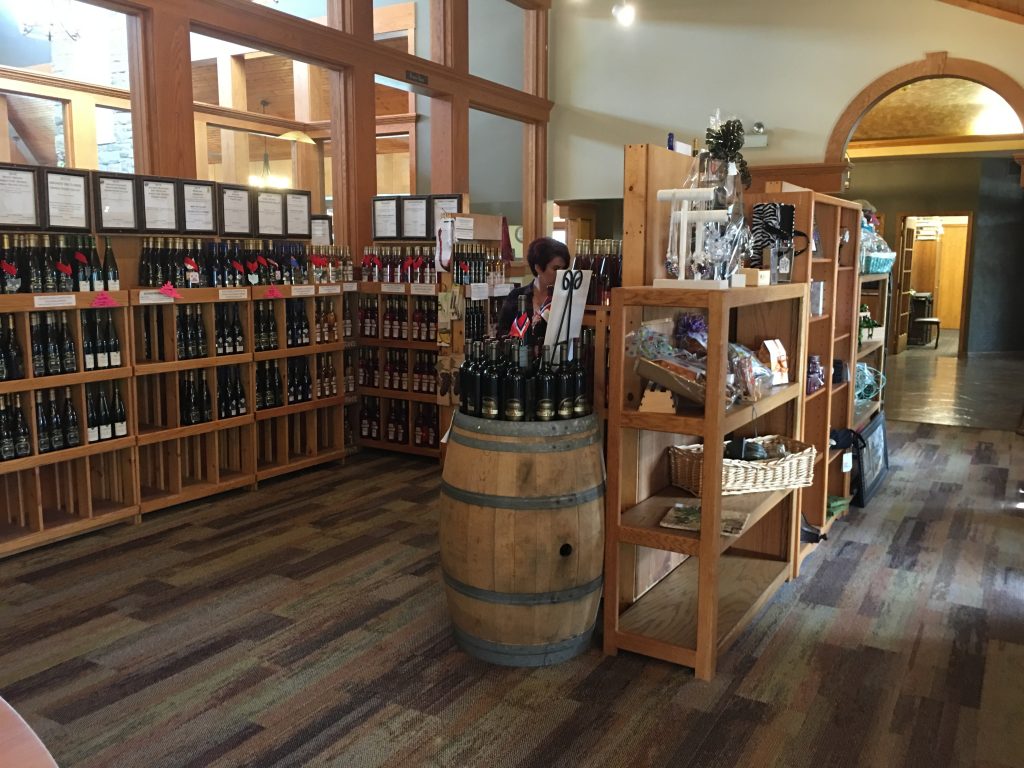 Entering through the French doors at the stone entrance, I immediately noticed that the facility is quite large with plenty of outdoor space amidst endless rows of grapevines. The inside was absolutely gorgeous with a restaurant straight ahead or the tasting room and store to the left. Of course I was drawn to the store with its large selection of wine and beautiful flooring with multicolor slats. Close by was the wine bar, so after reviewing the wide selection of products, I placed my order for my wine tasting and caught up with the server, who was restocking the wine for the day.
Entering through the French doors at the stone entrance, I immediately noticed that the facility is quite large with plenty of outdoor space amidst endless rows of grapevines. The inside was absolutely gorgeous with a restaurant straight ahead or the tasting room and store to the left. Of course I was drawn to the store with its large selection of wine and beautiful flooring with multicolor slats. Close by was the wine bar, so after reviewing the wide selection of products, I placed my order for my wine tasting and caught up with the server, who was restocking the wine for the day.